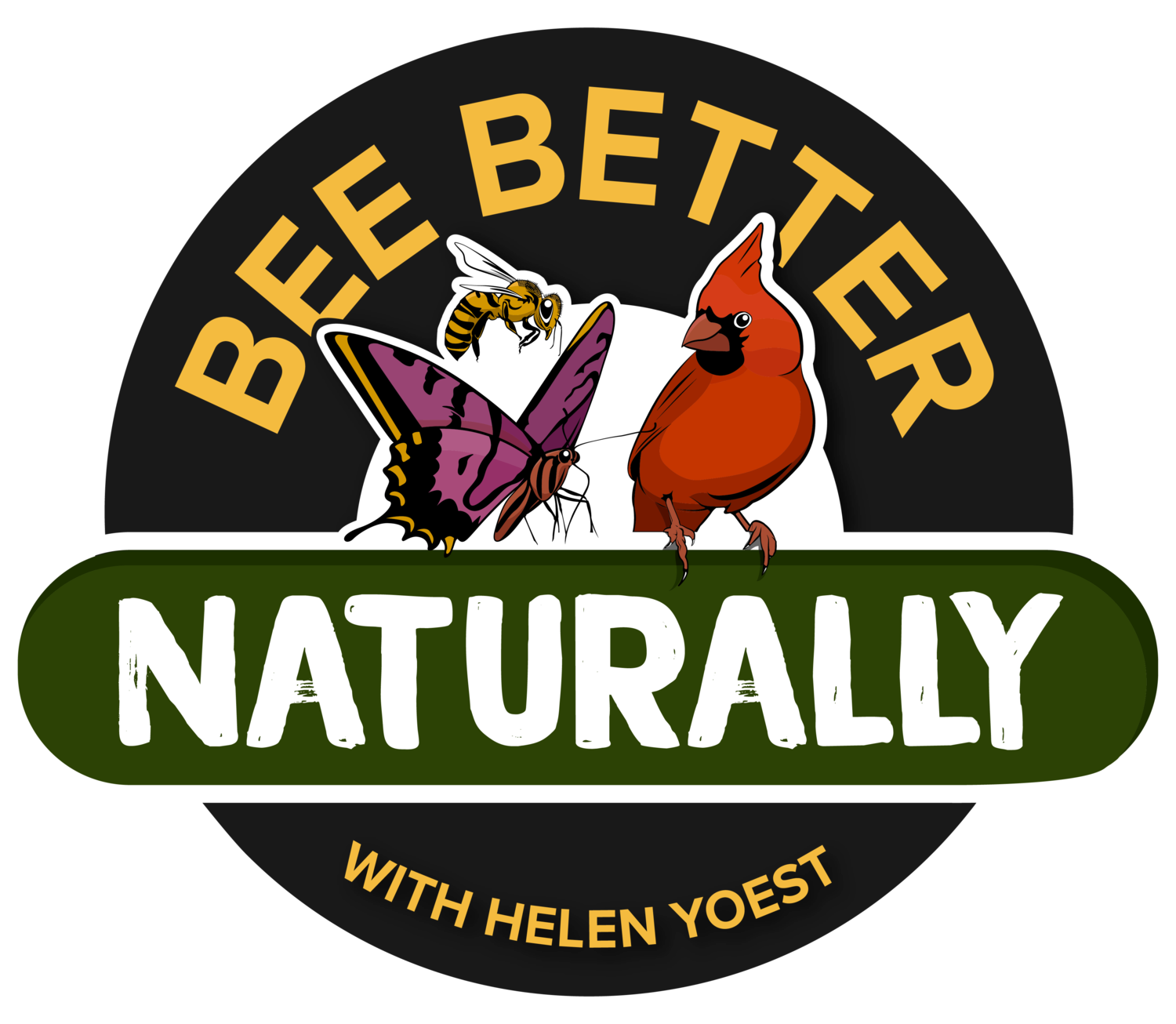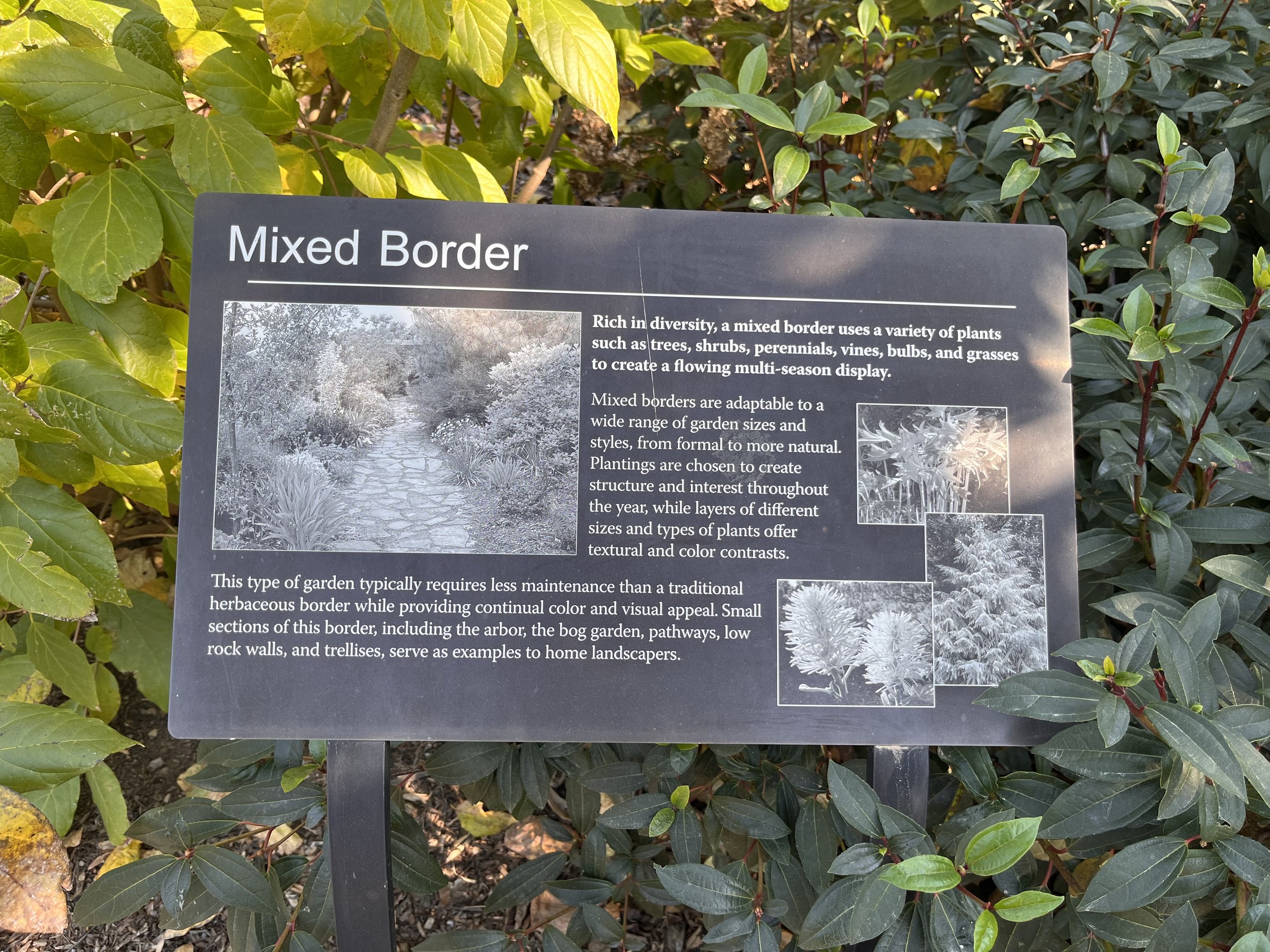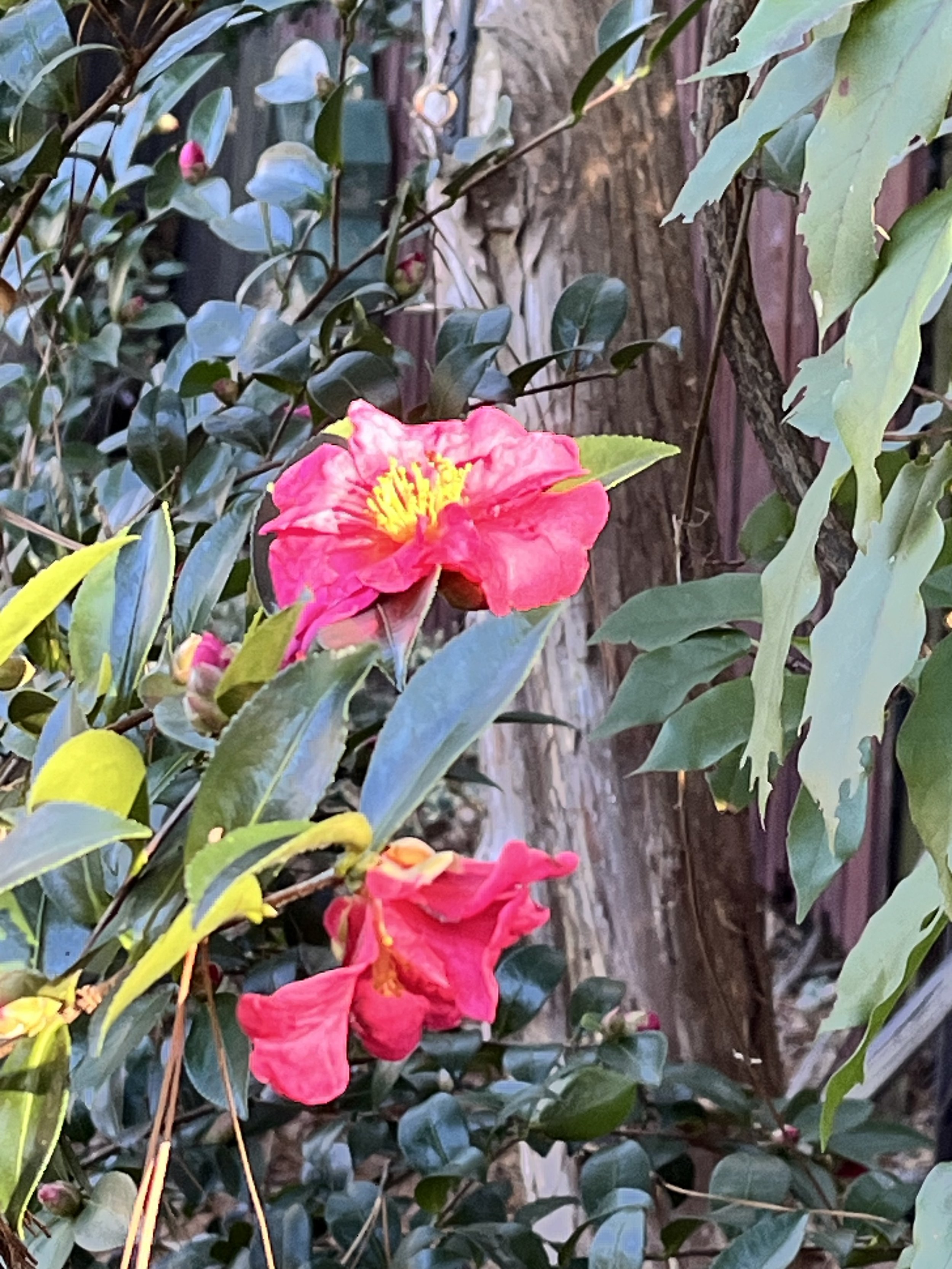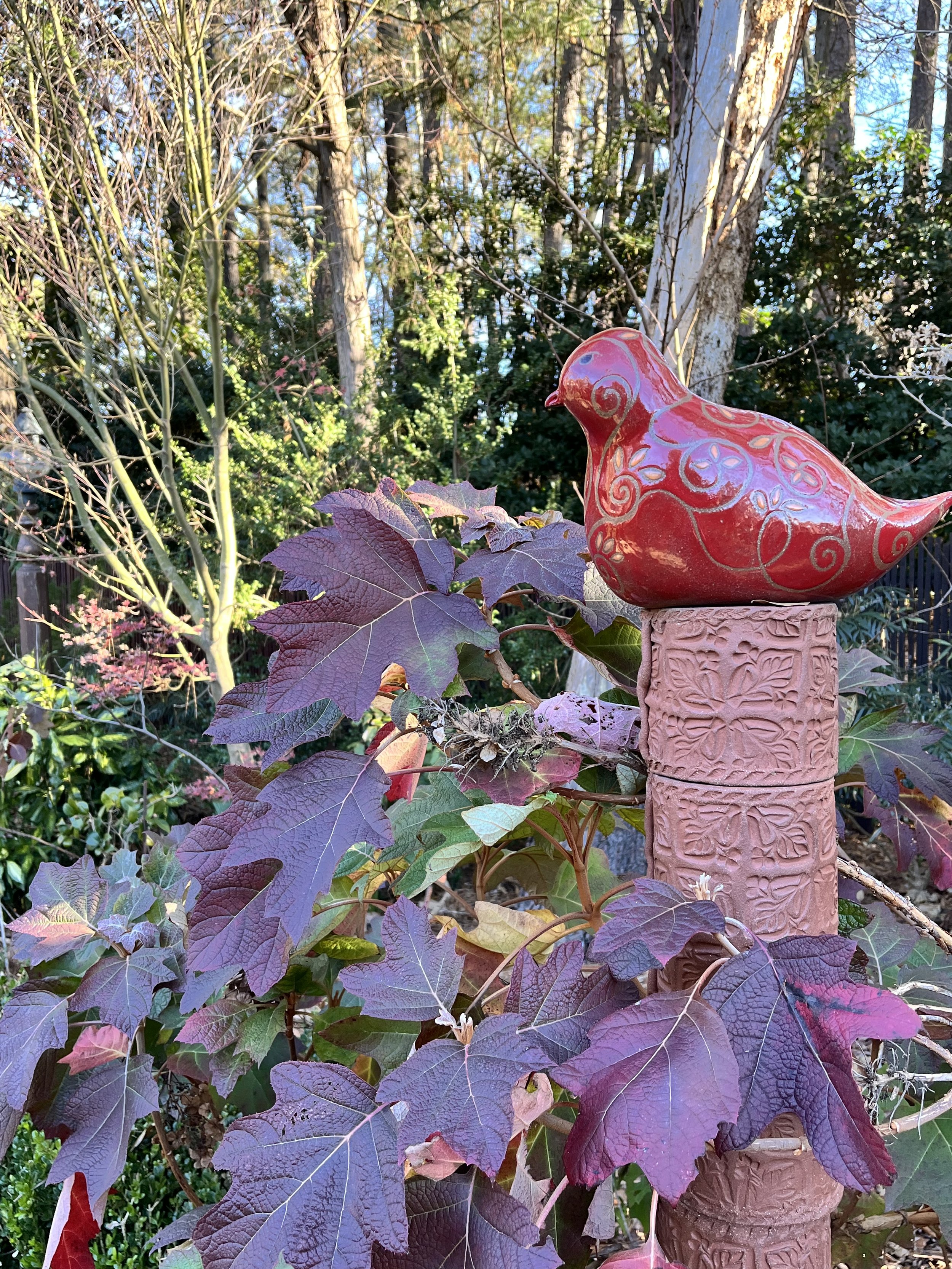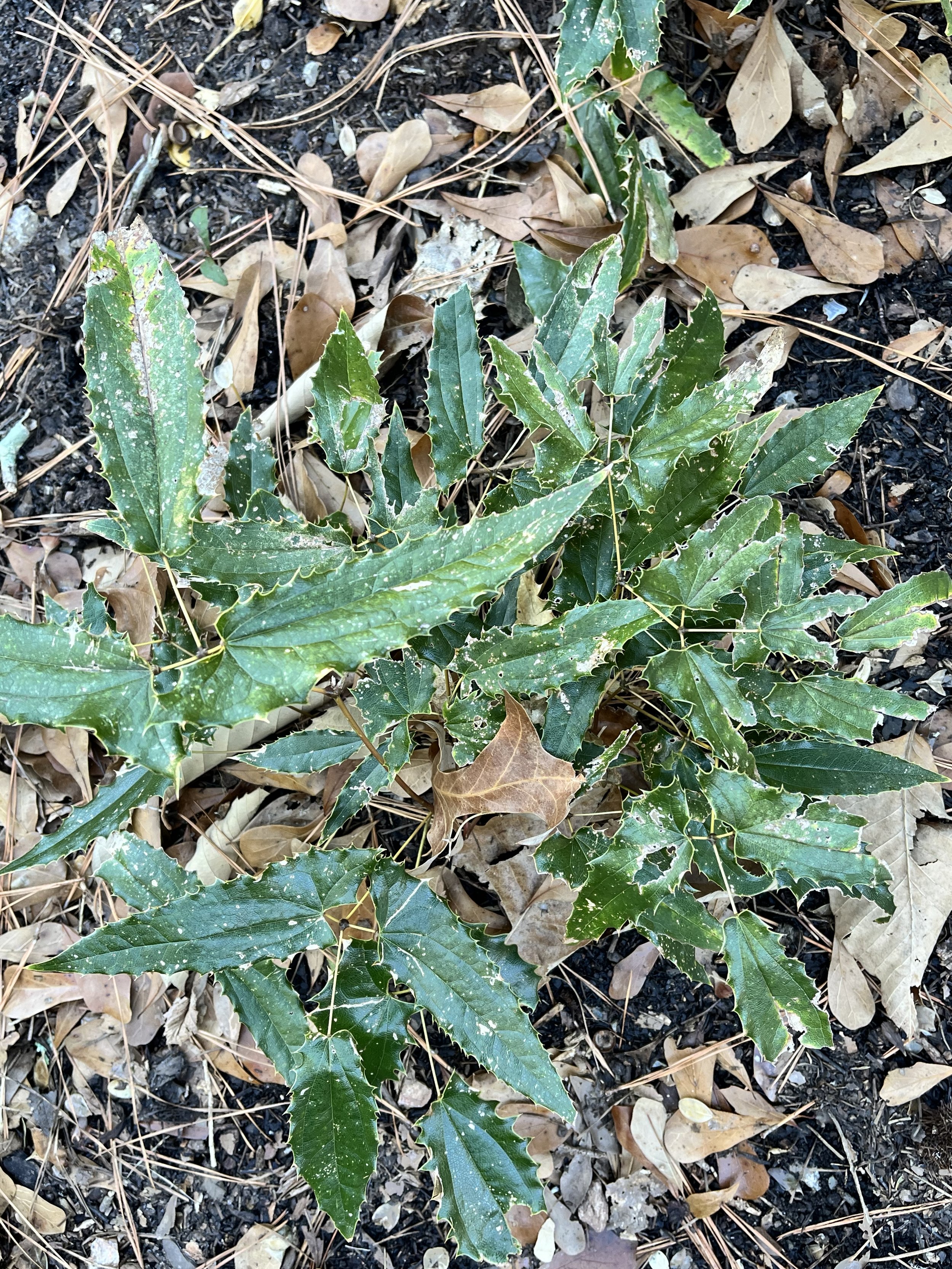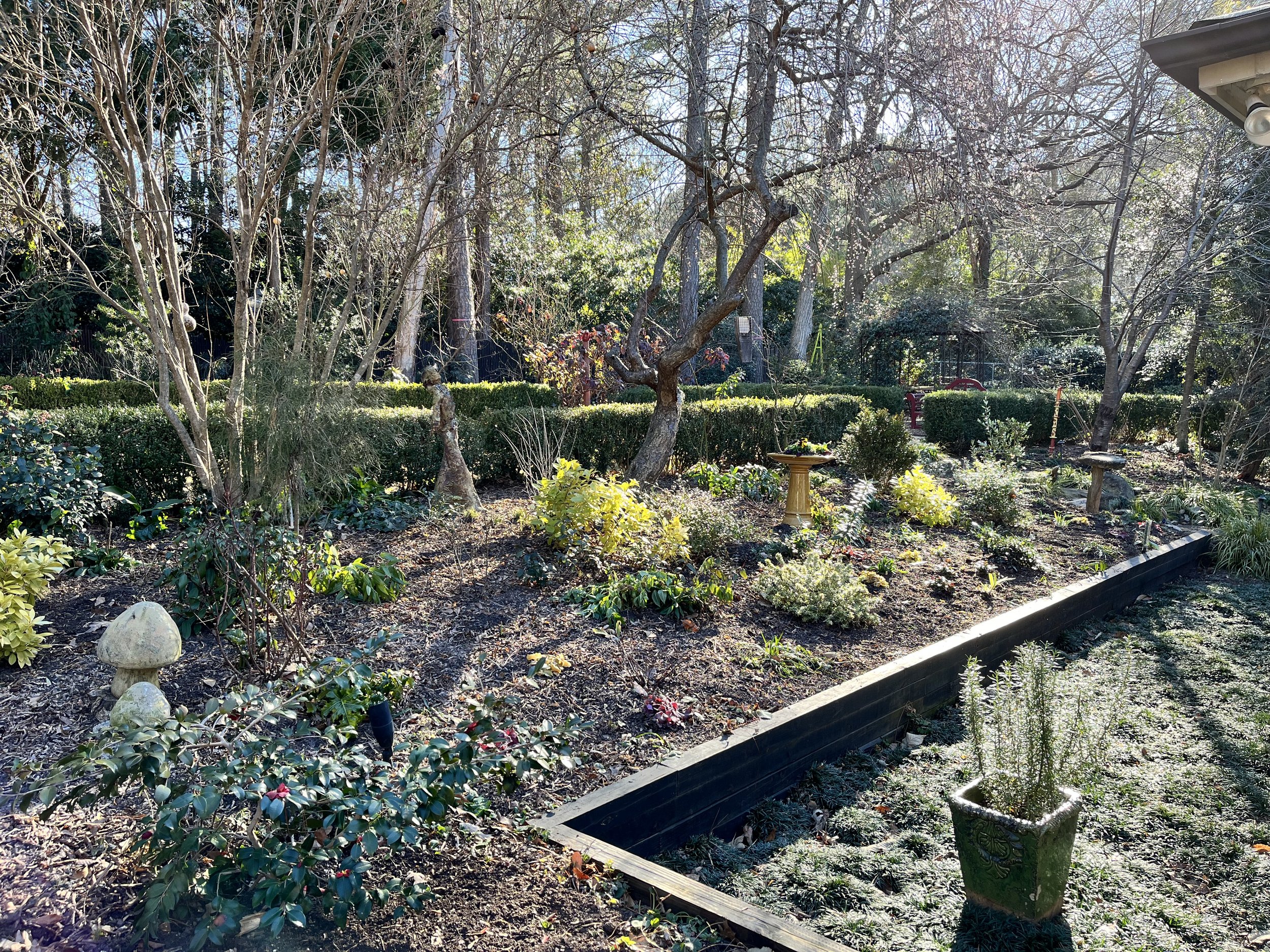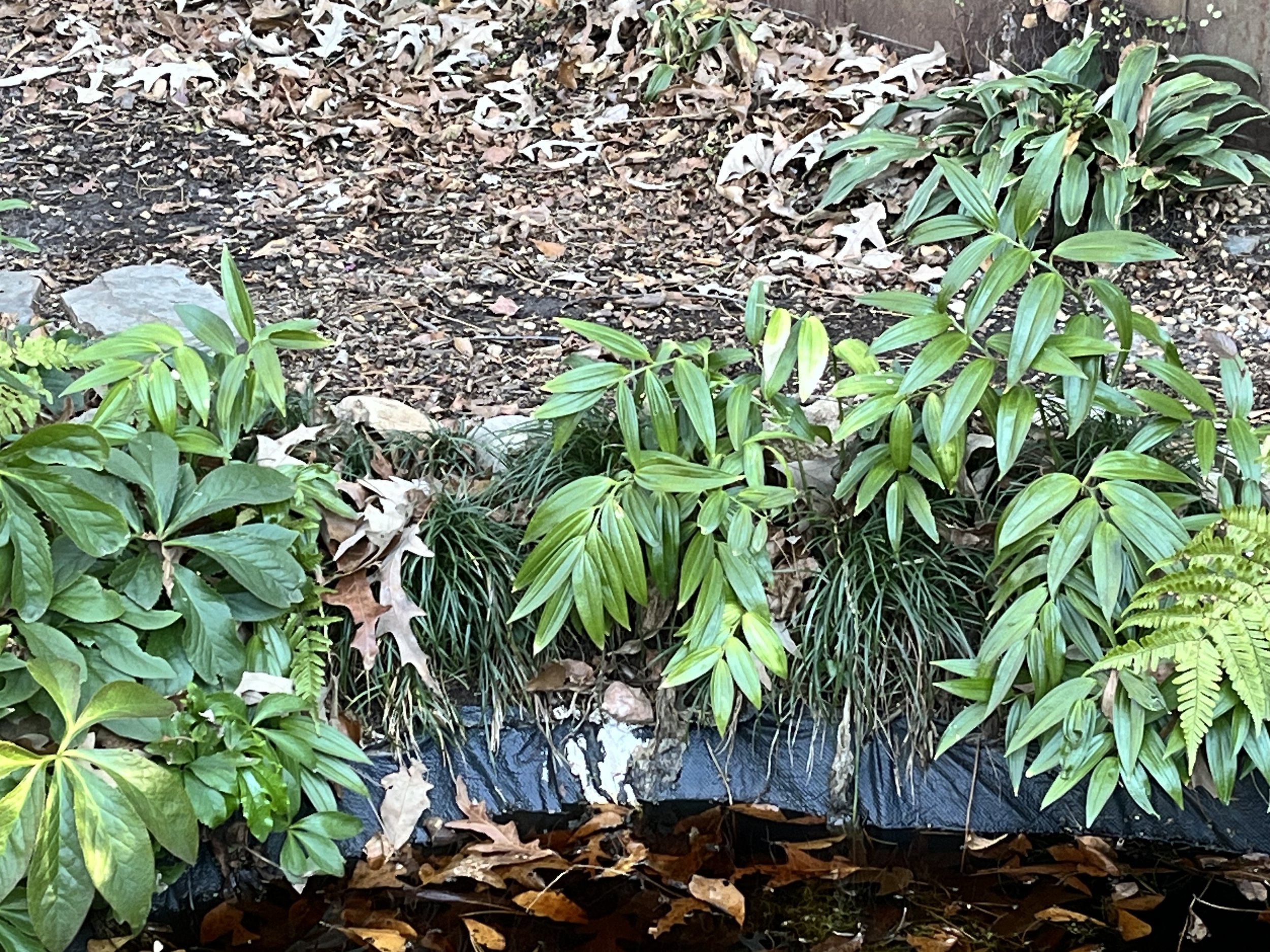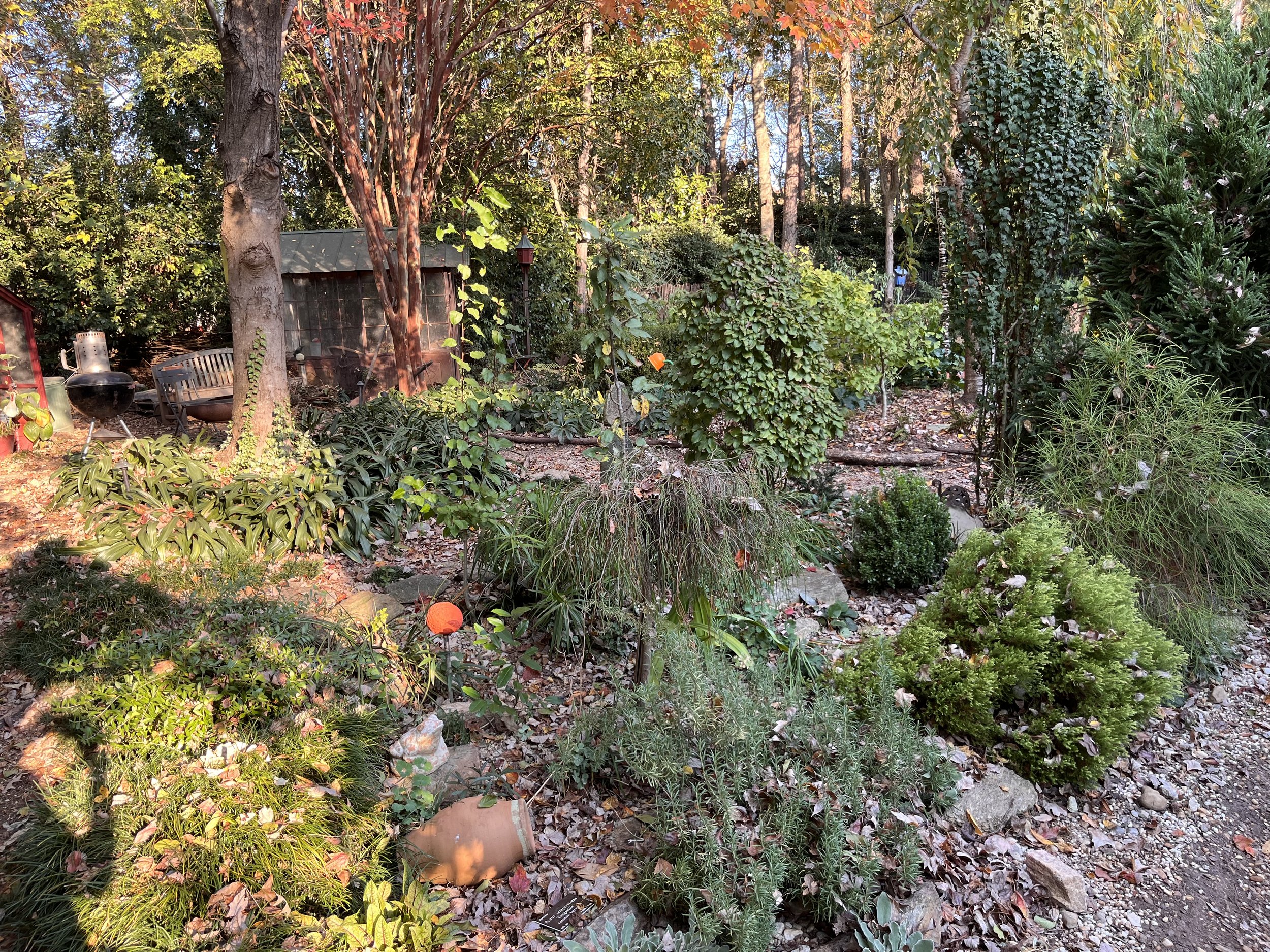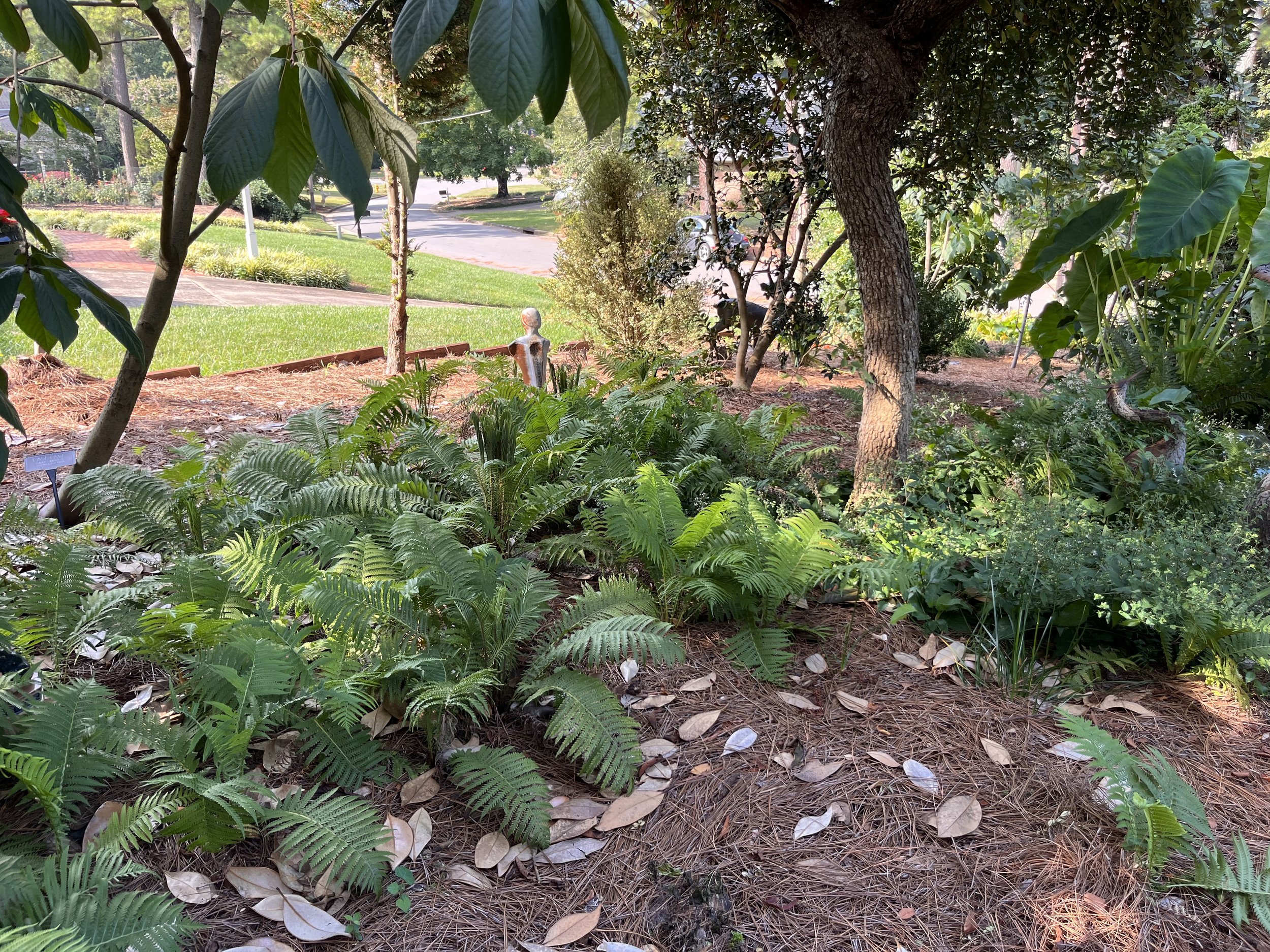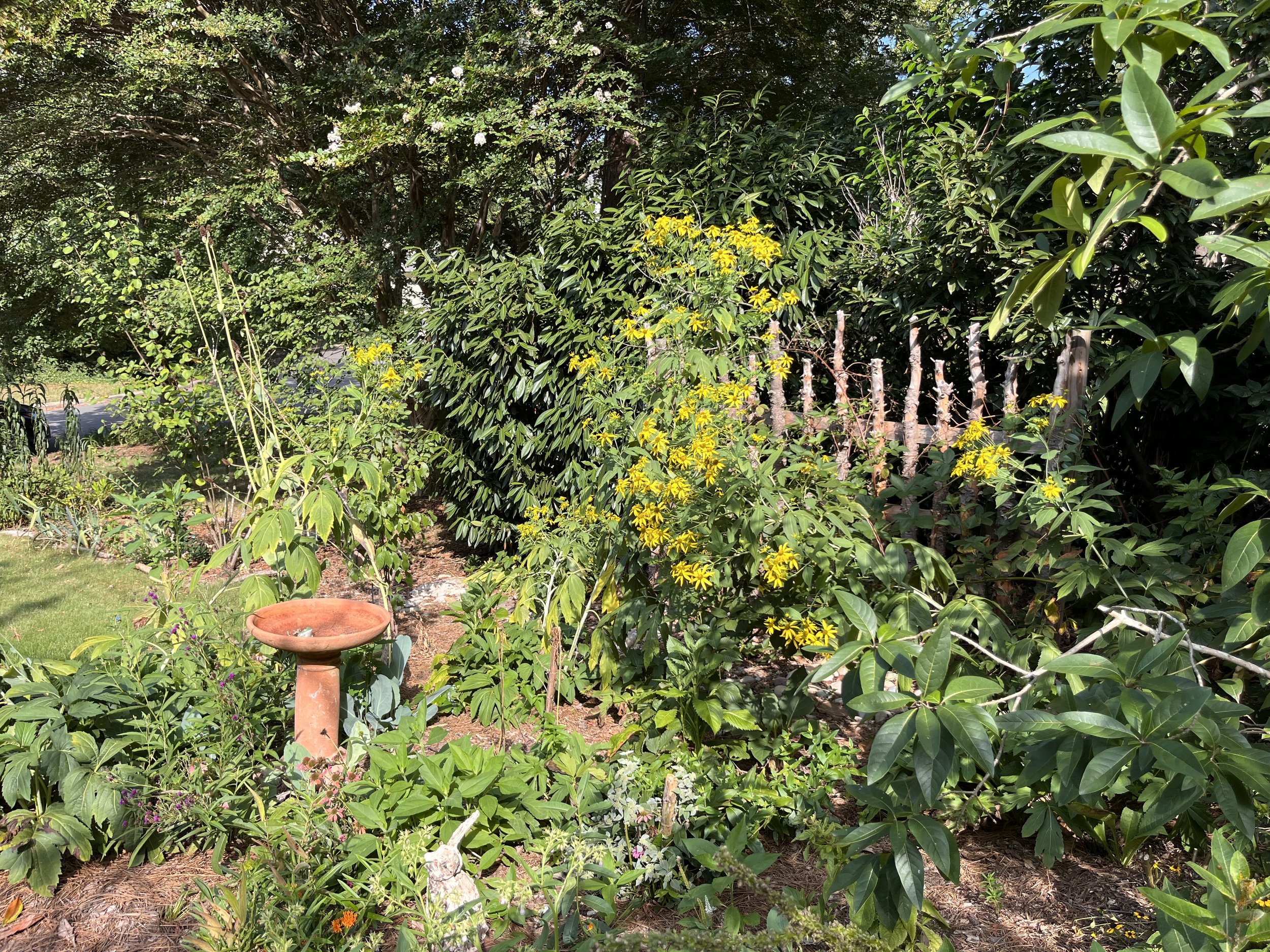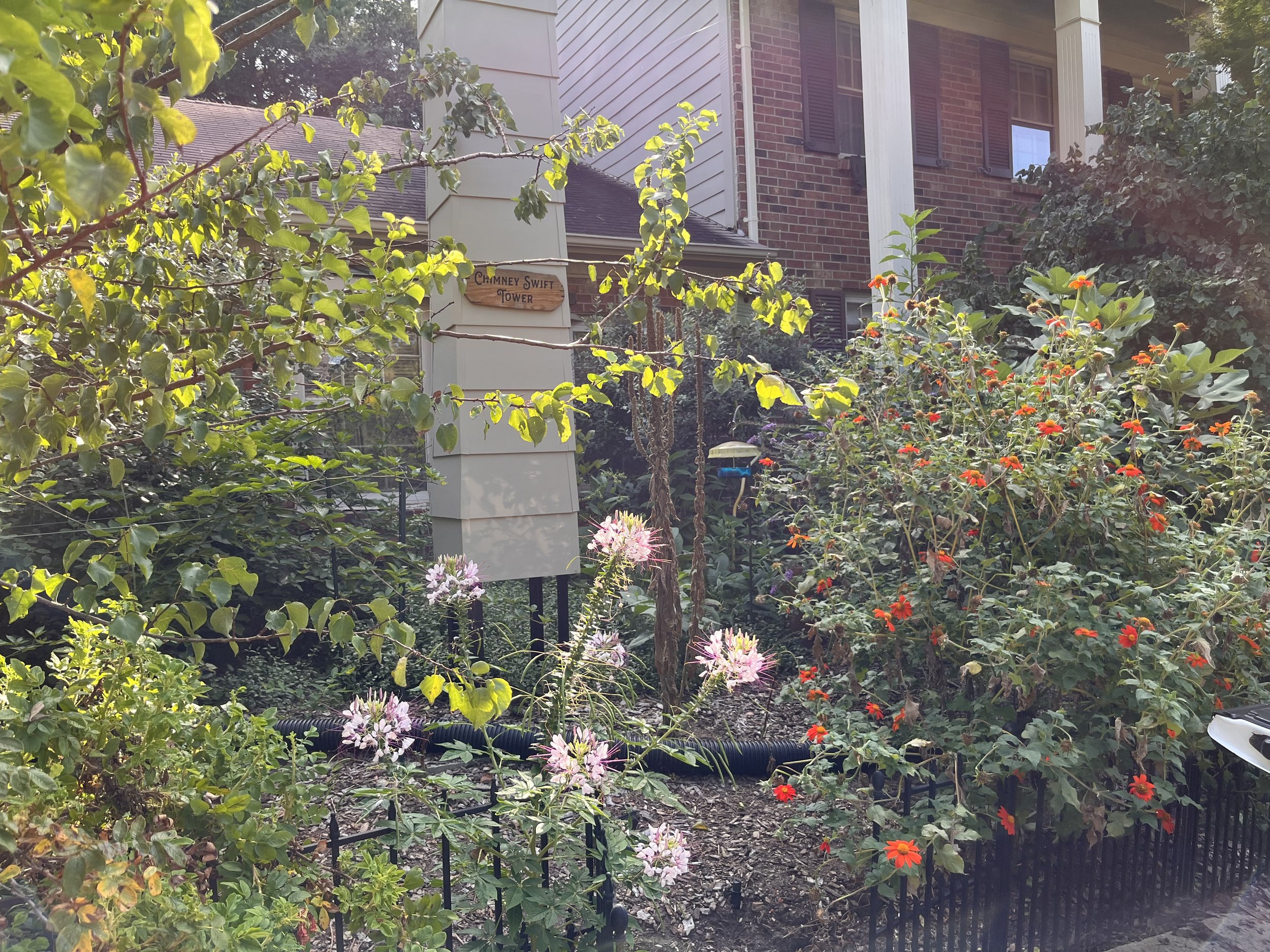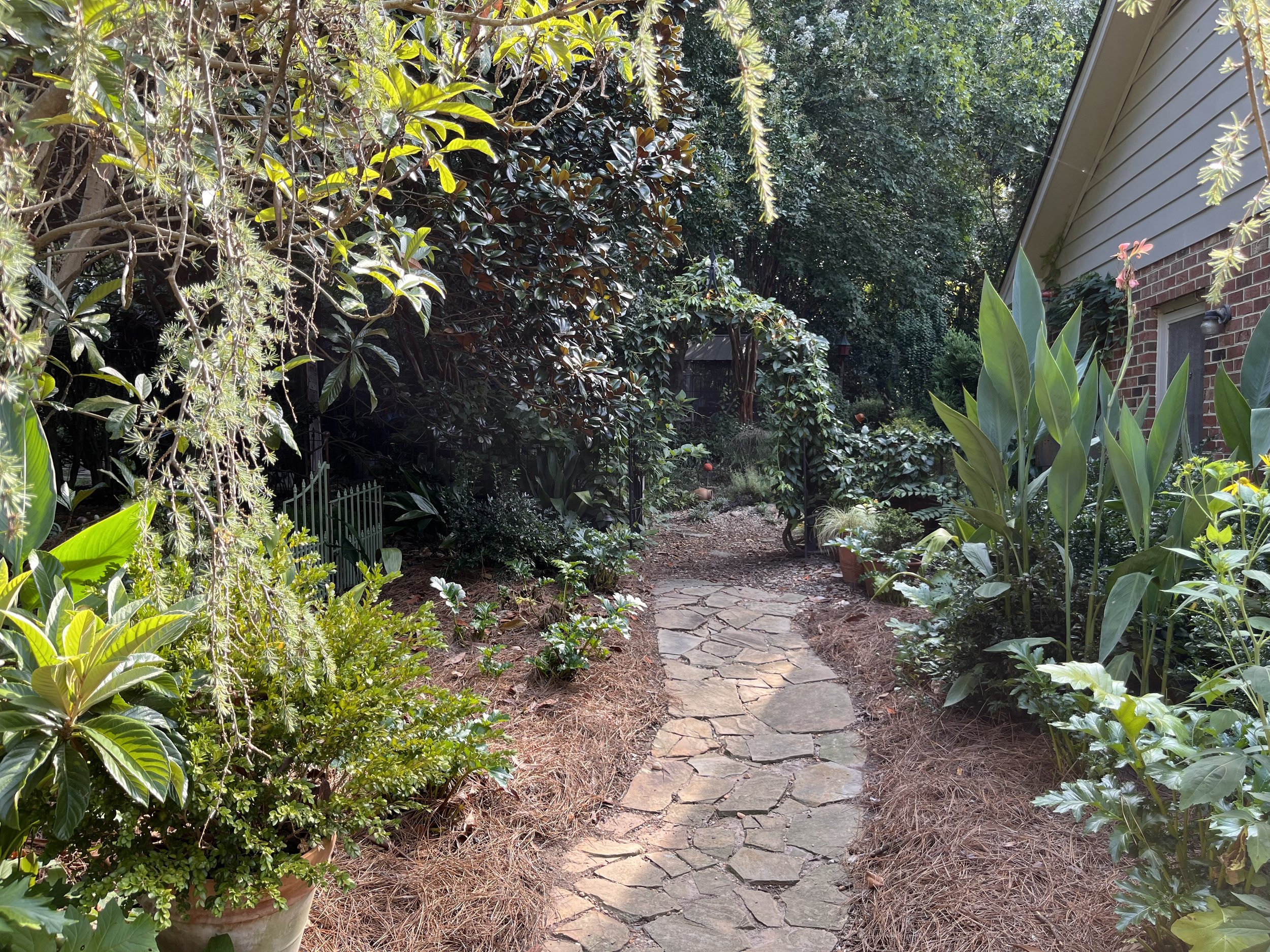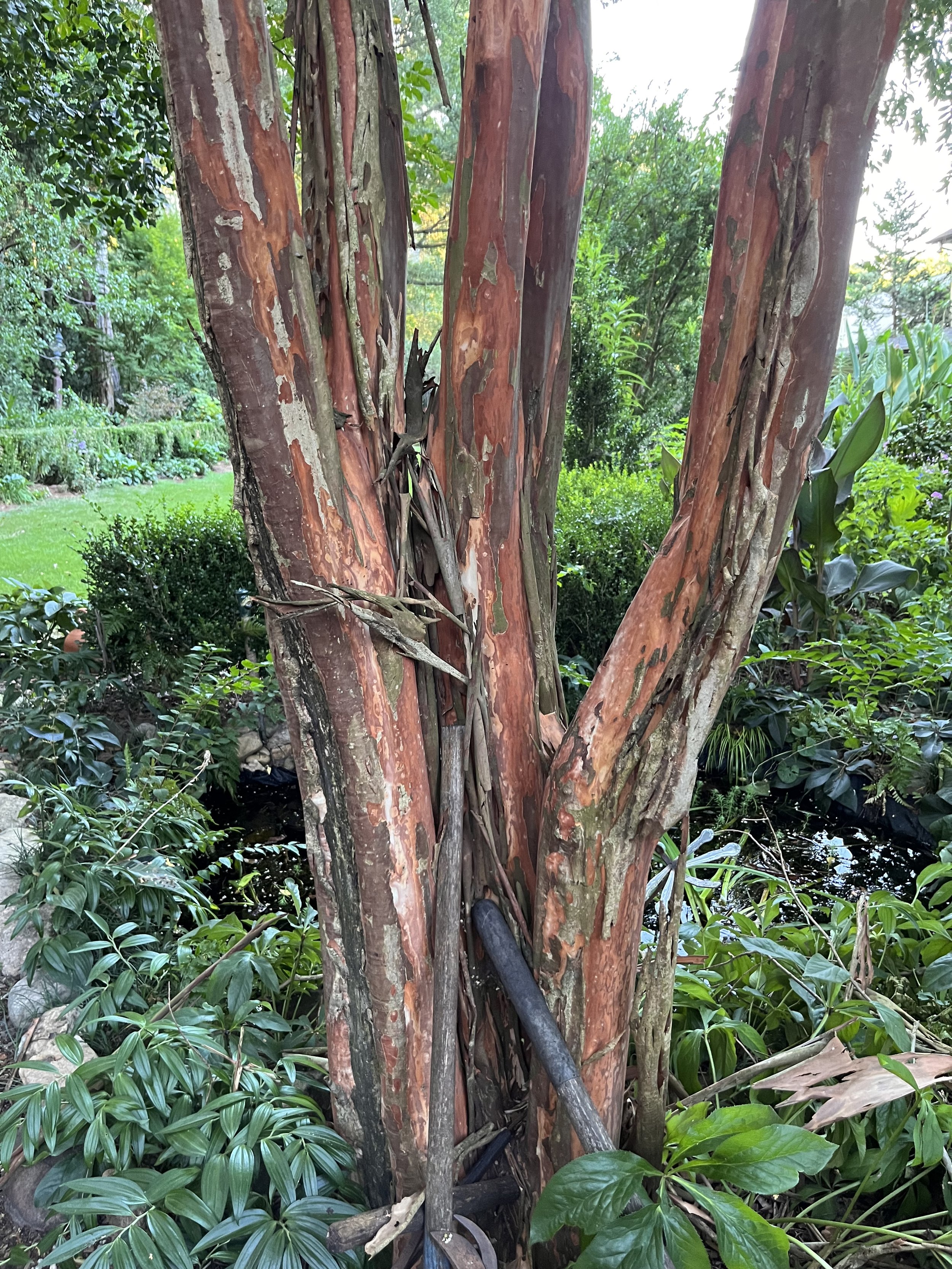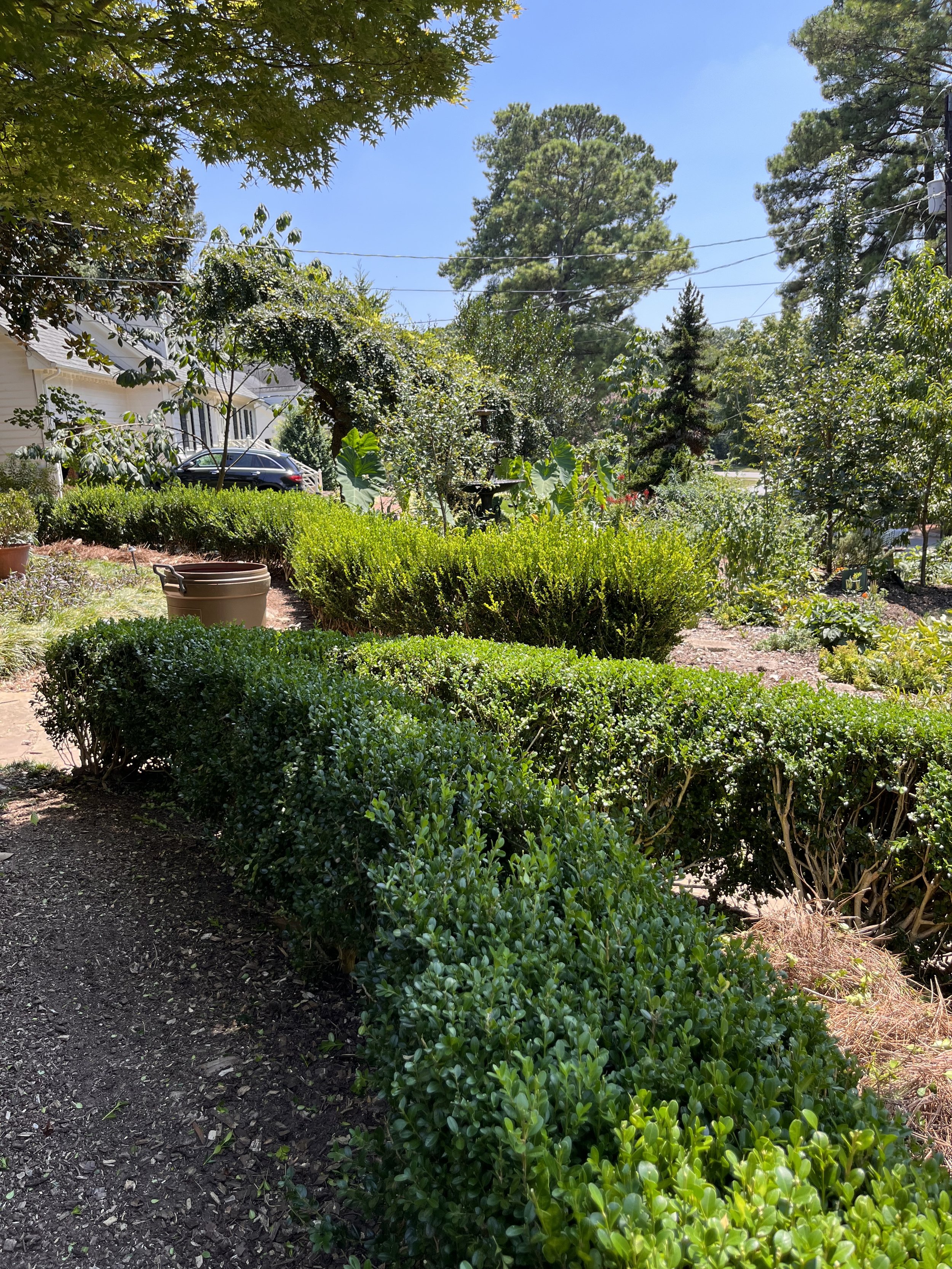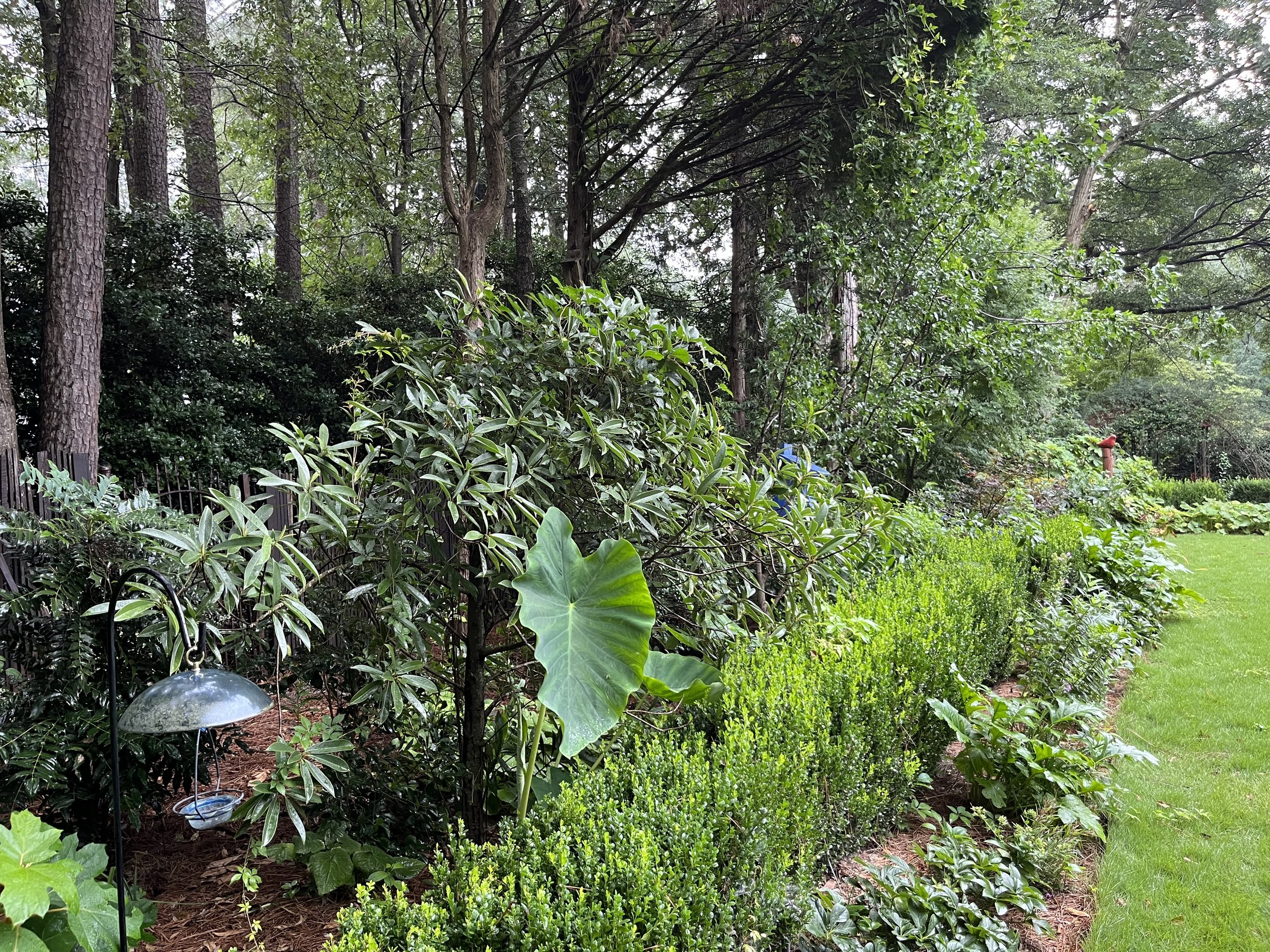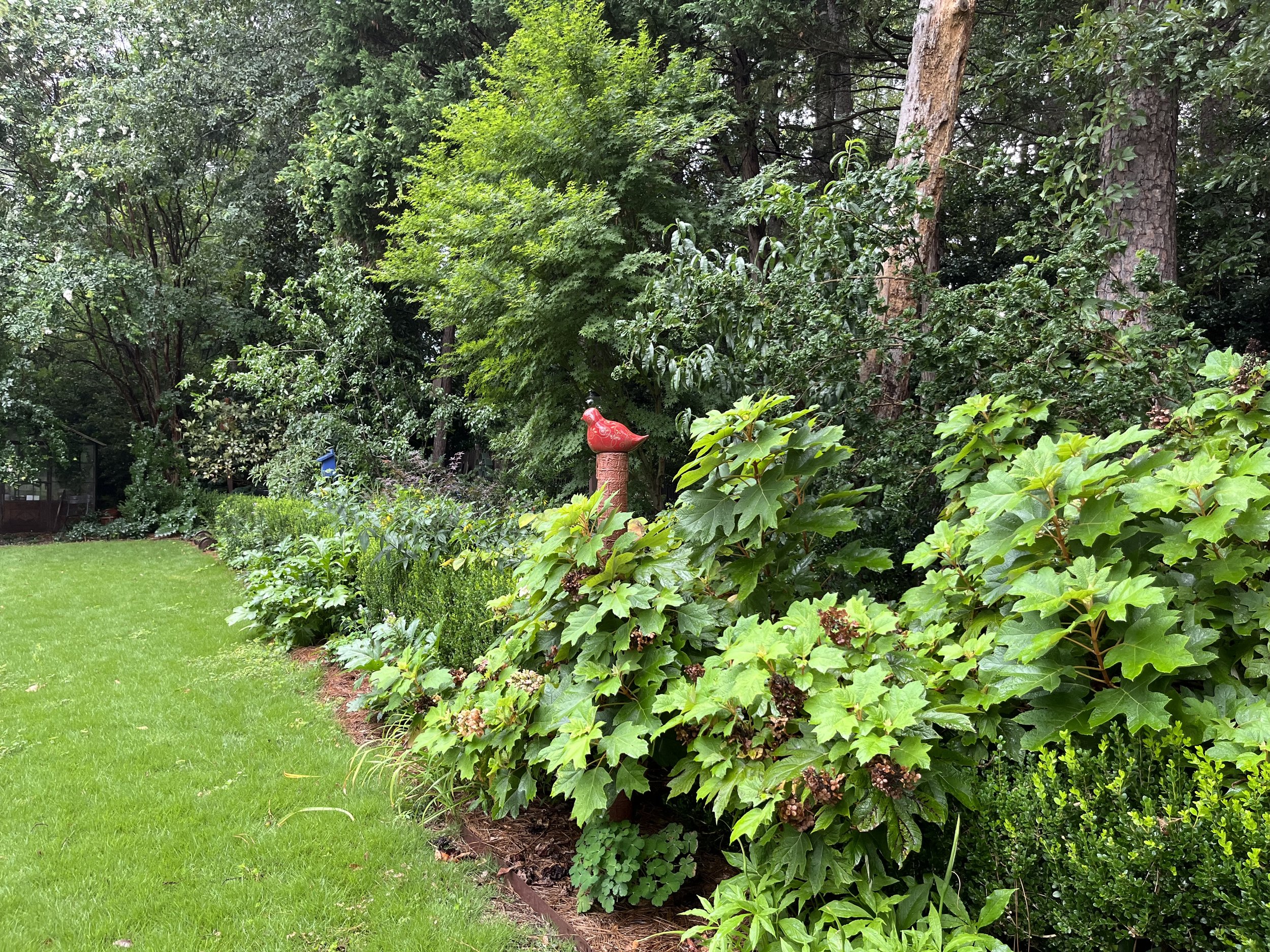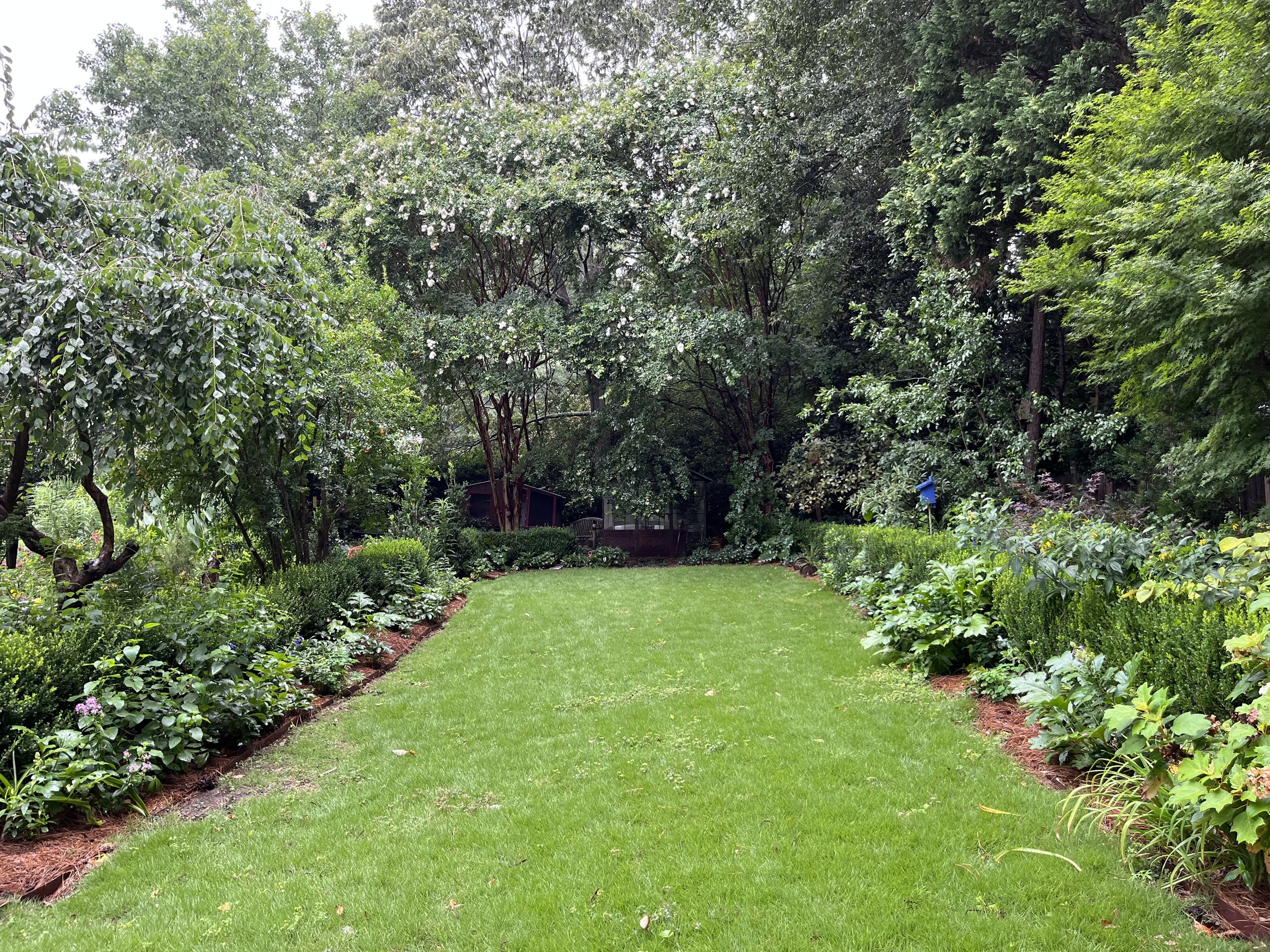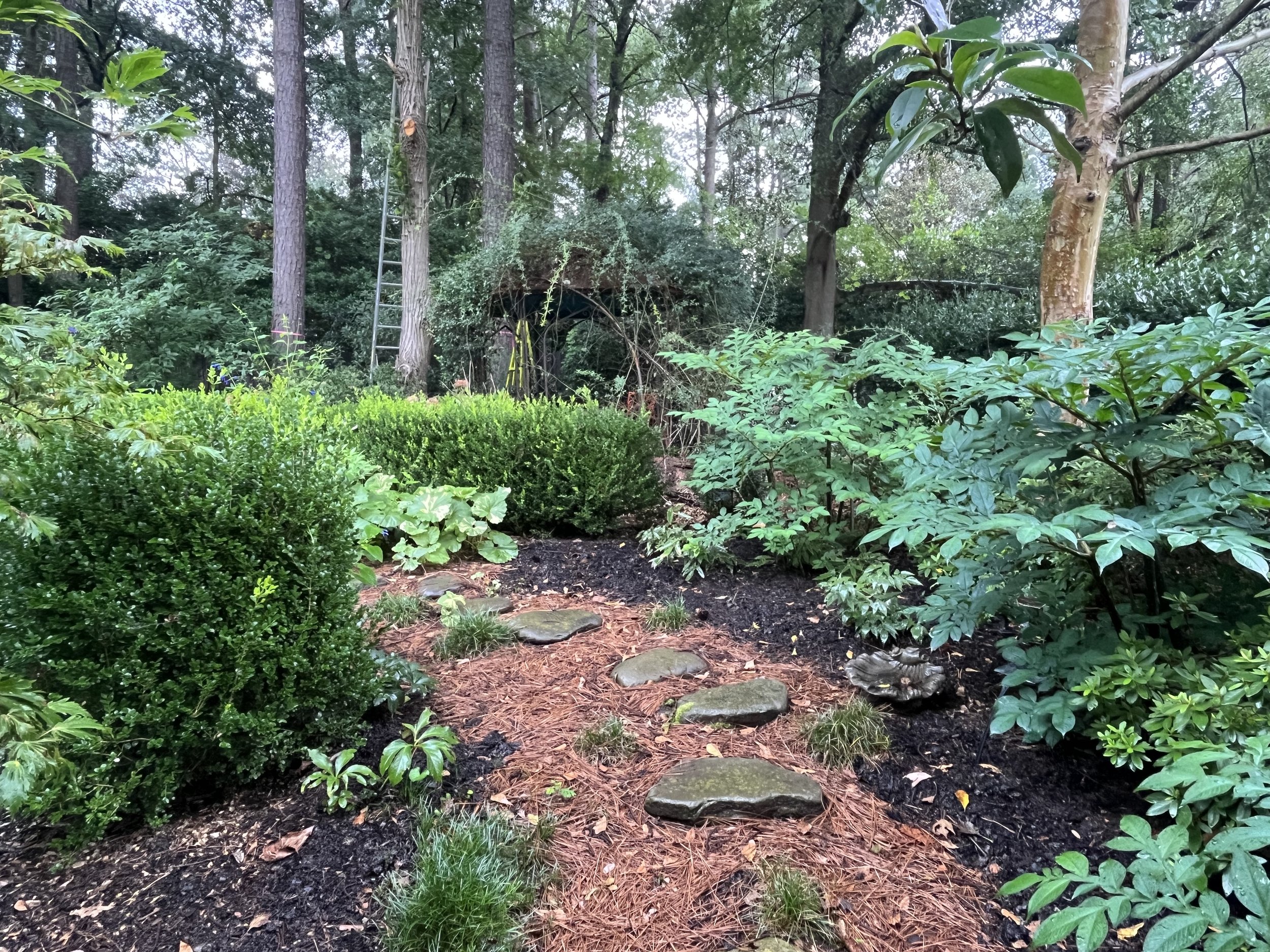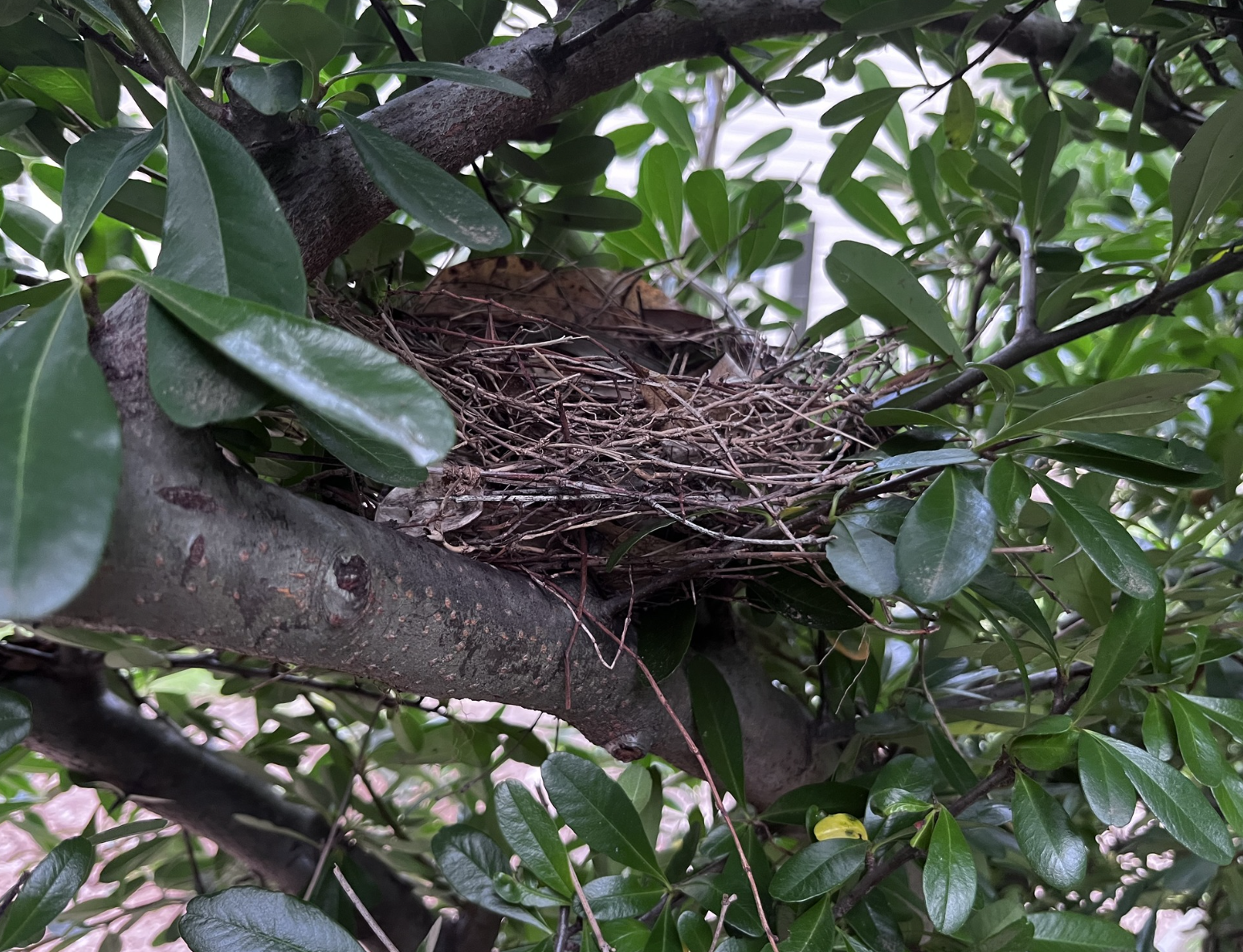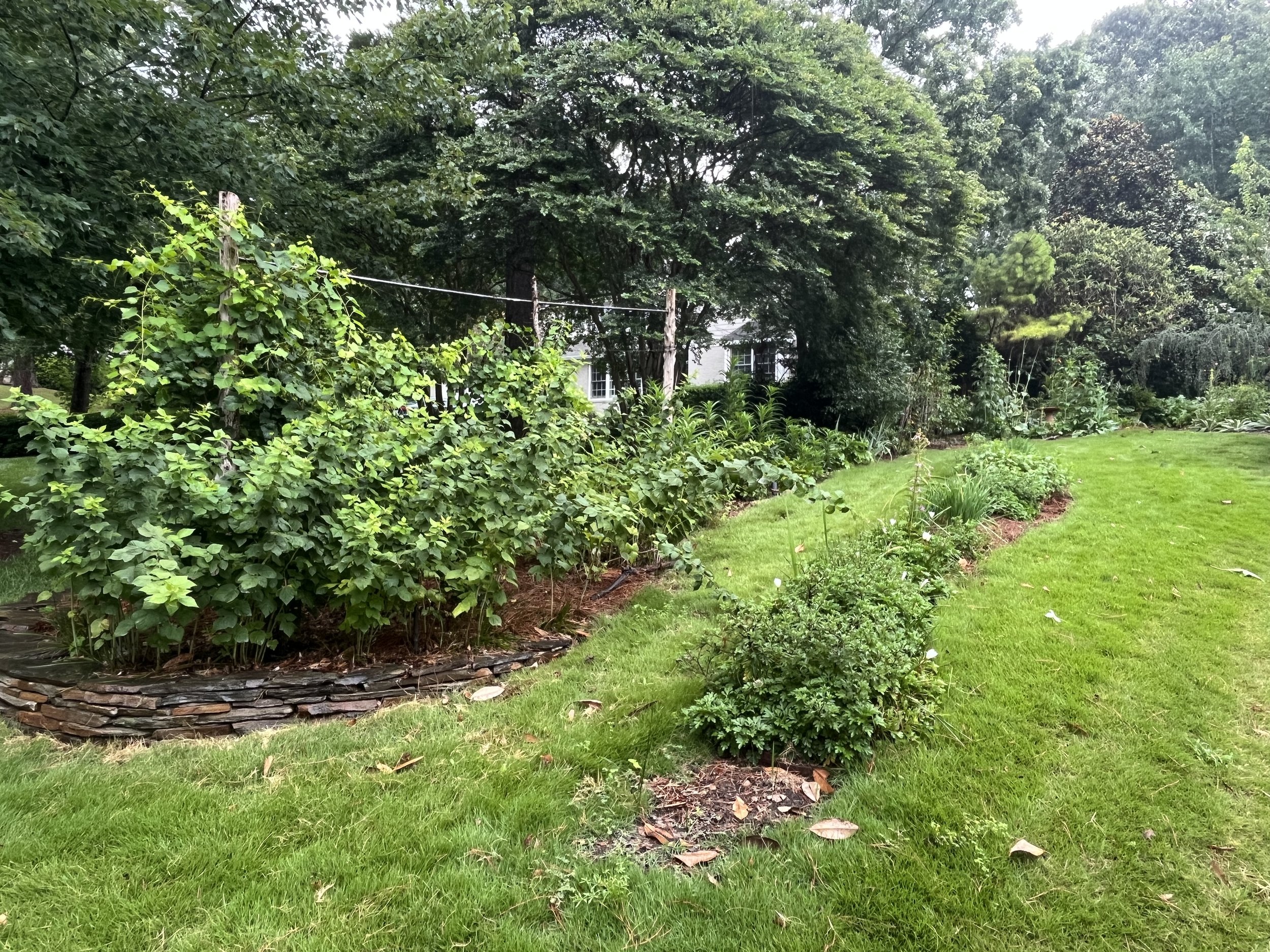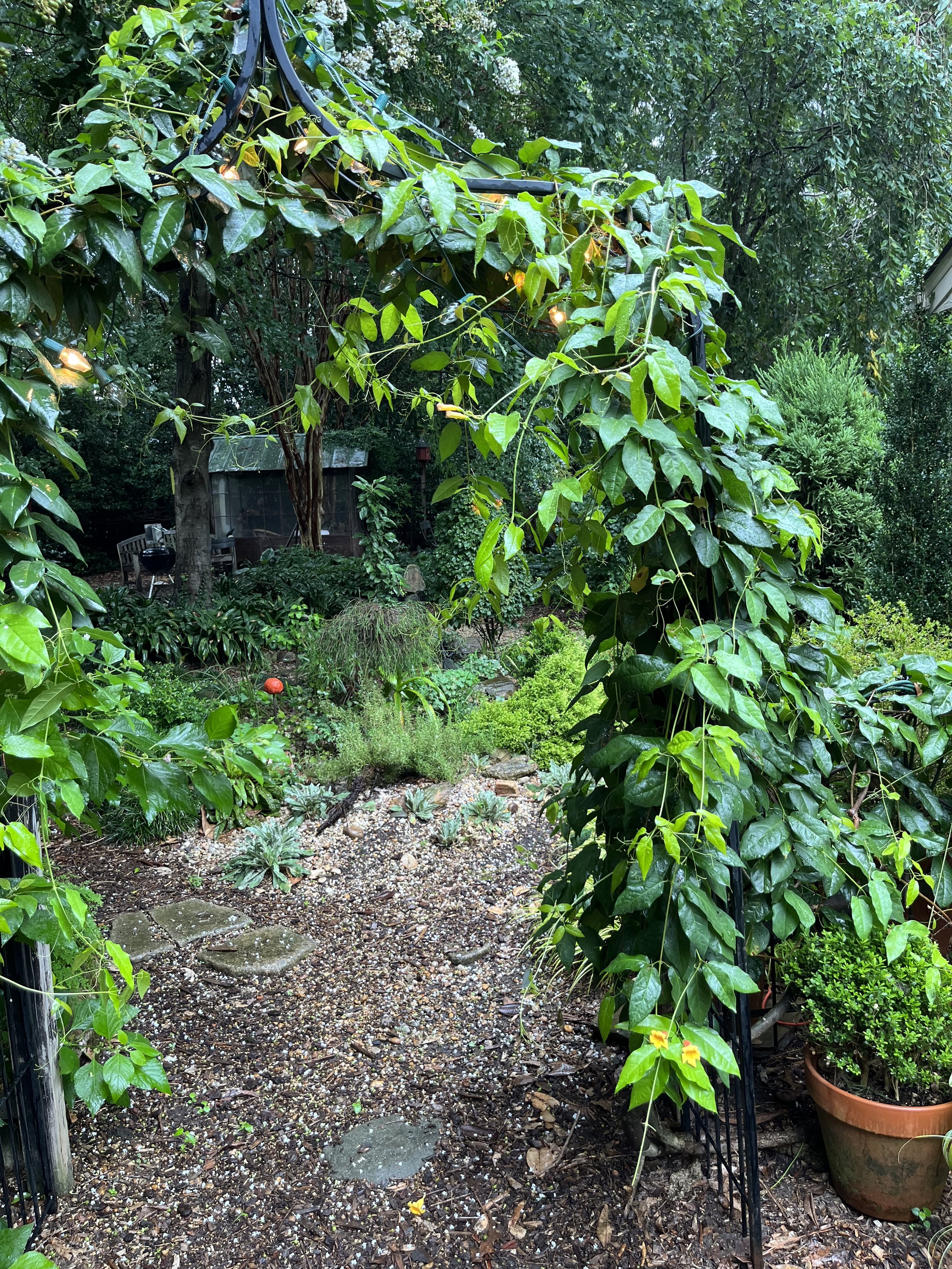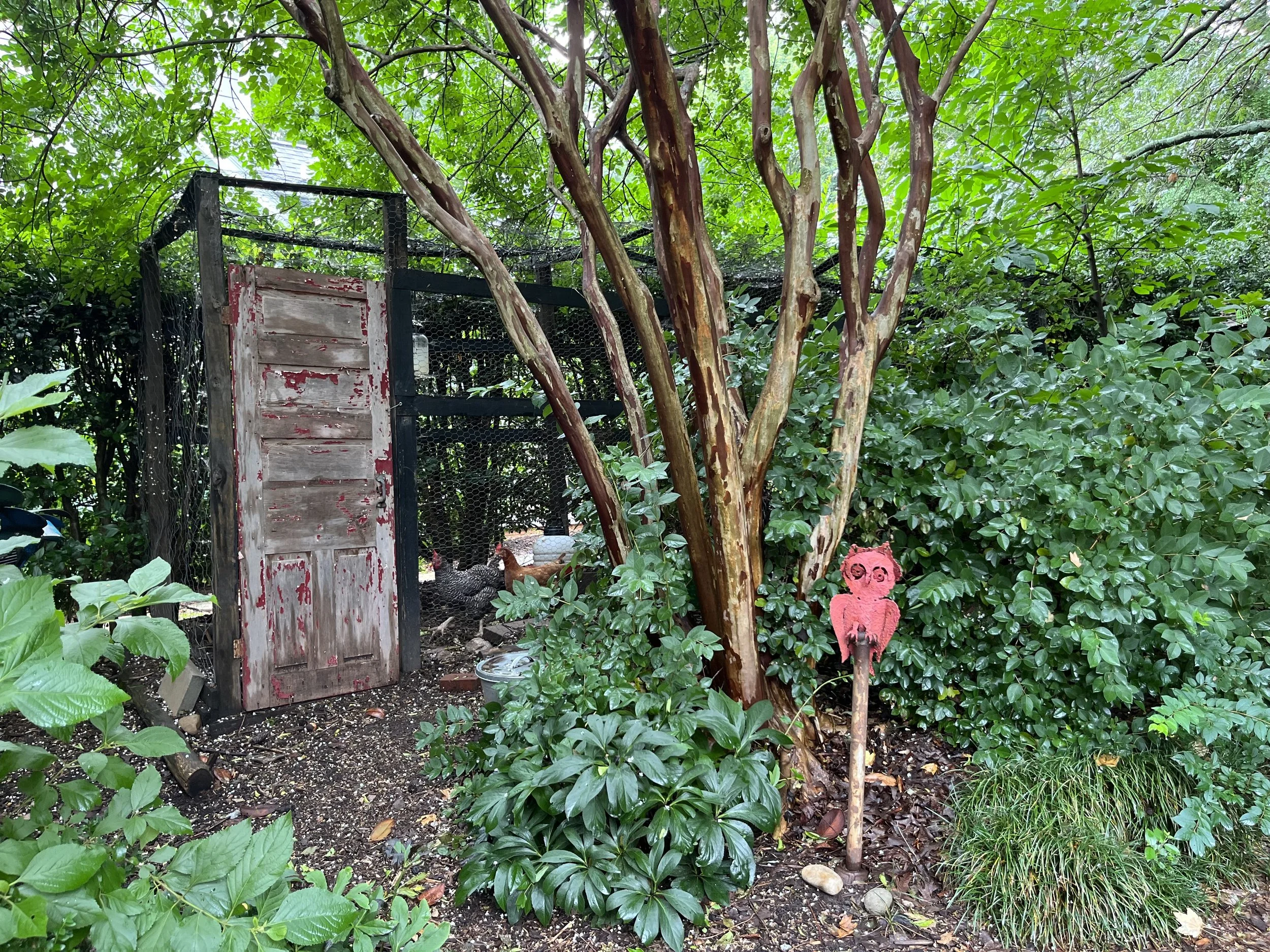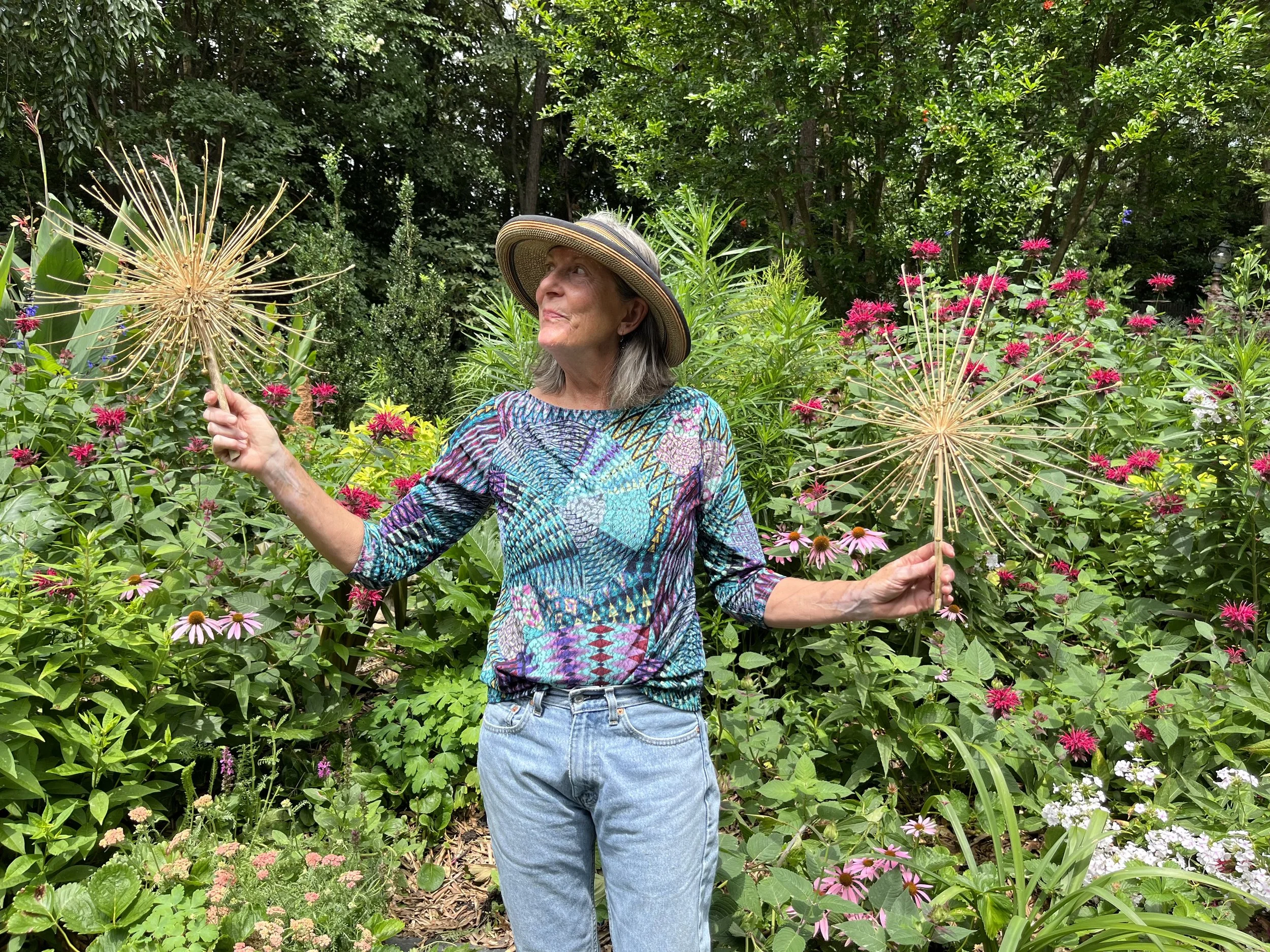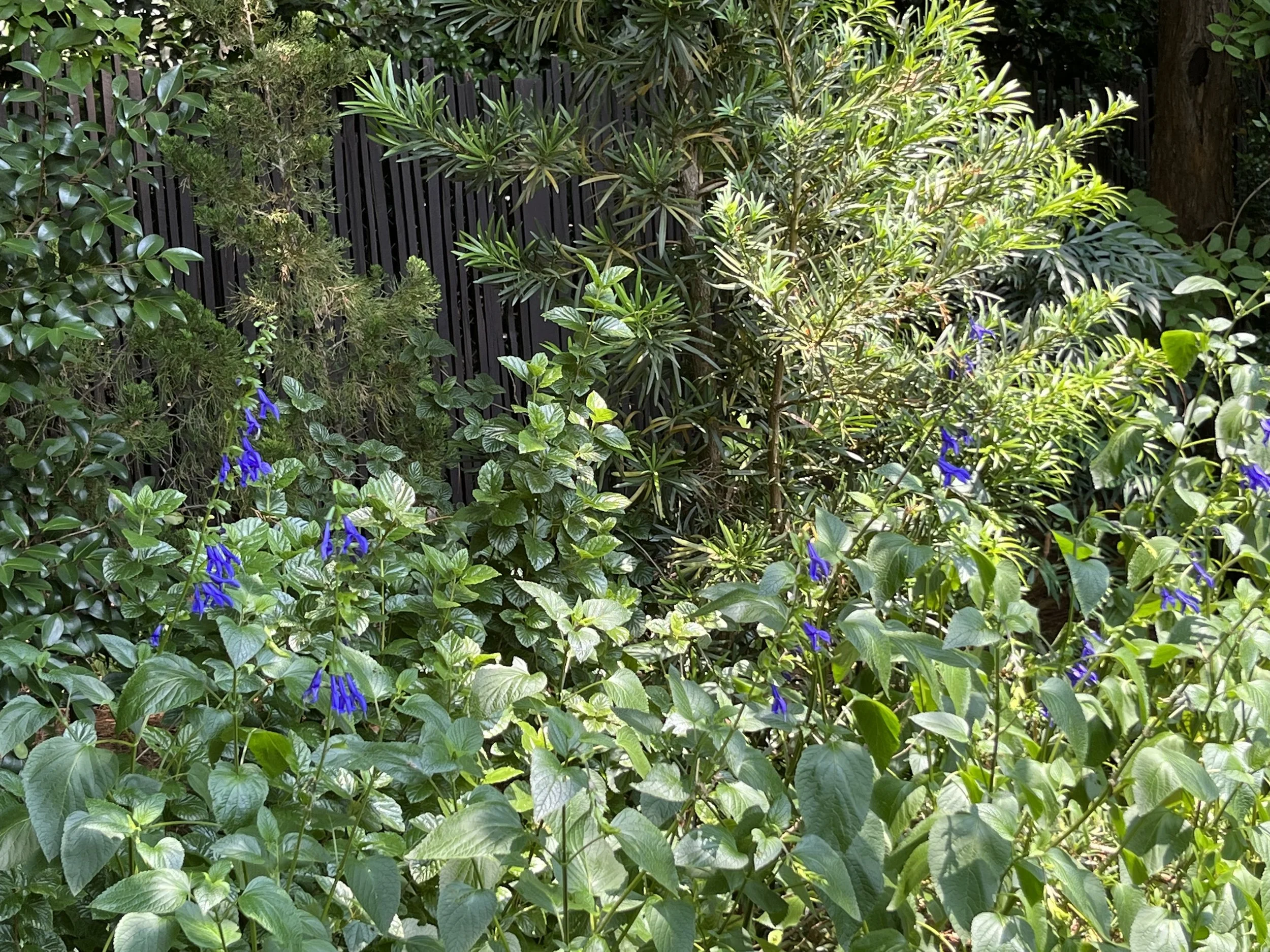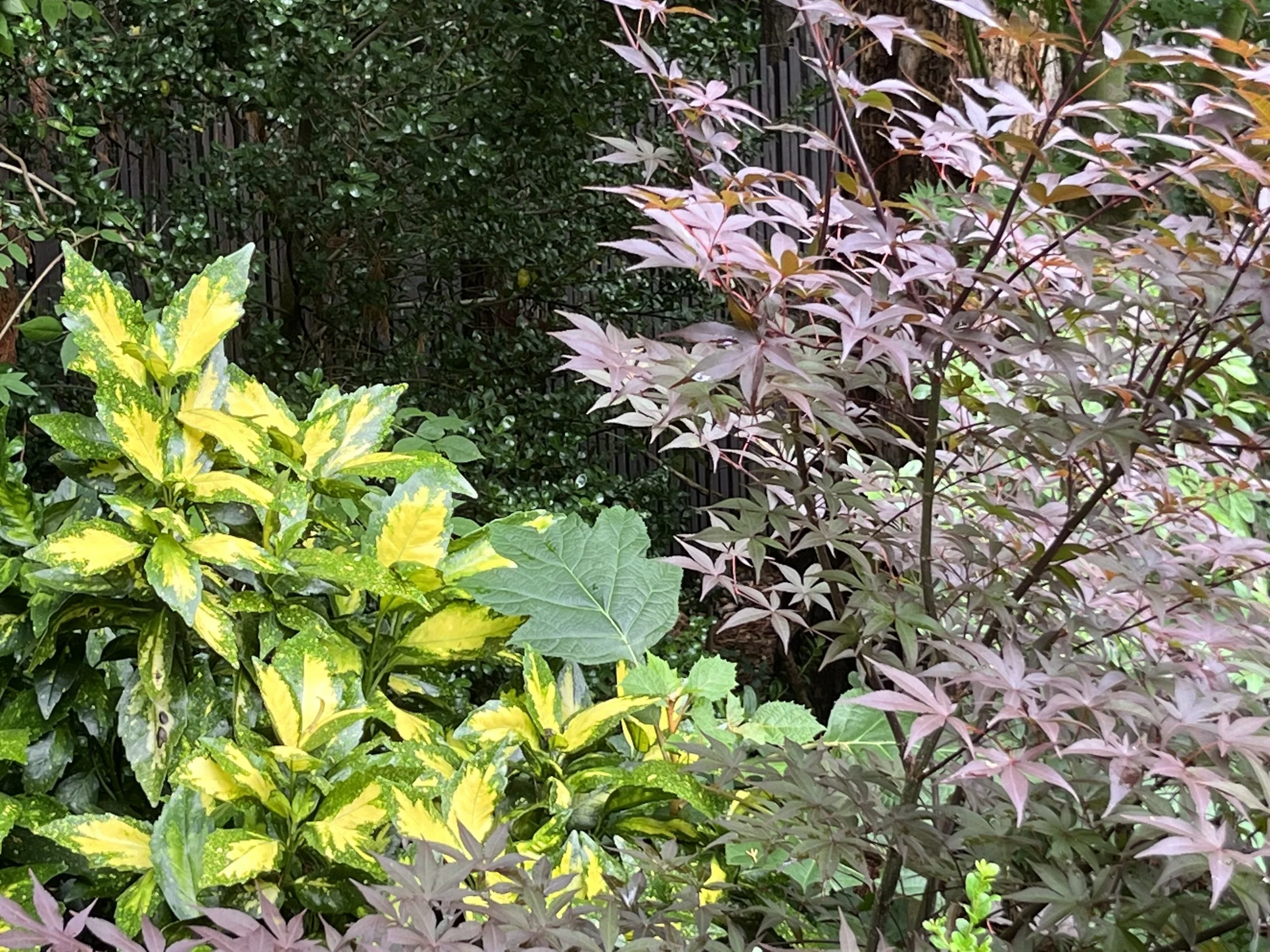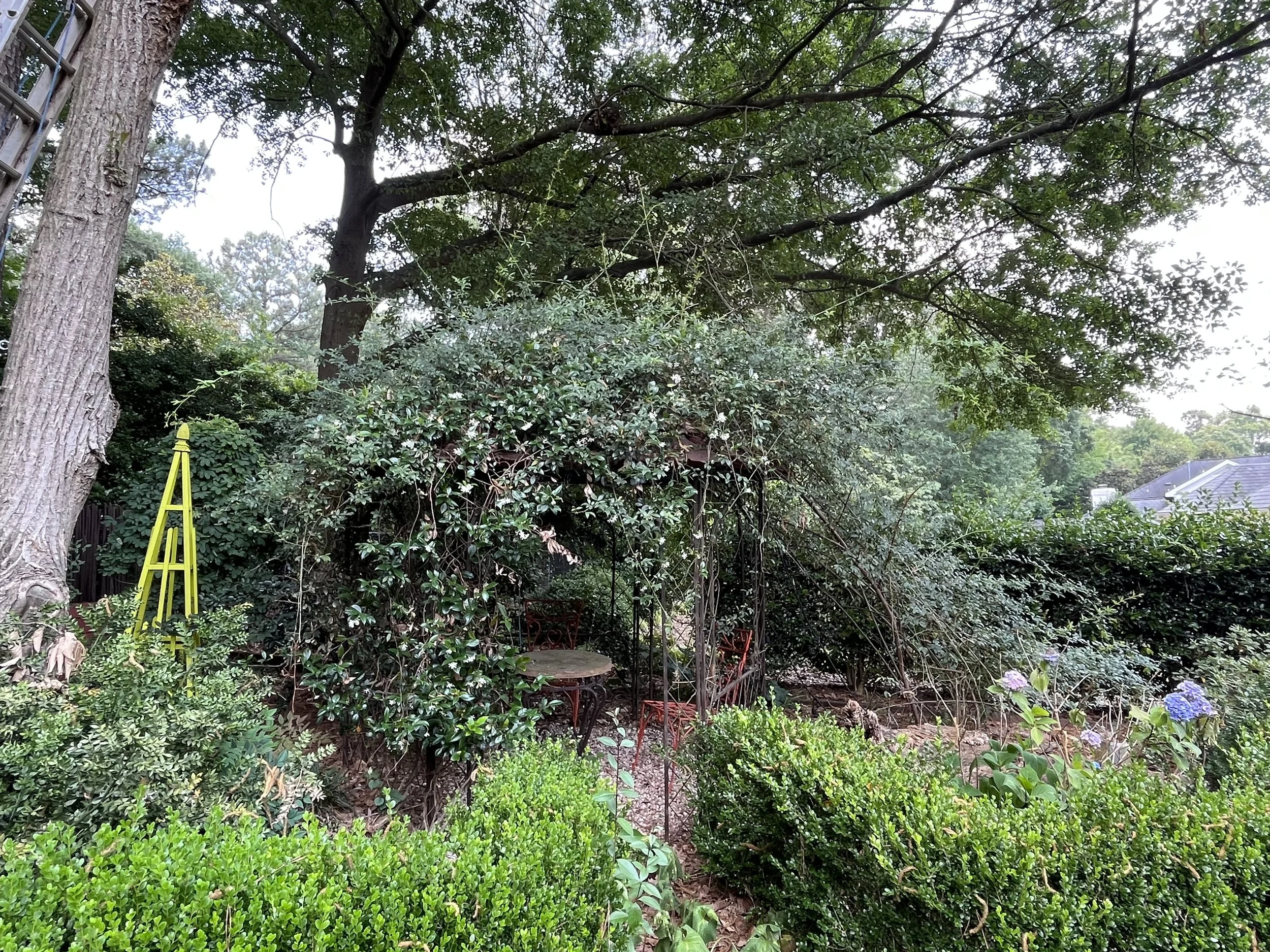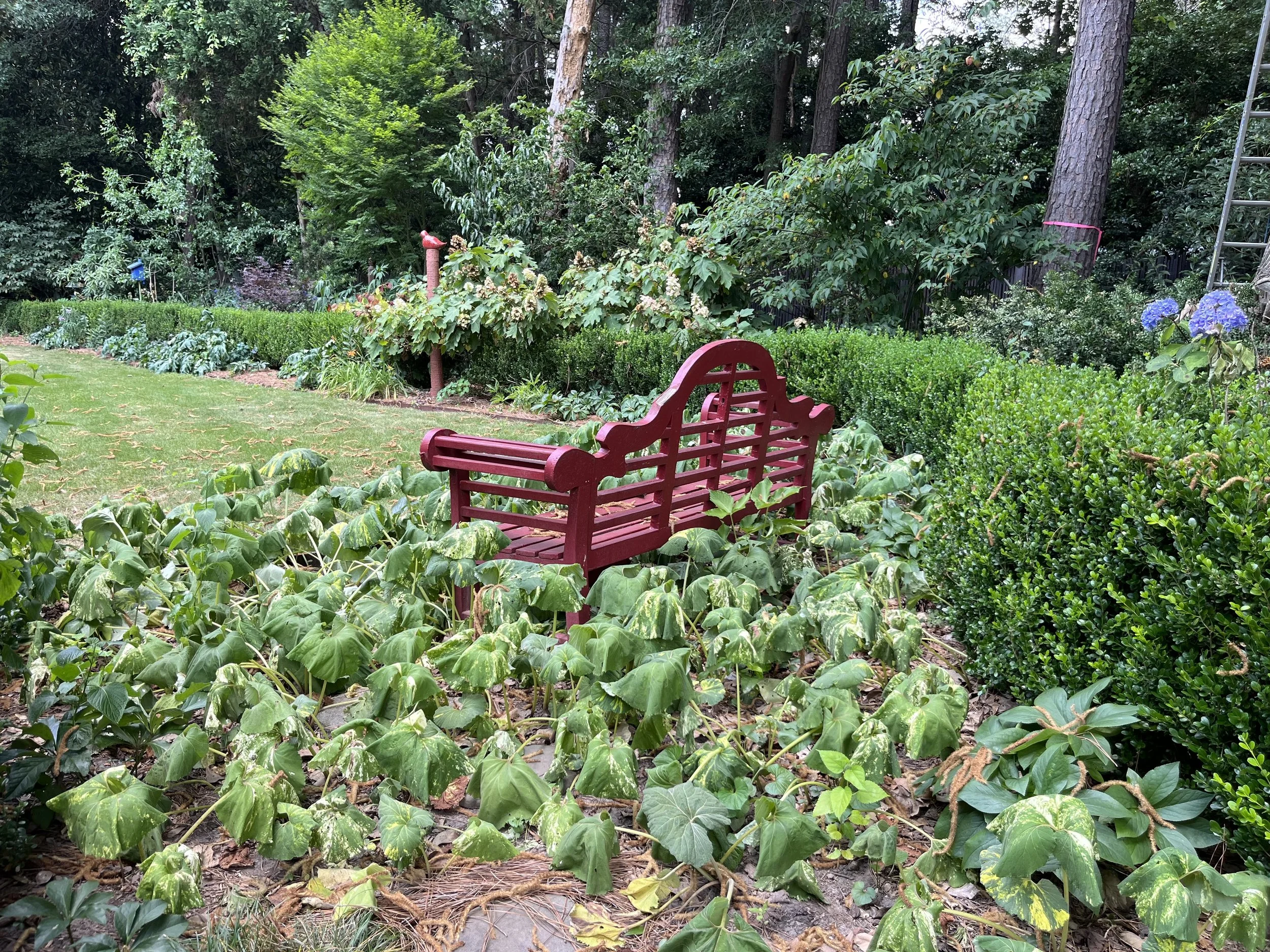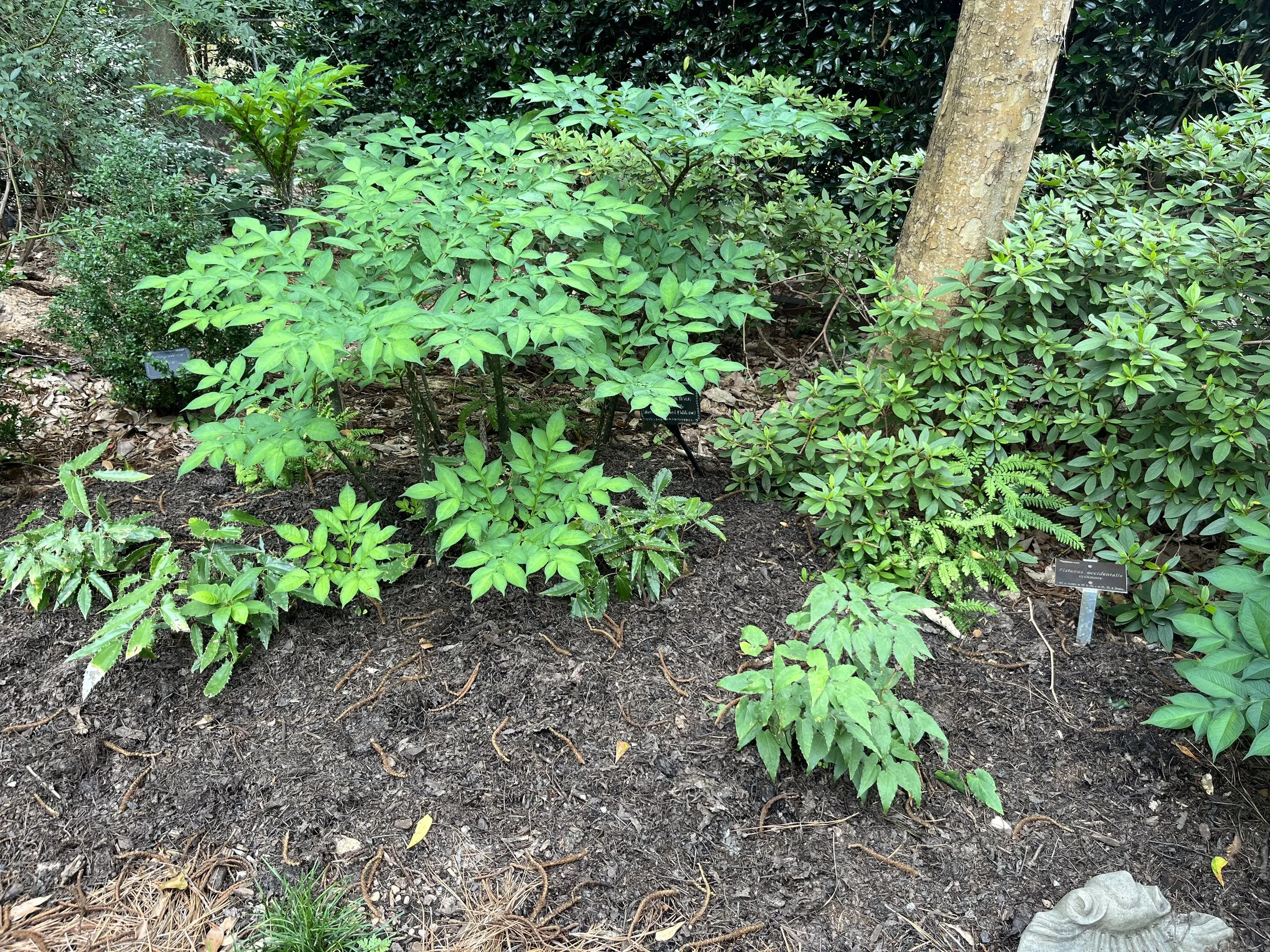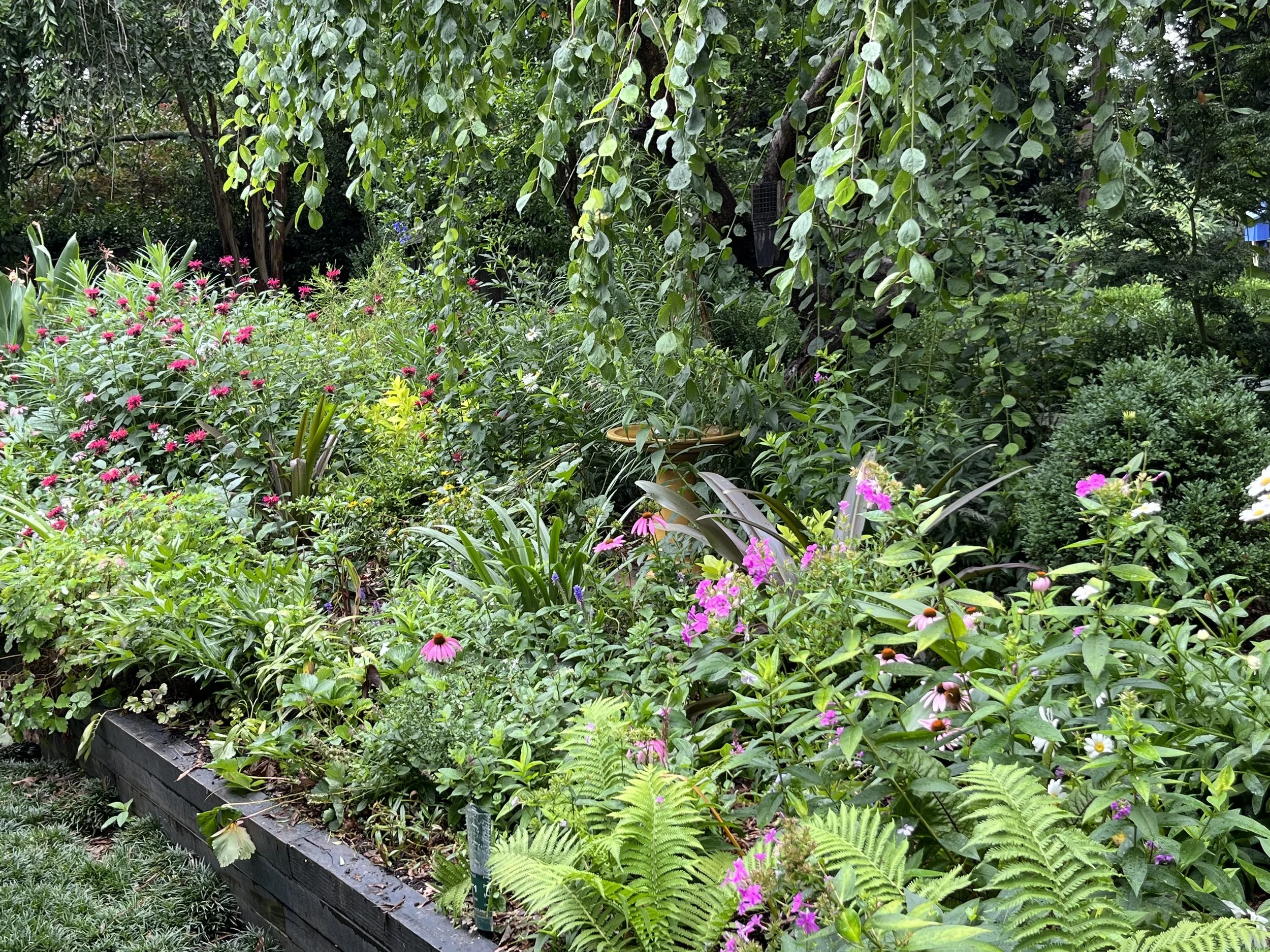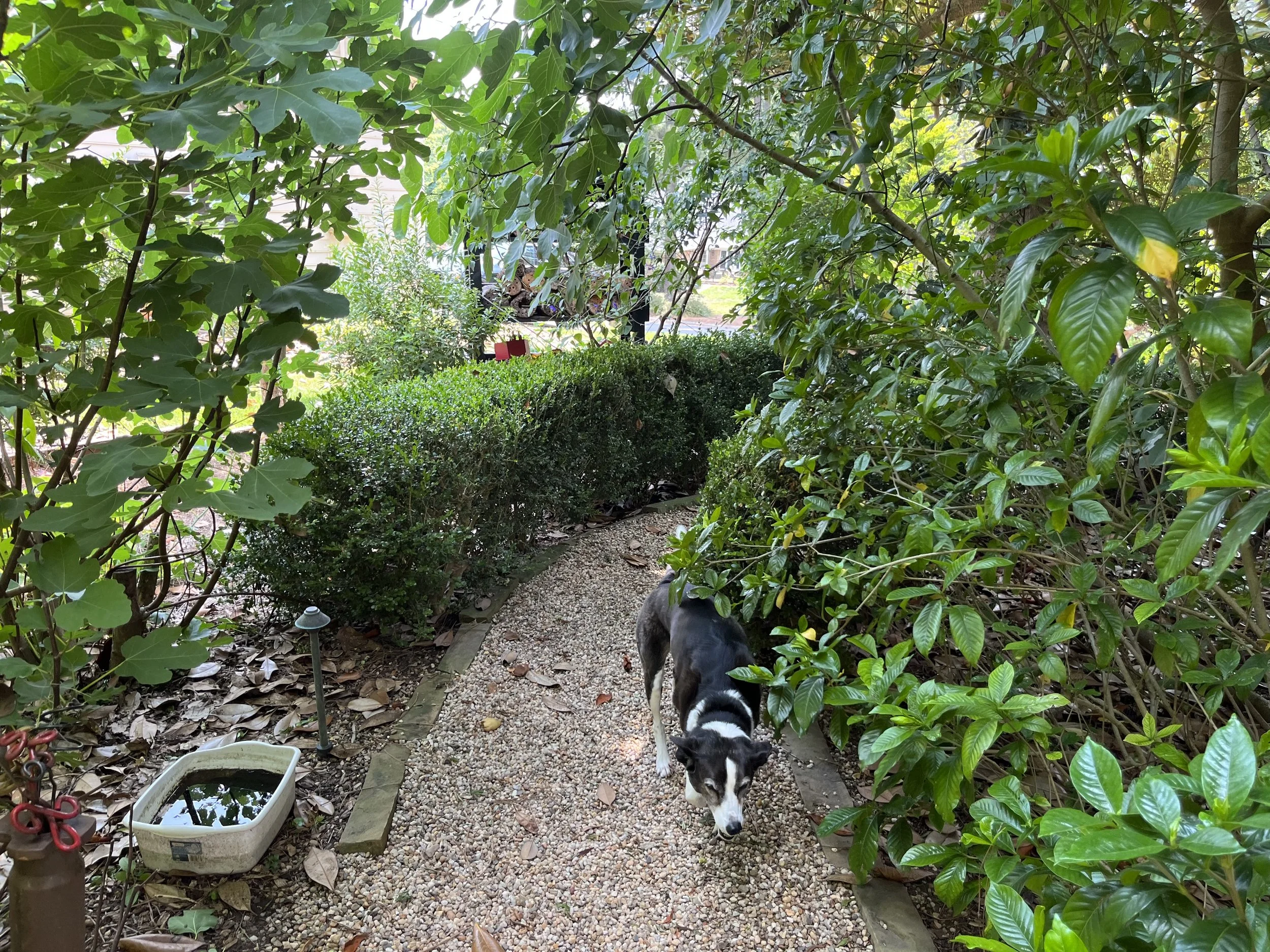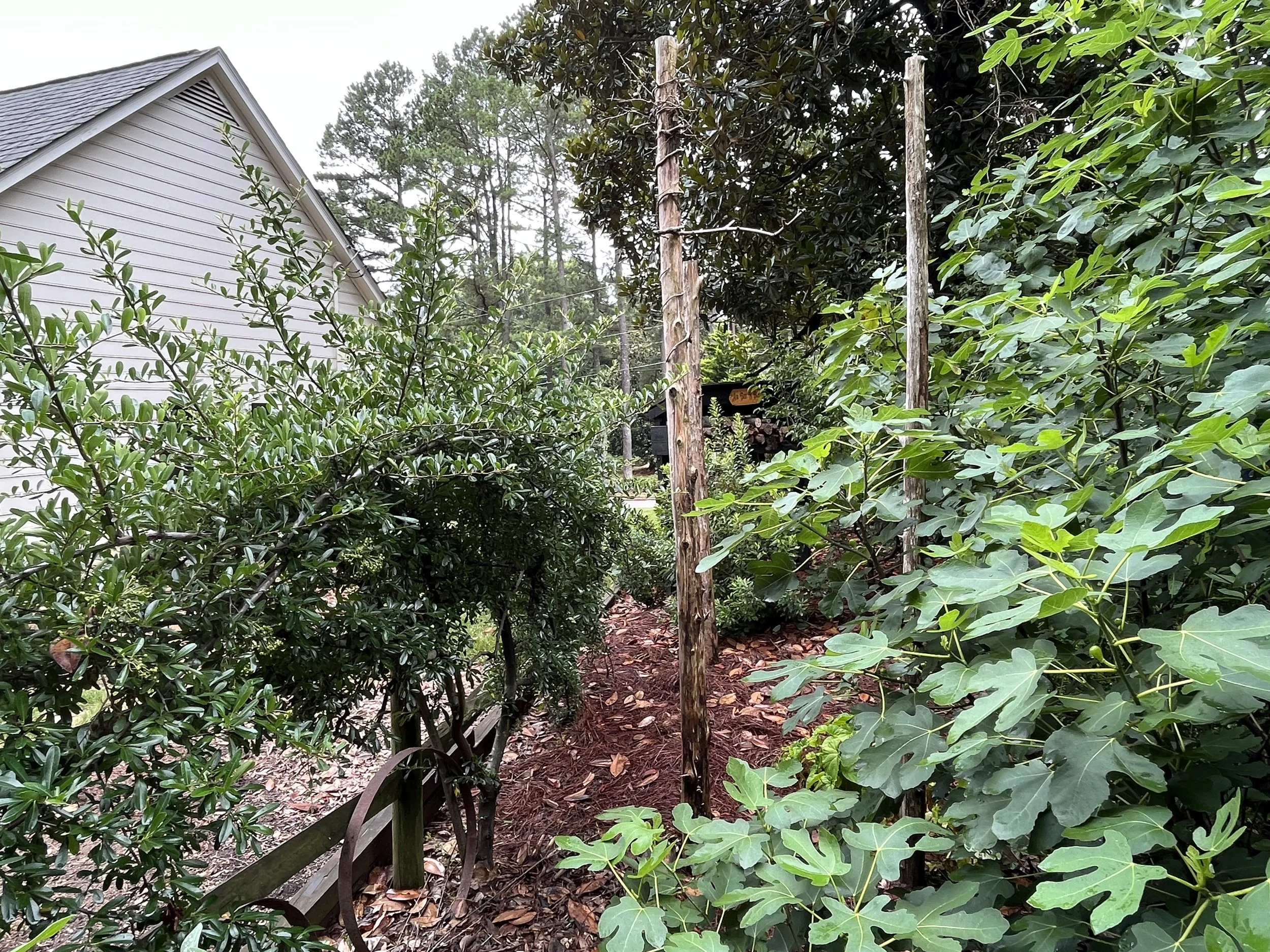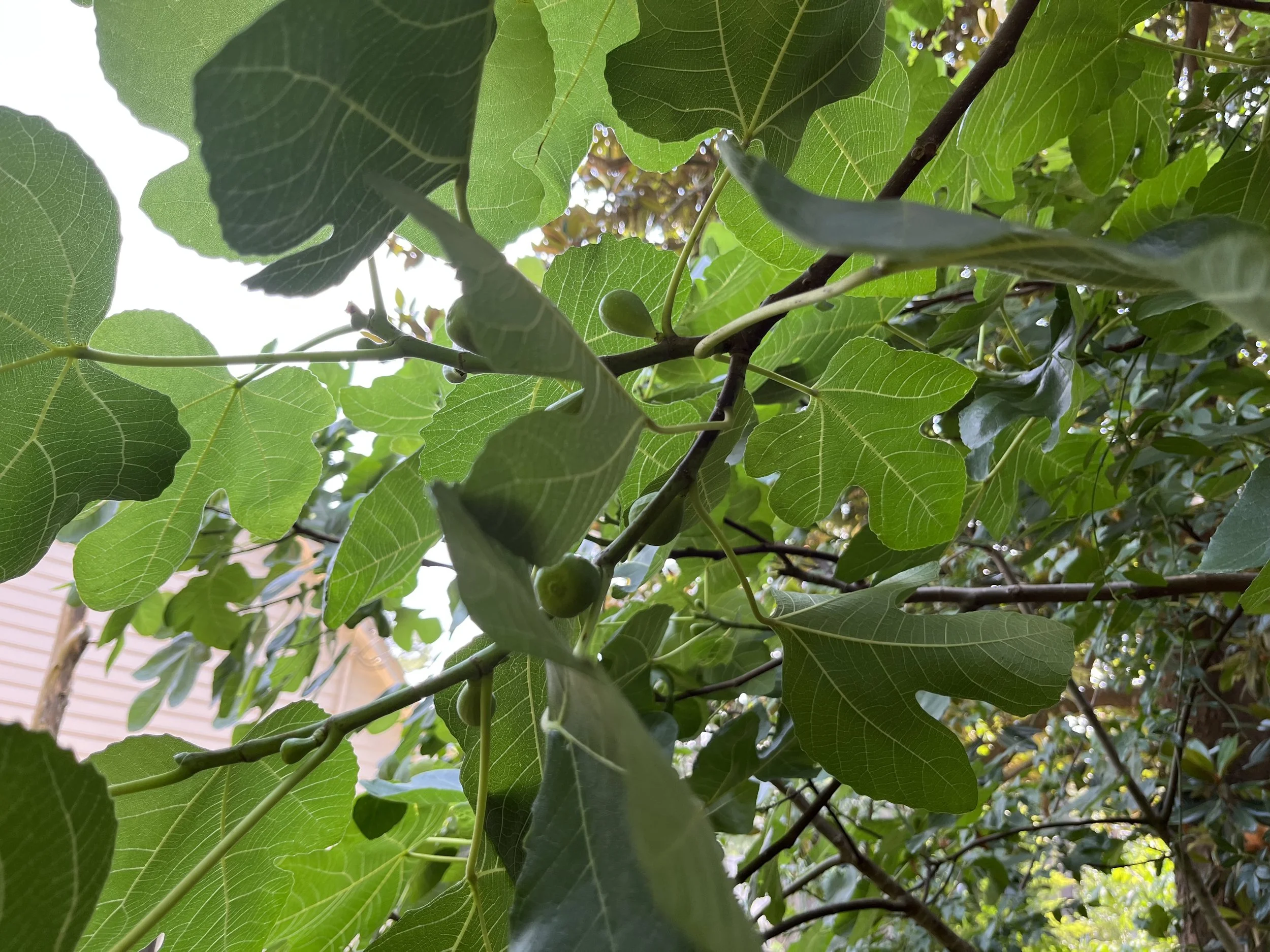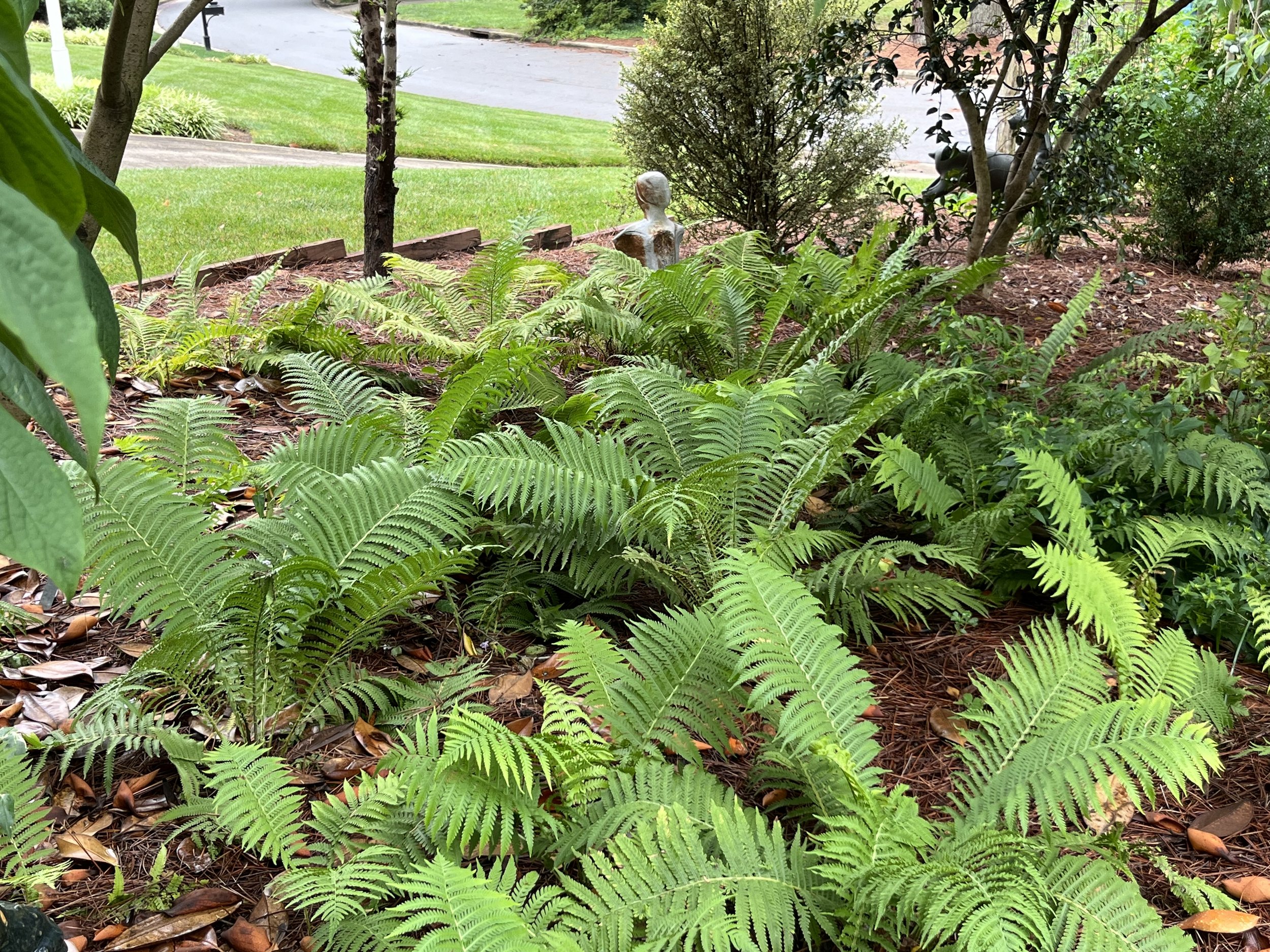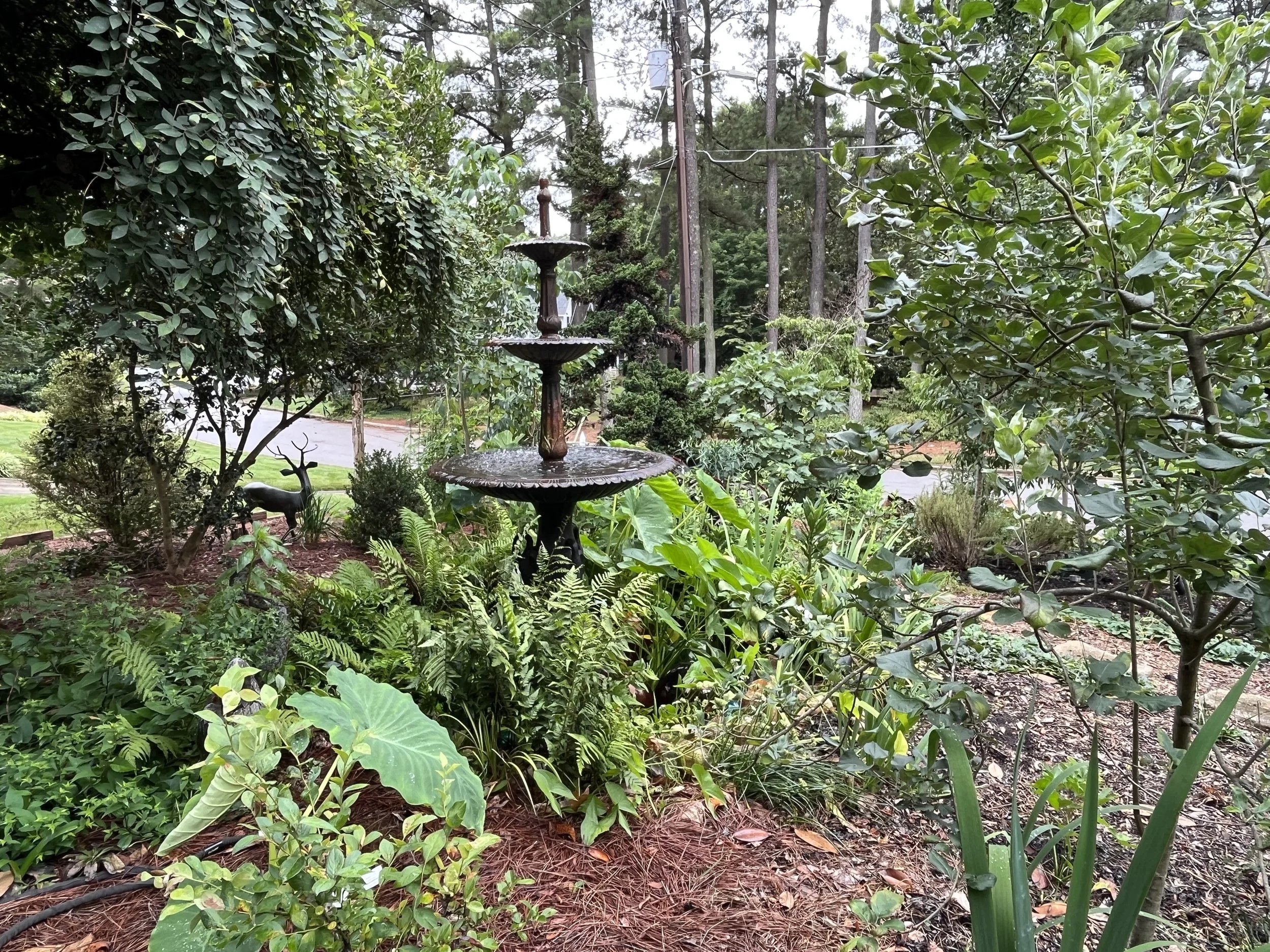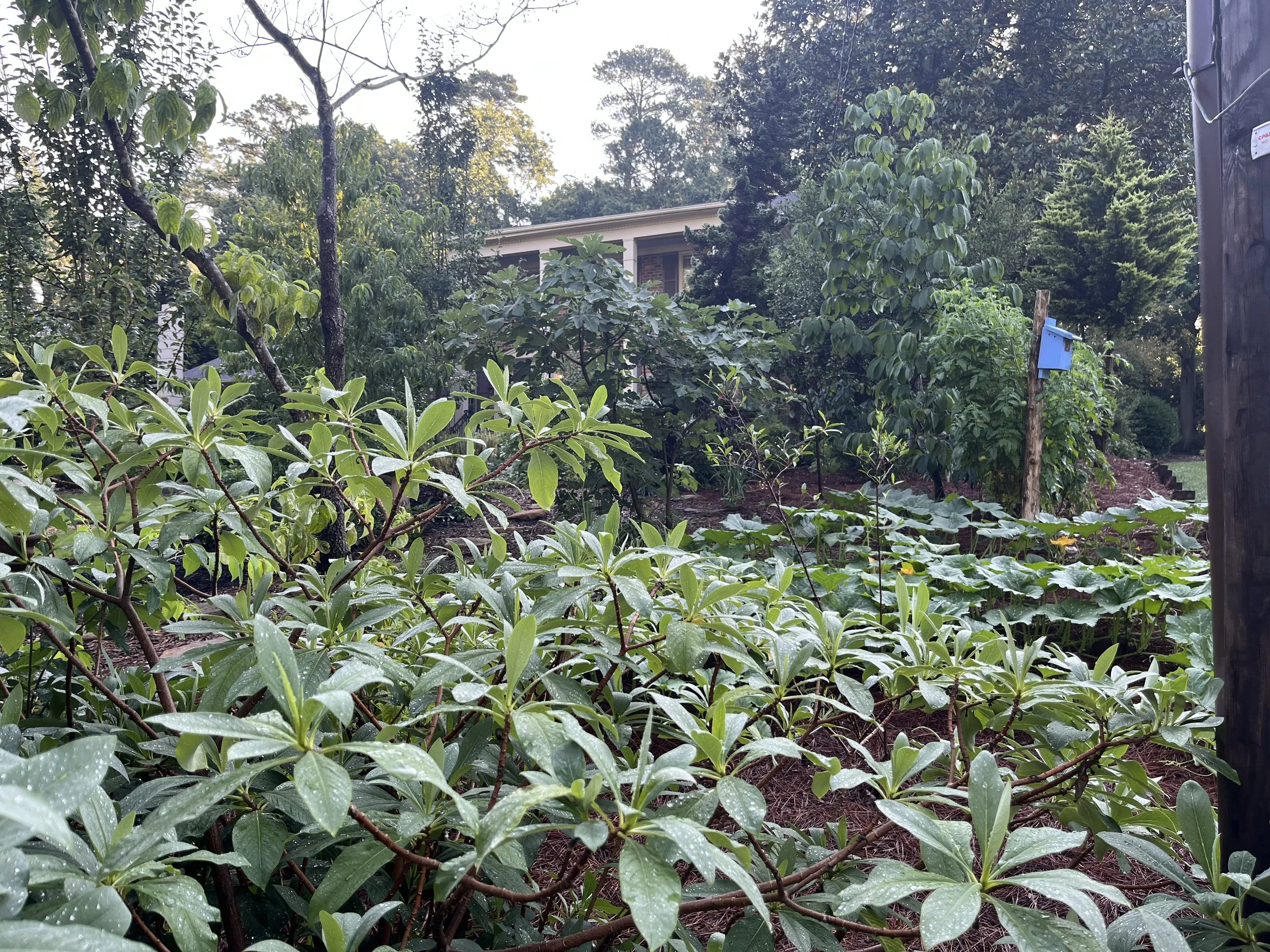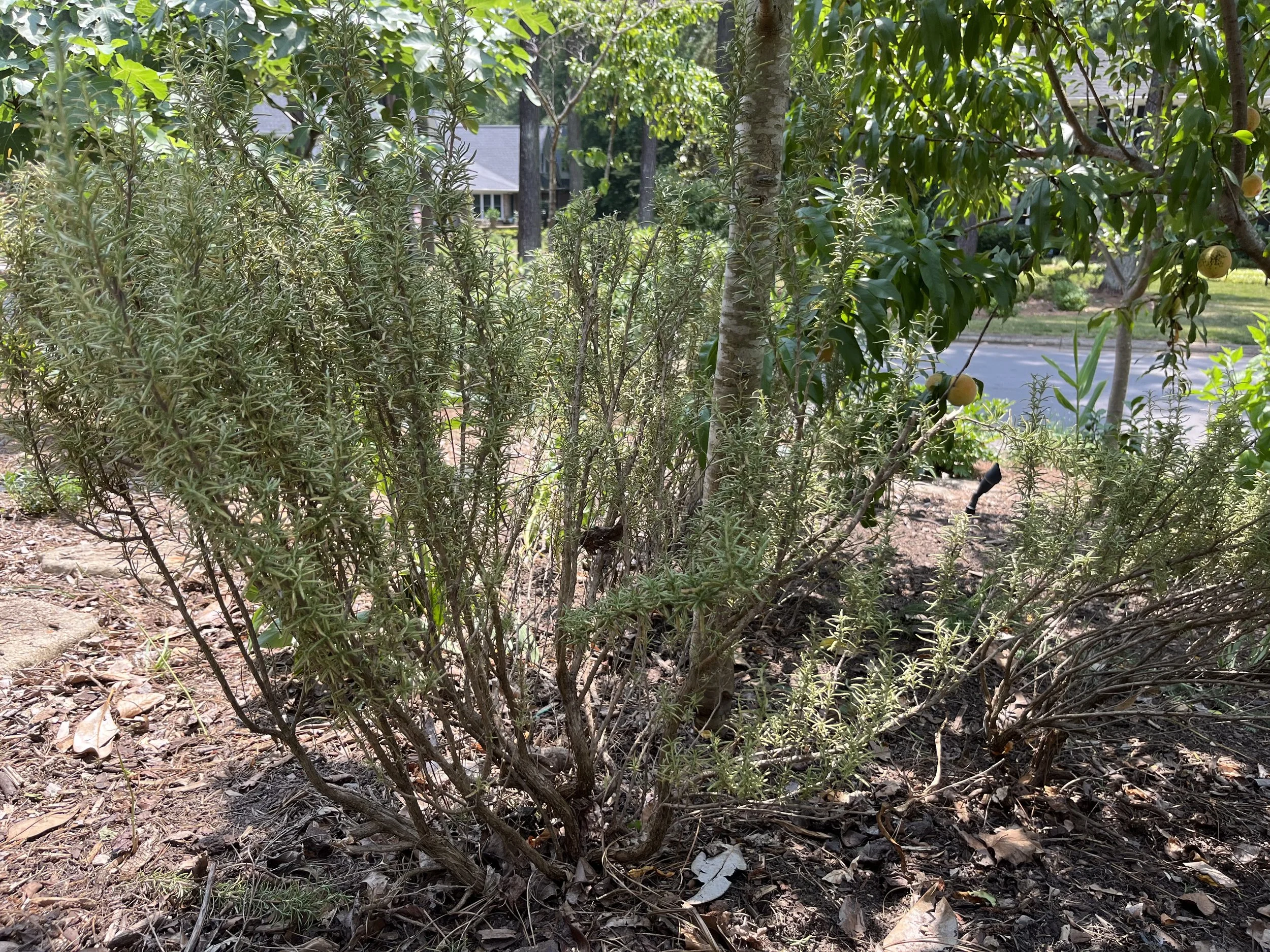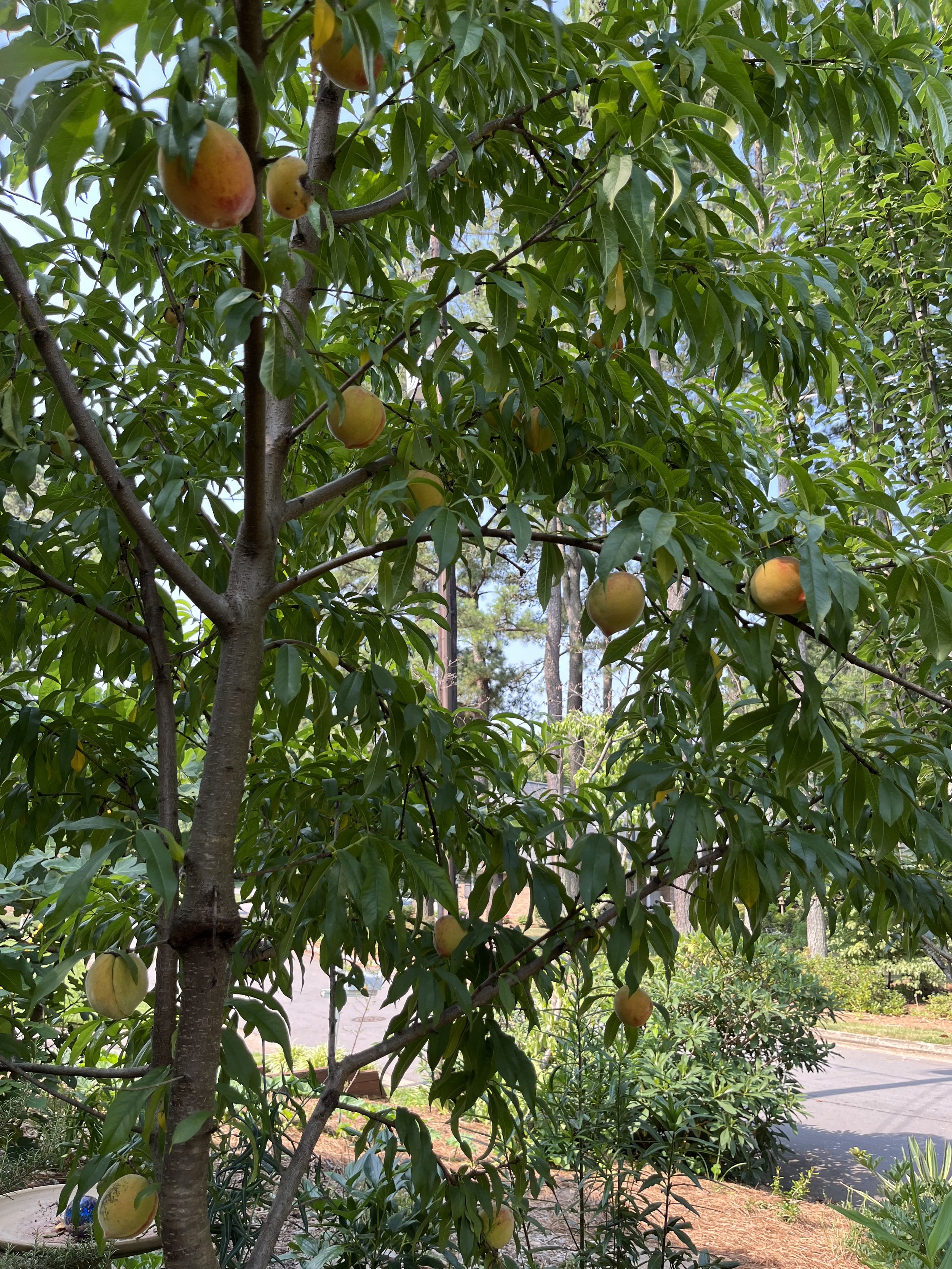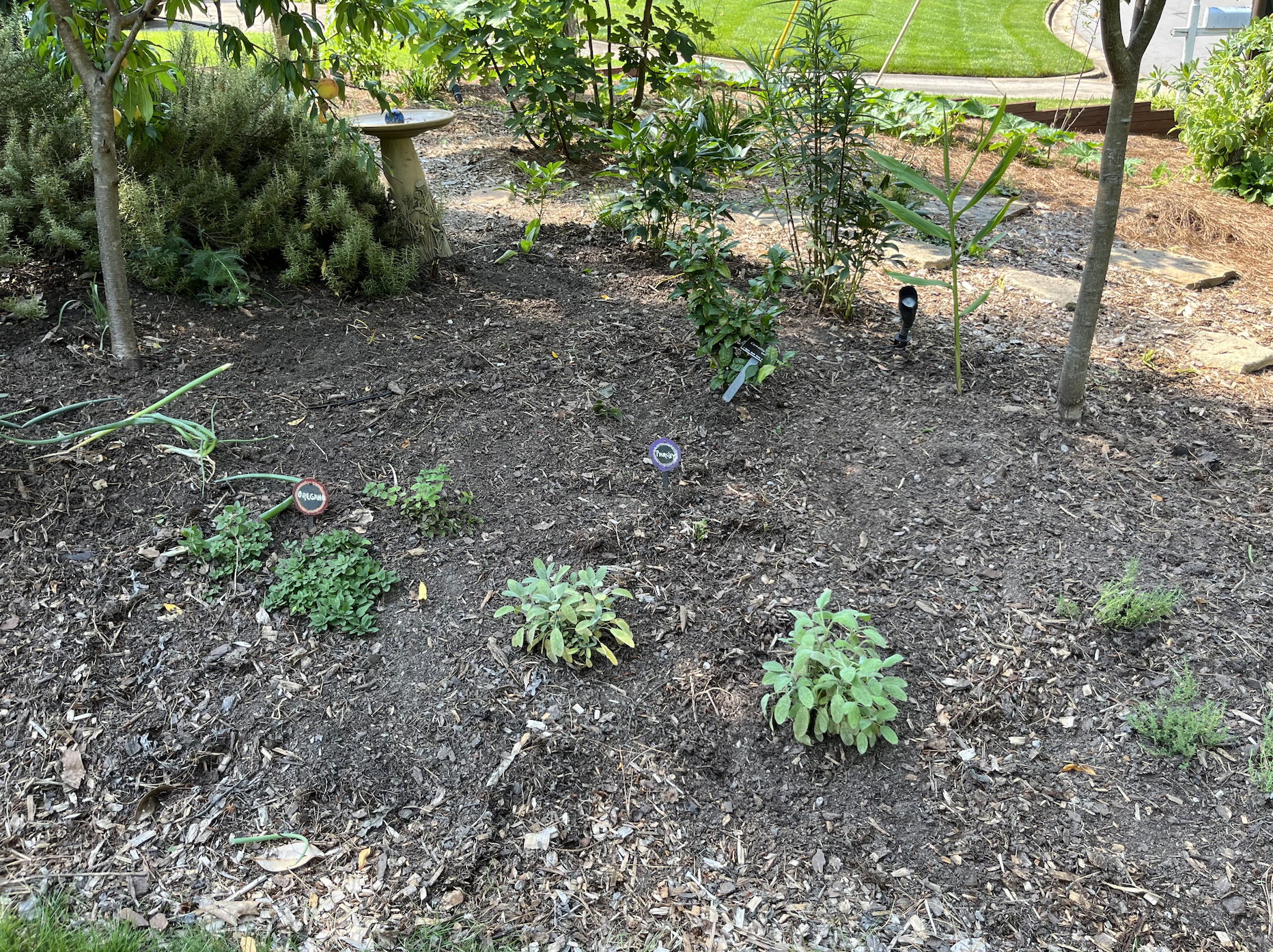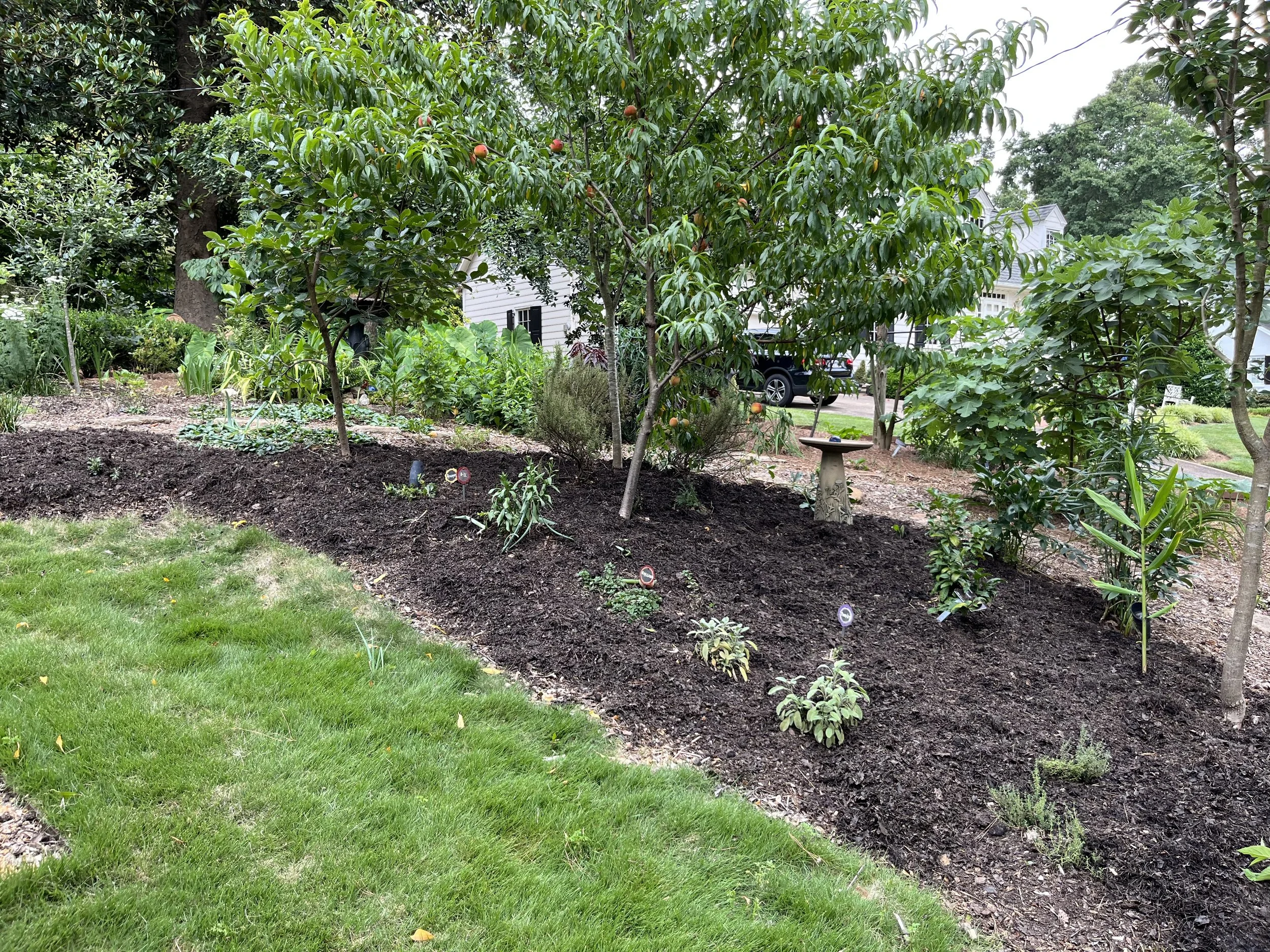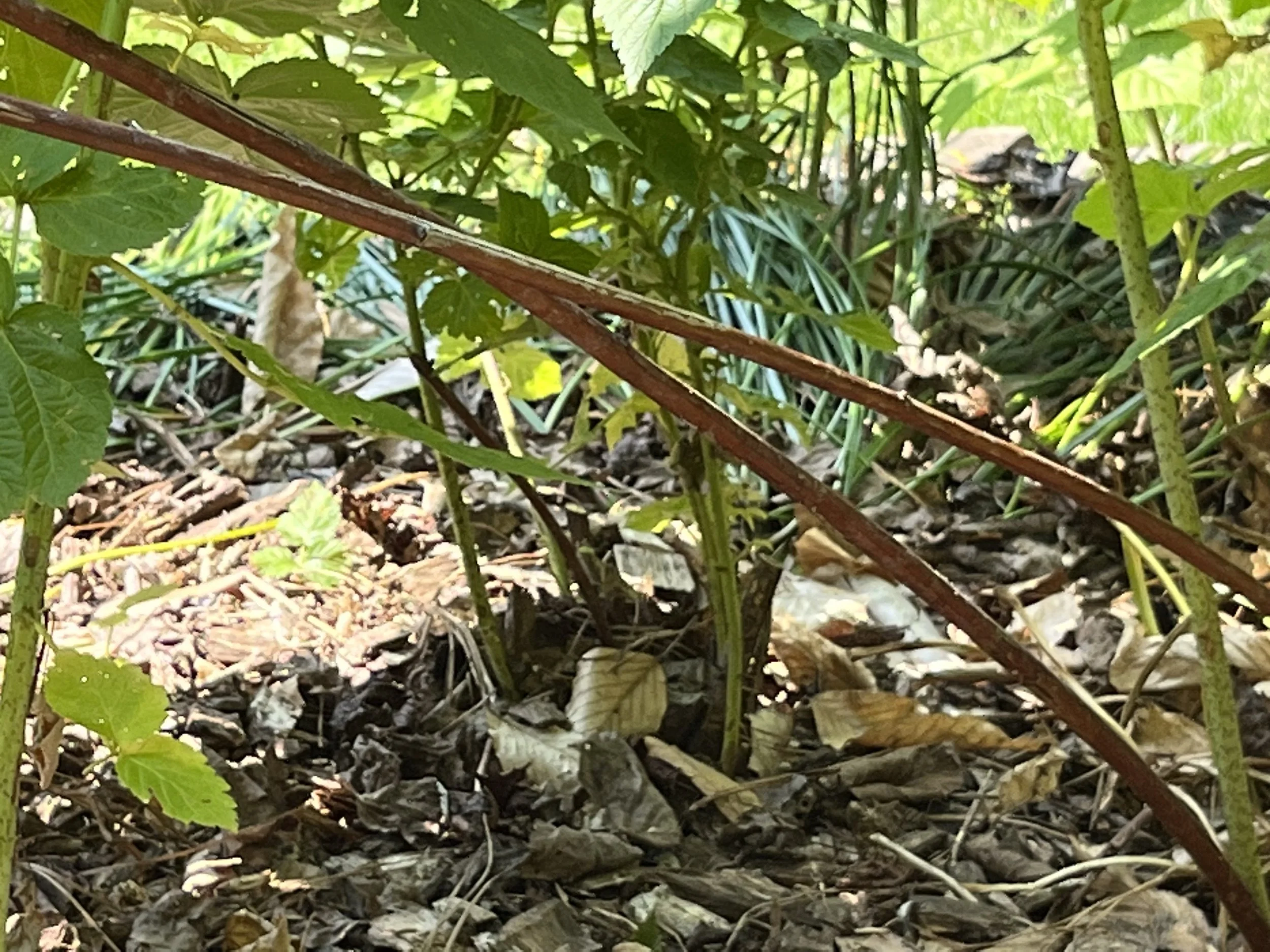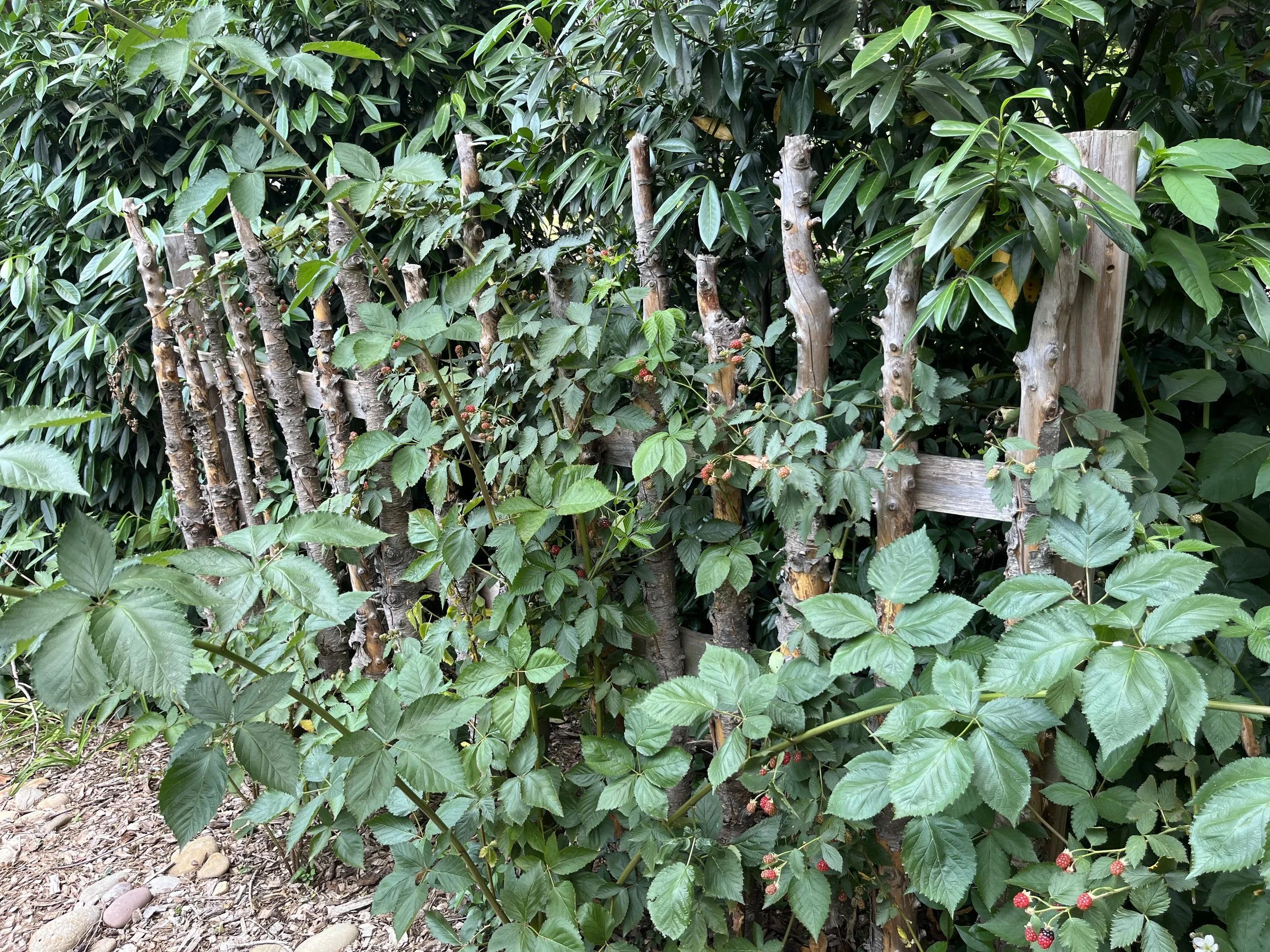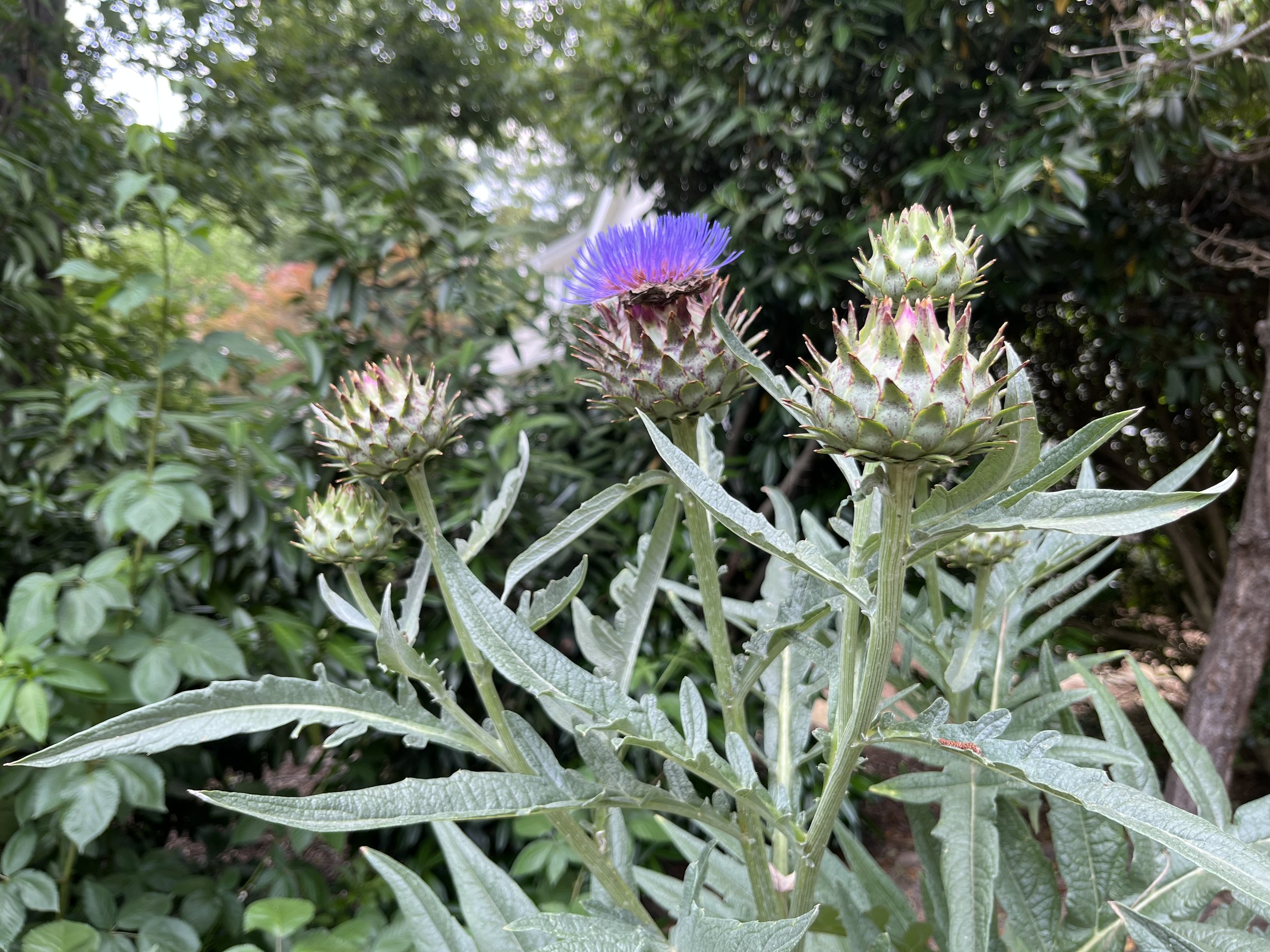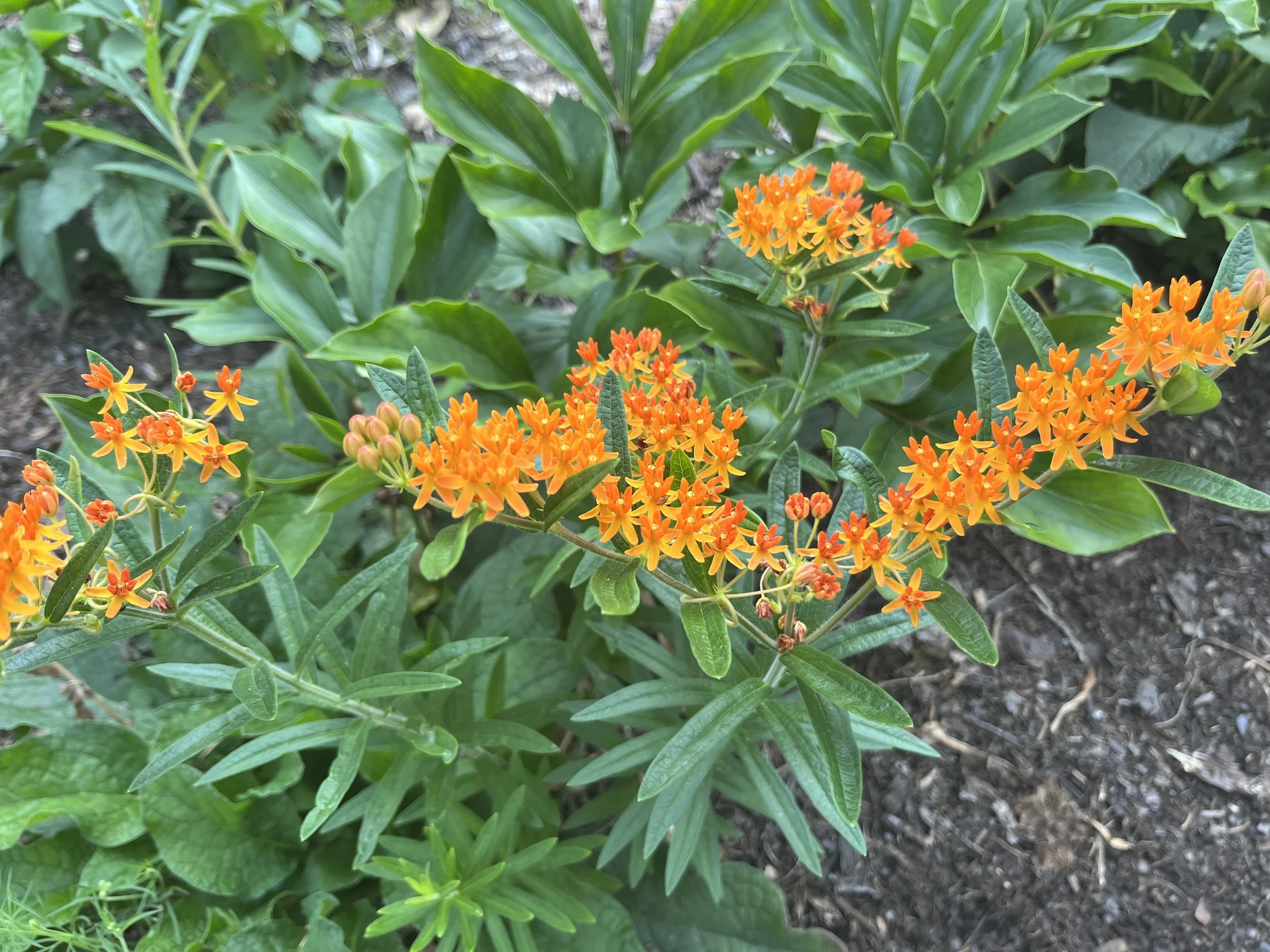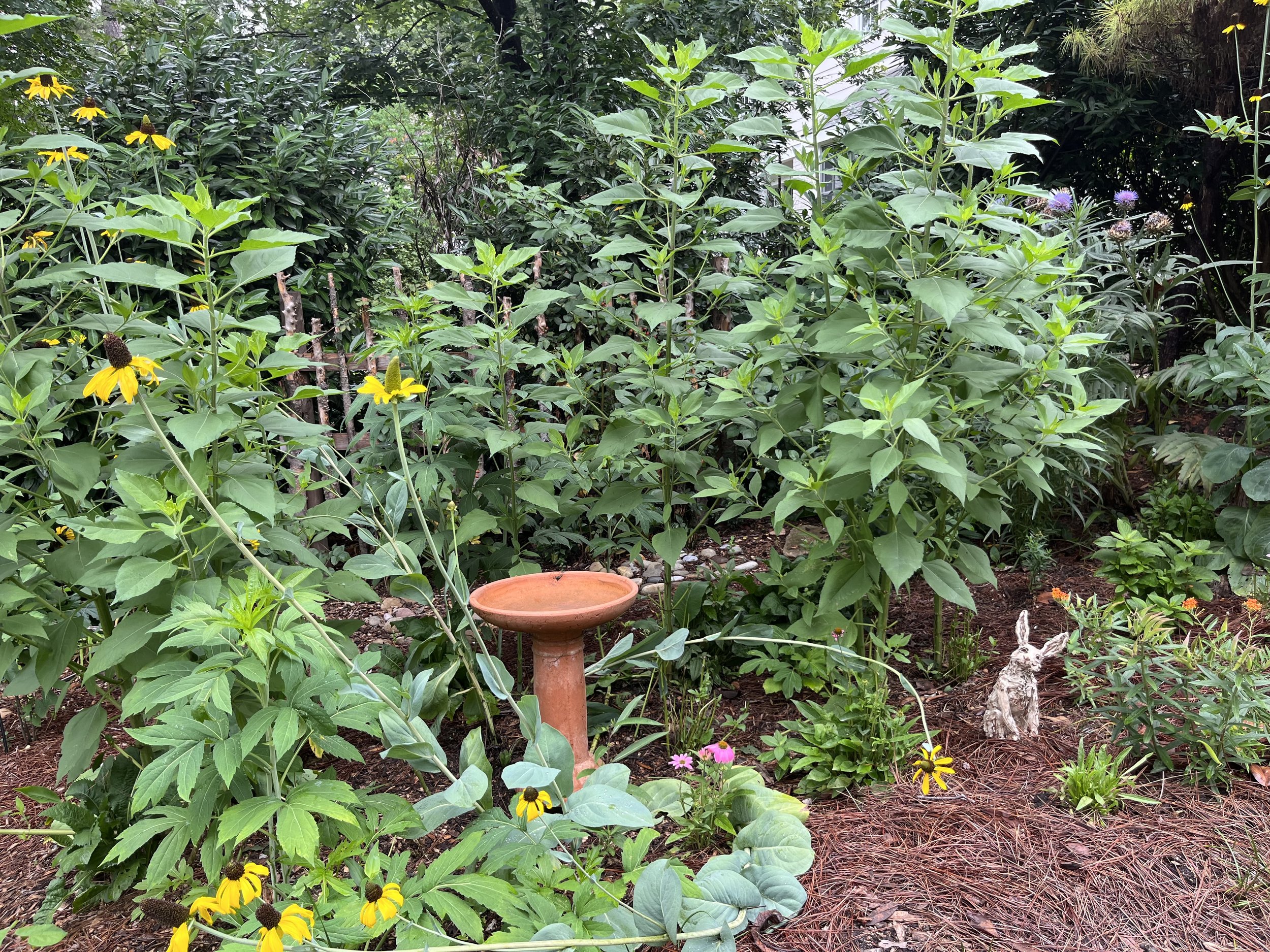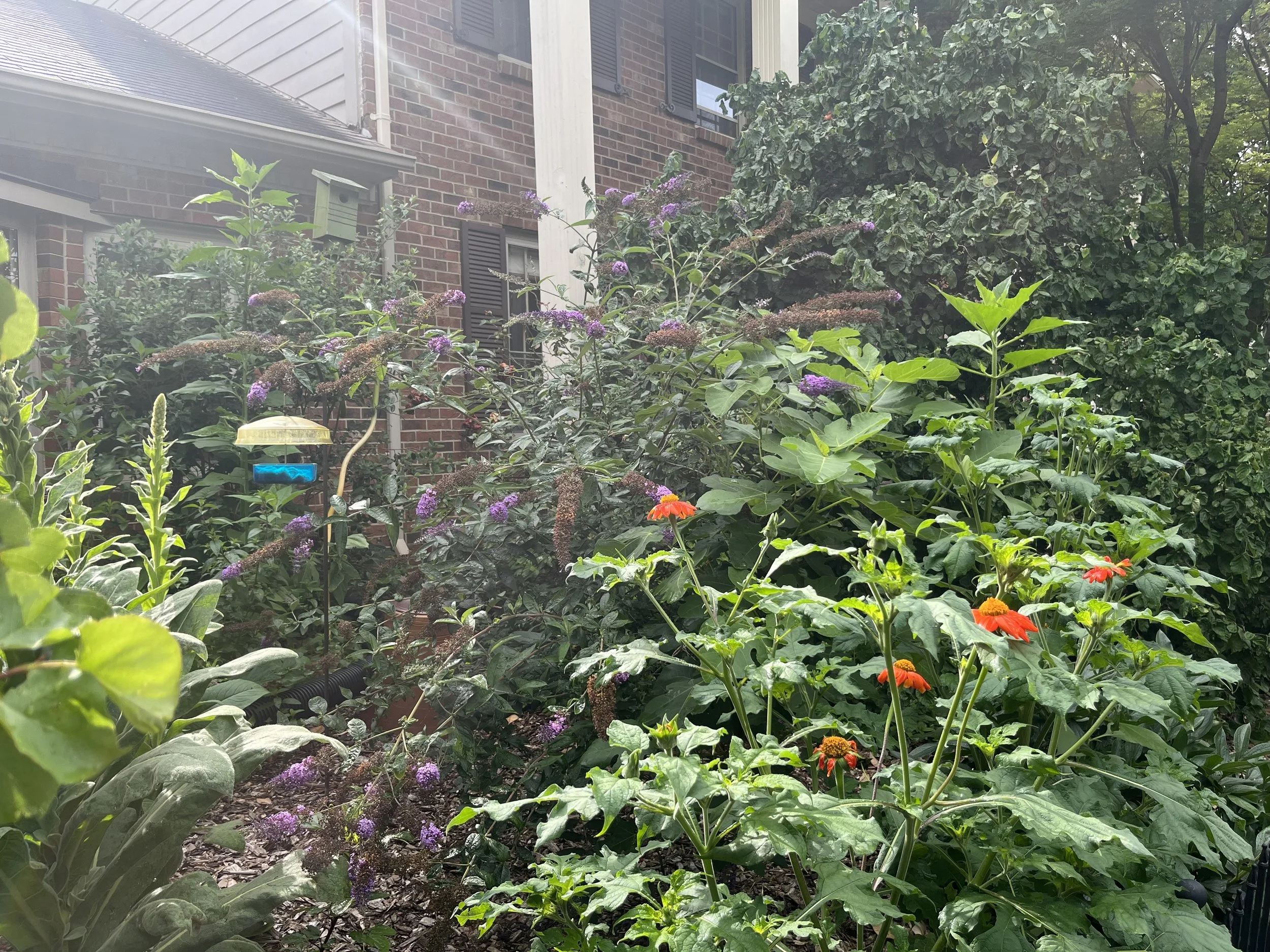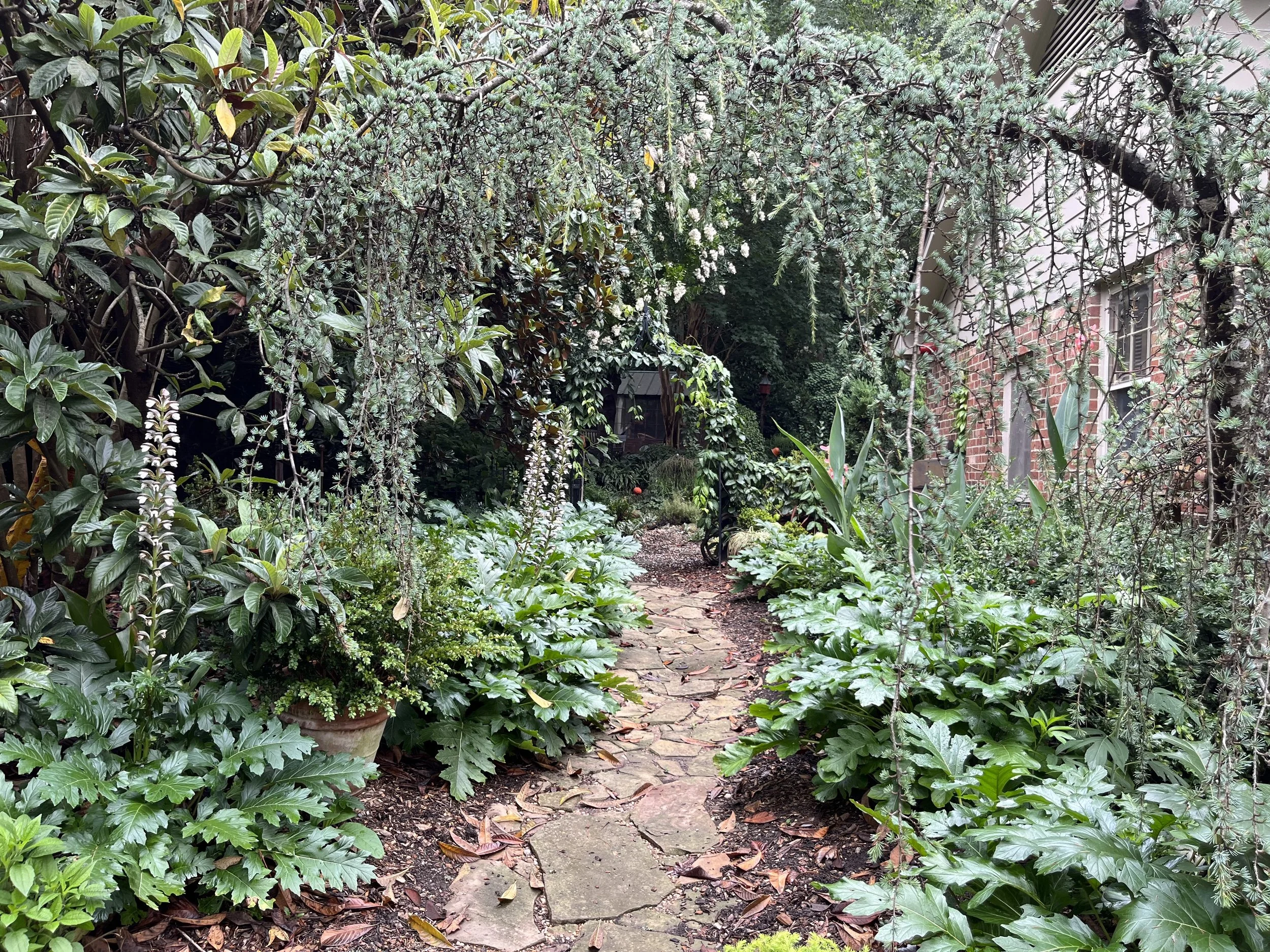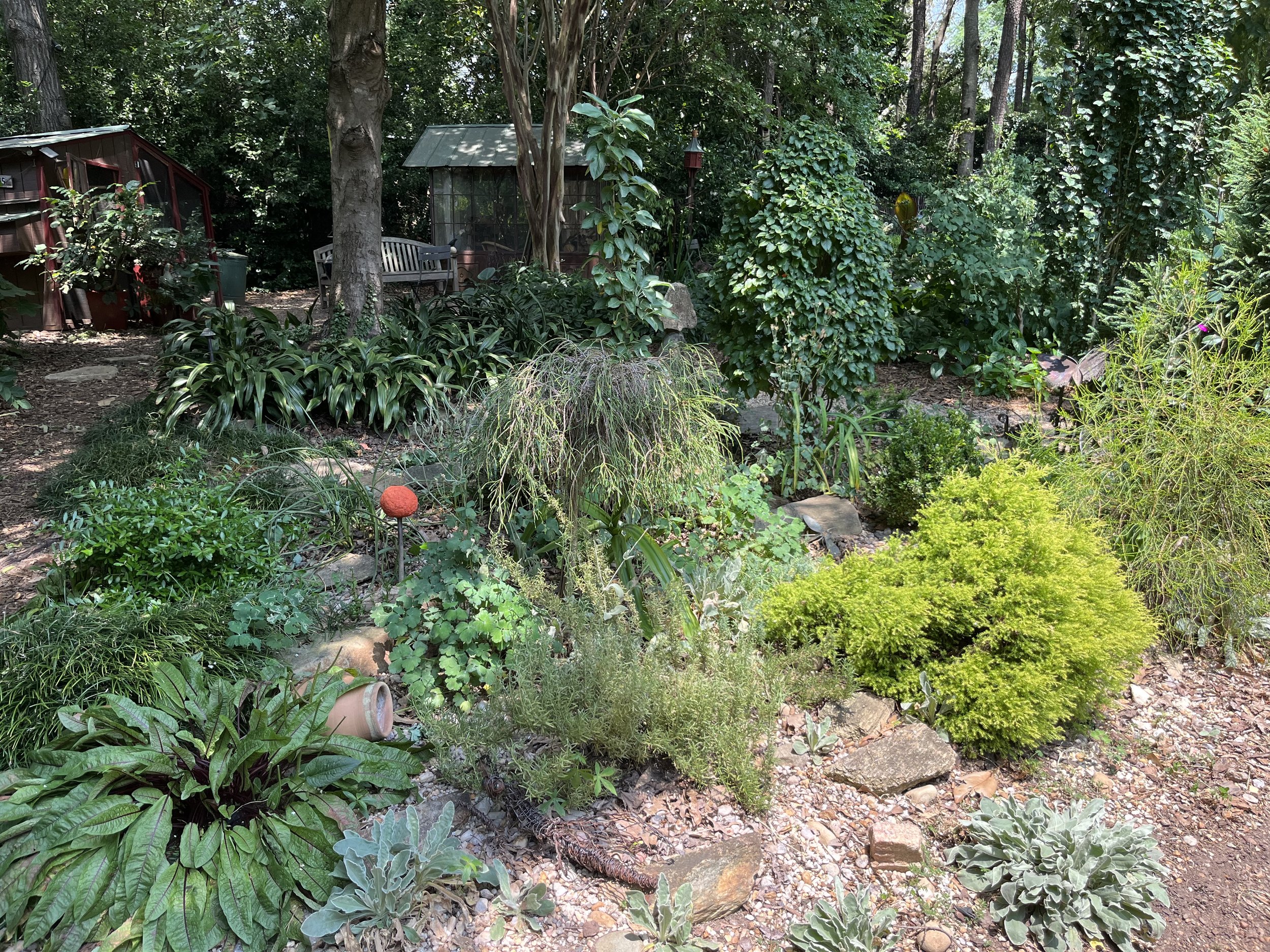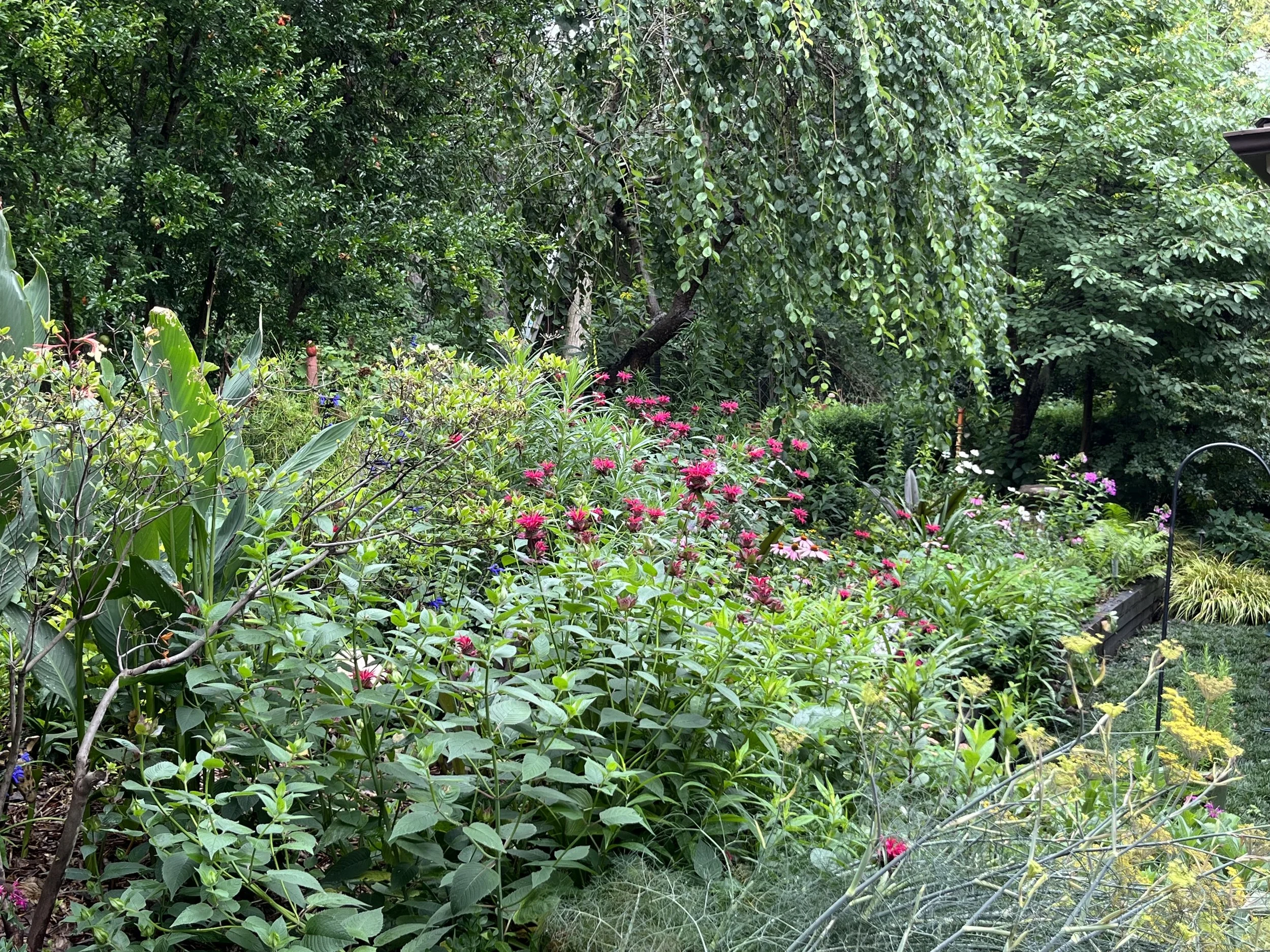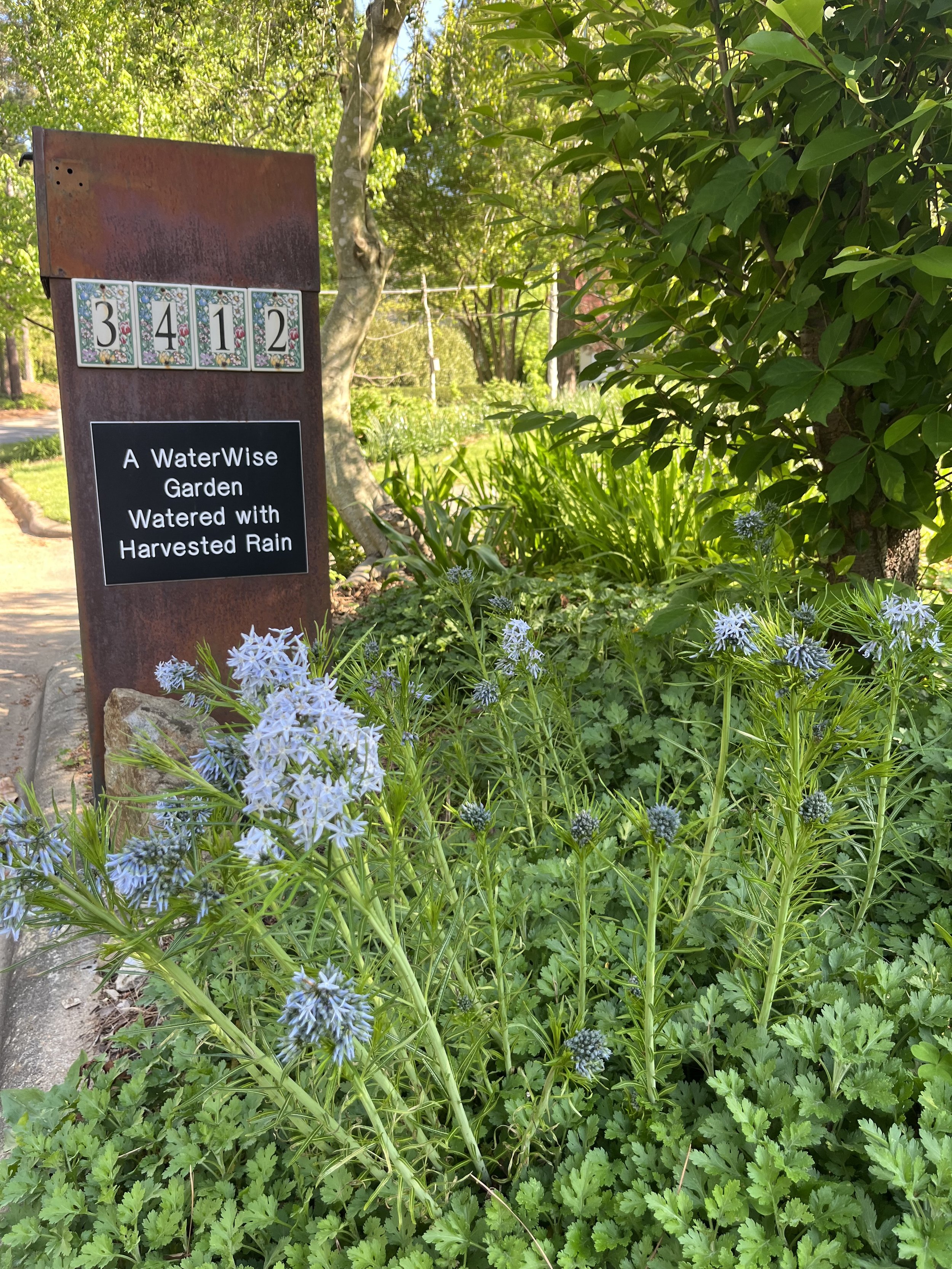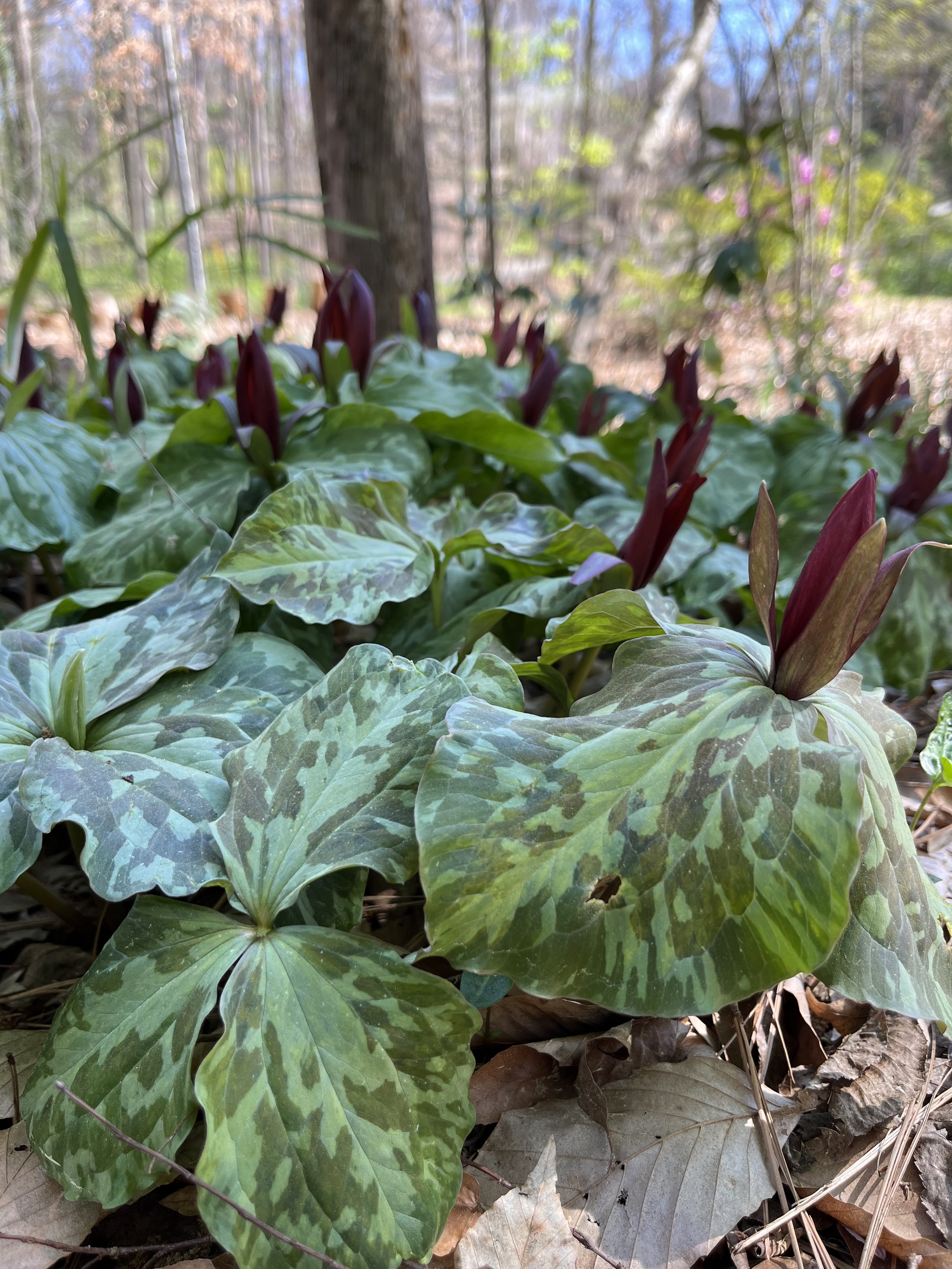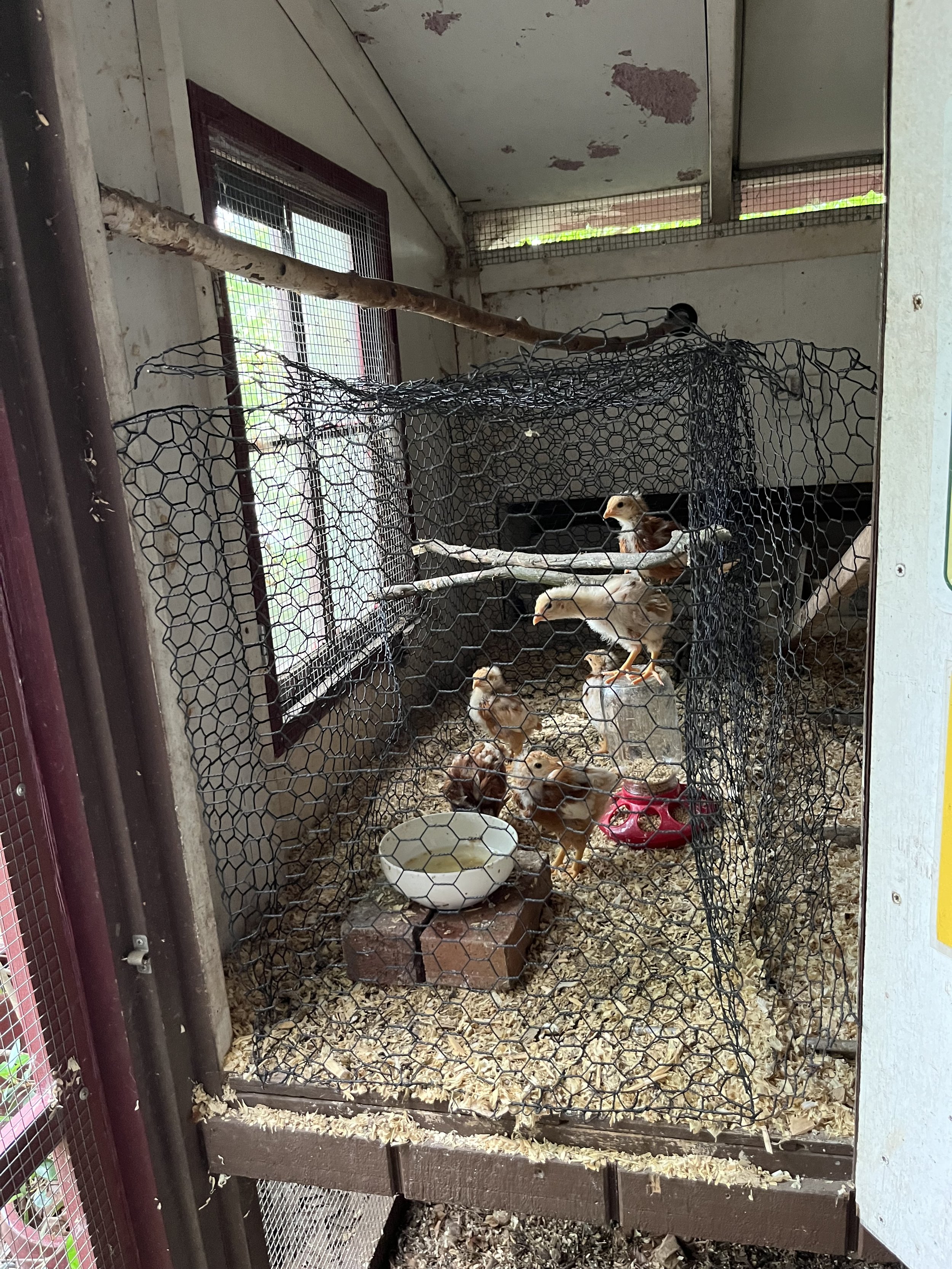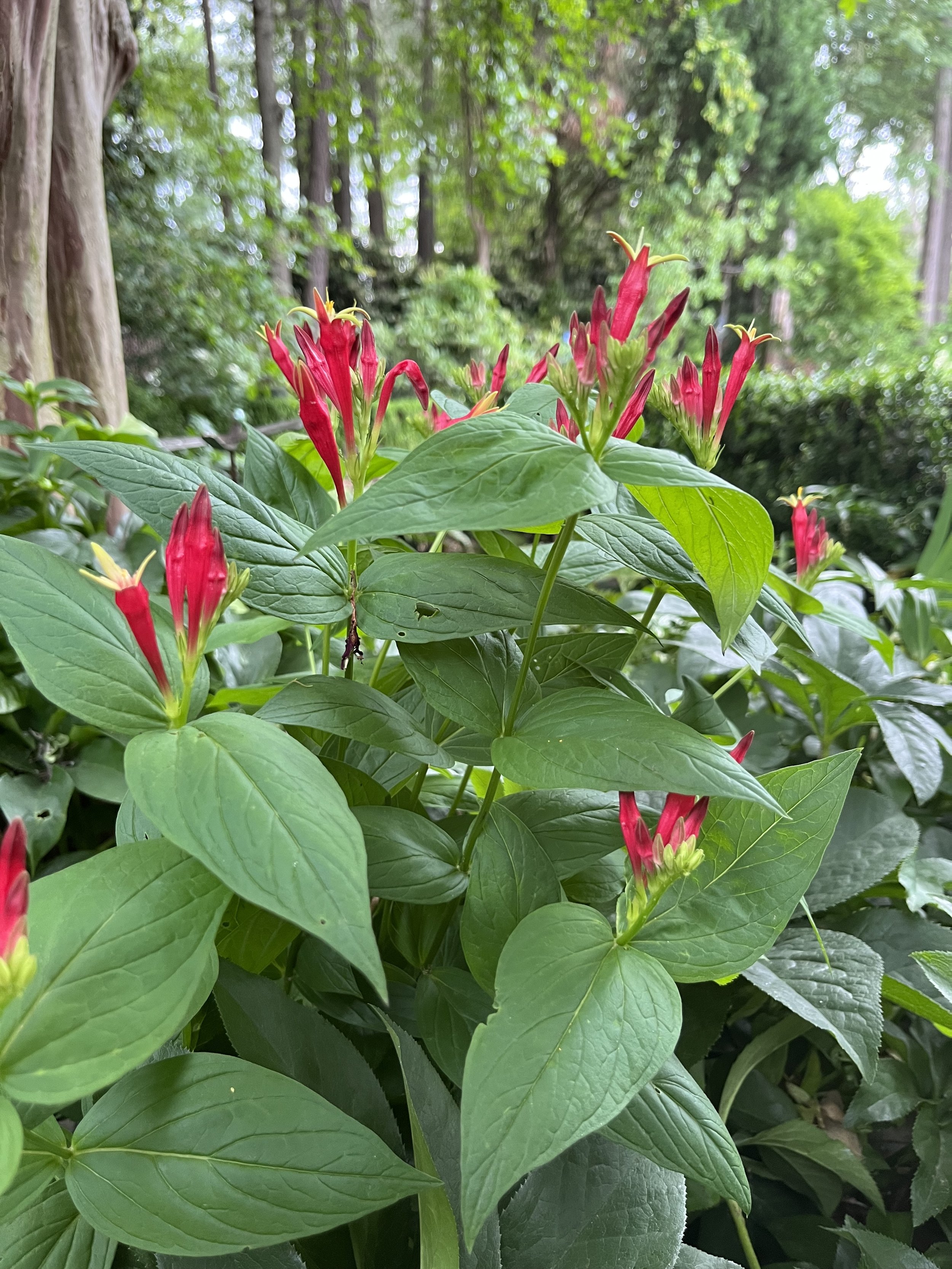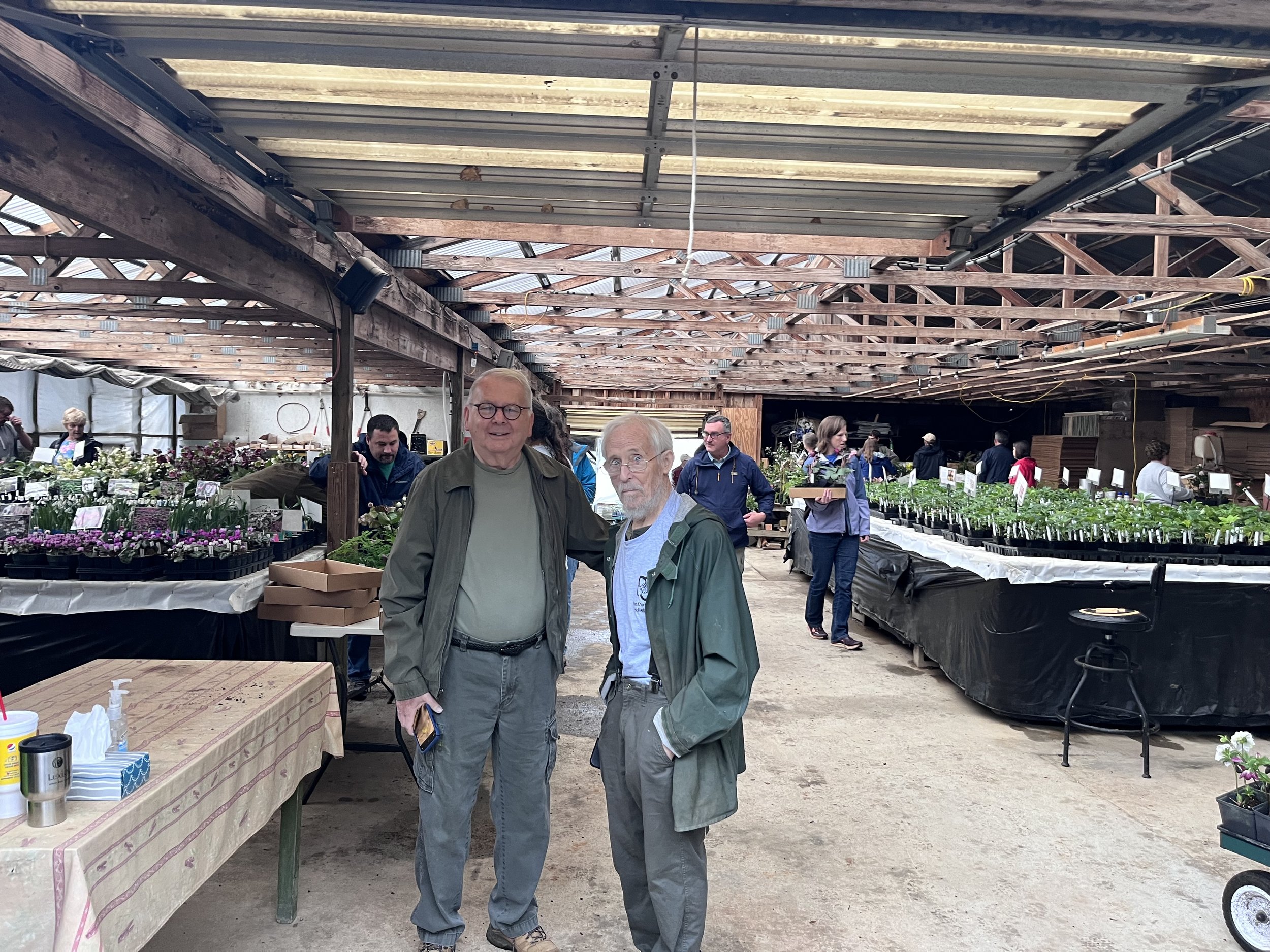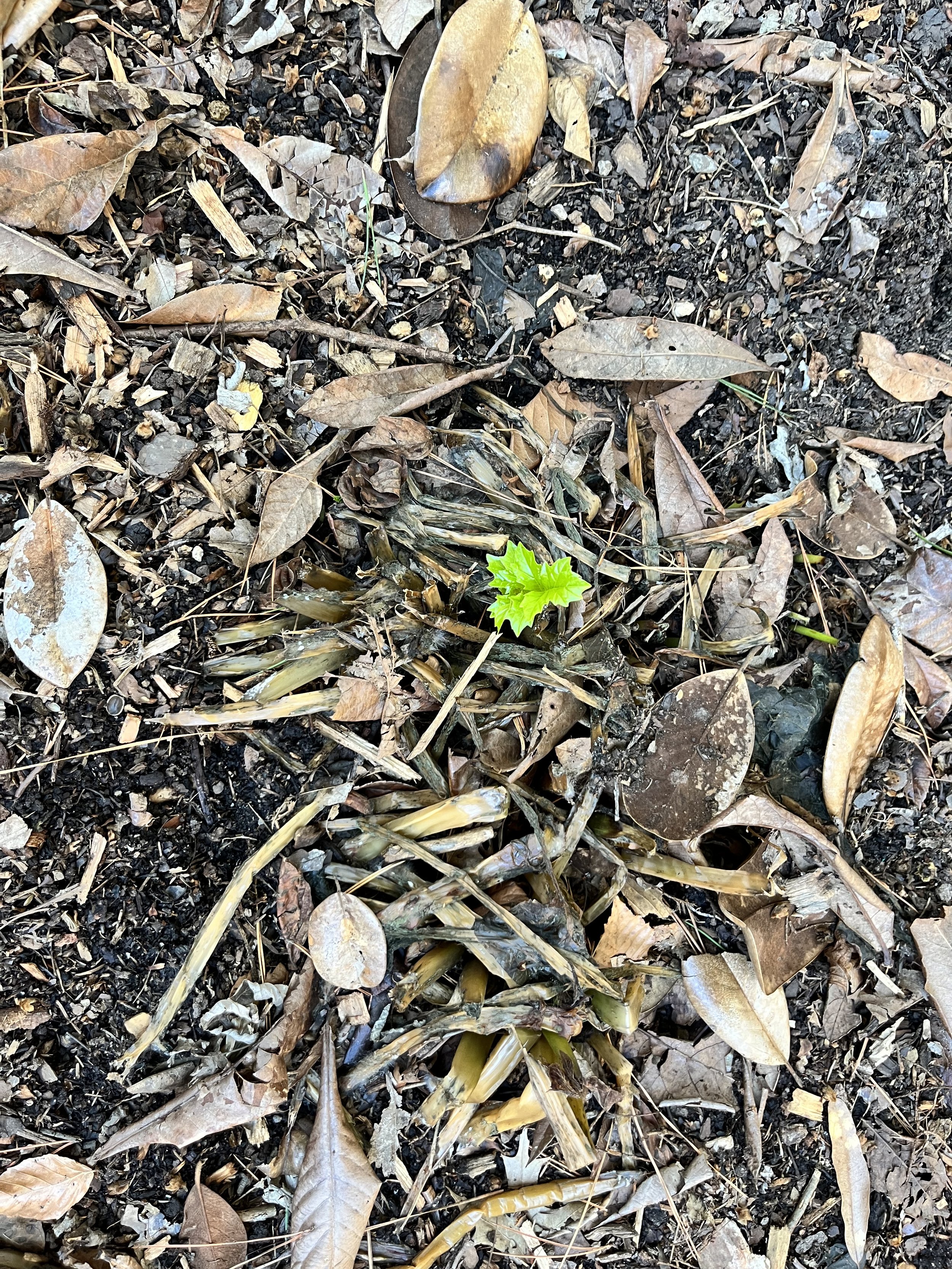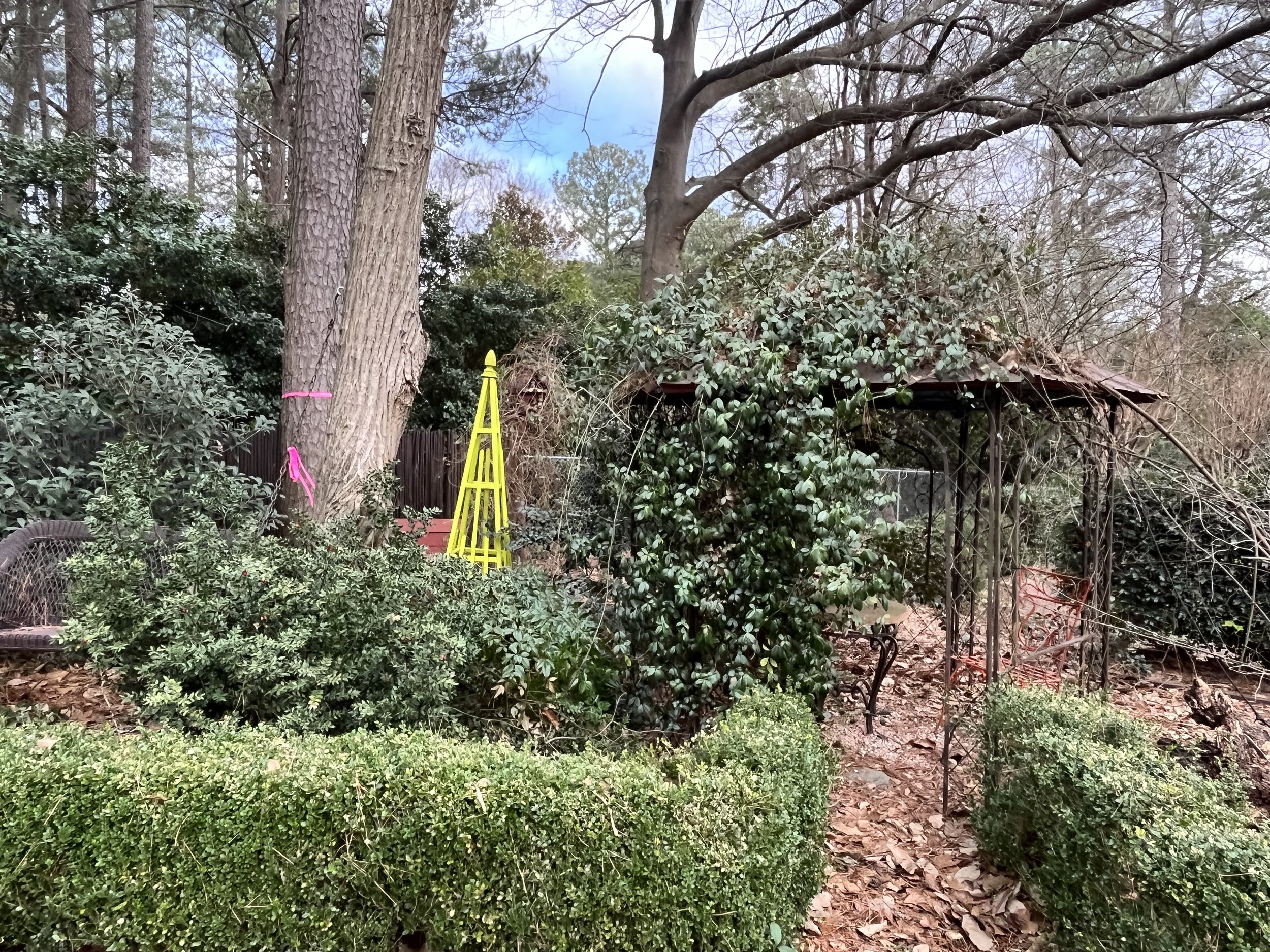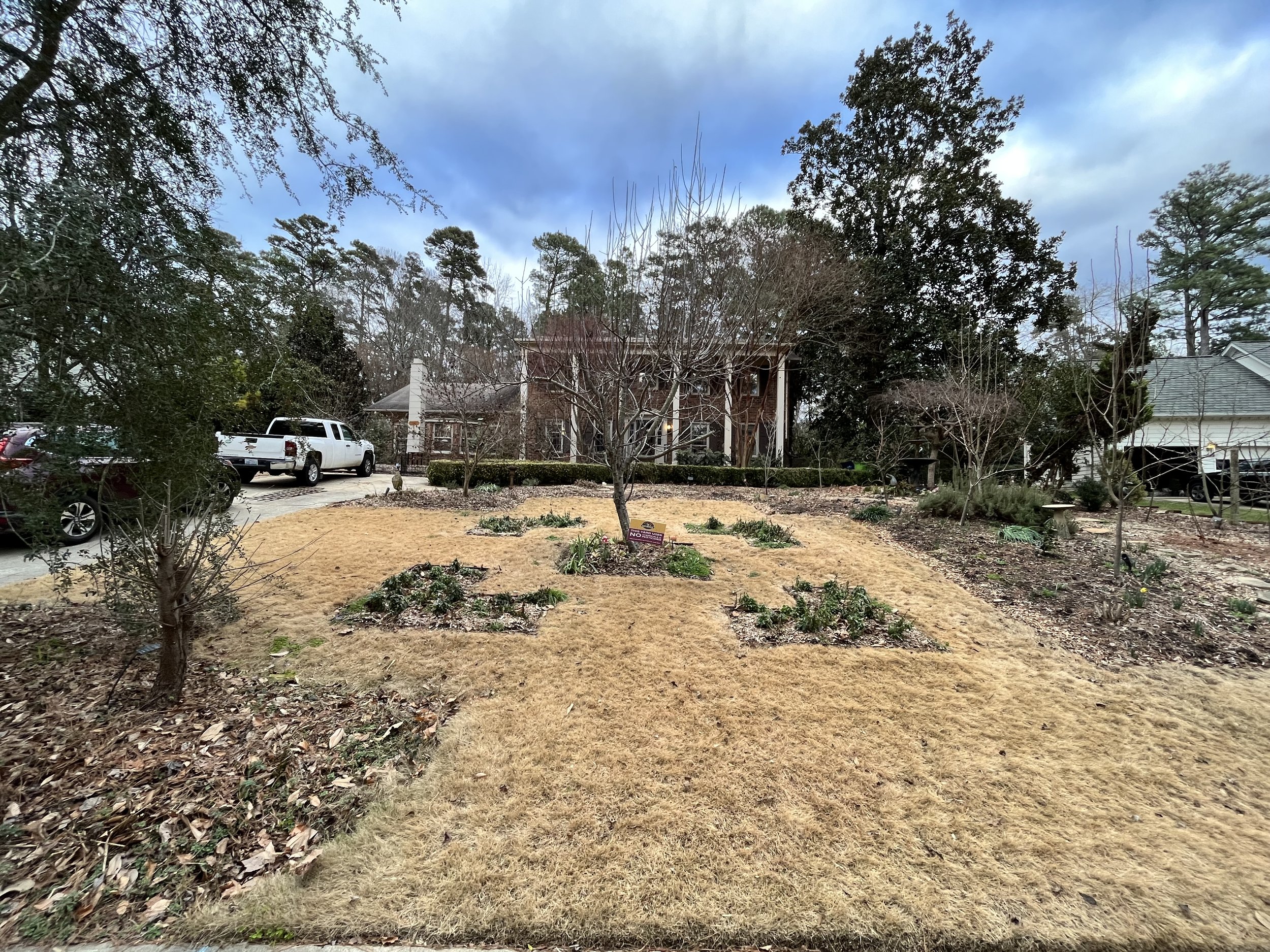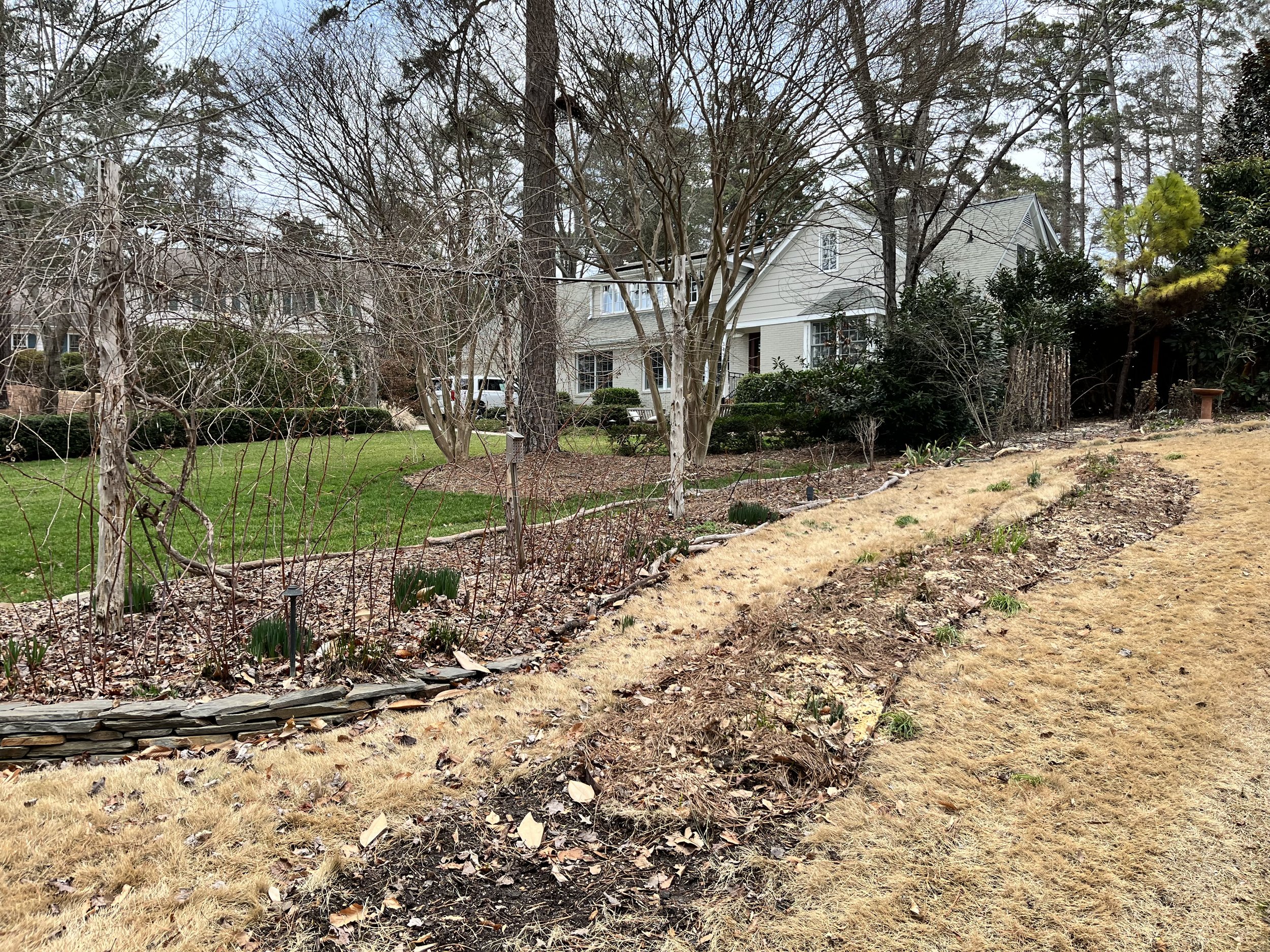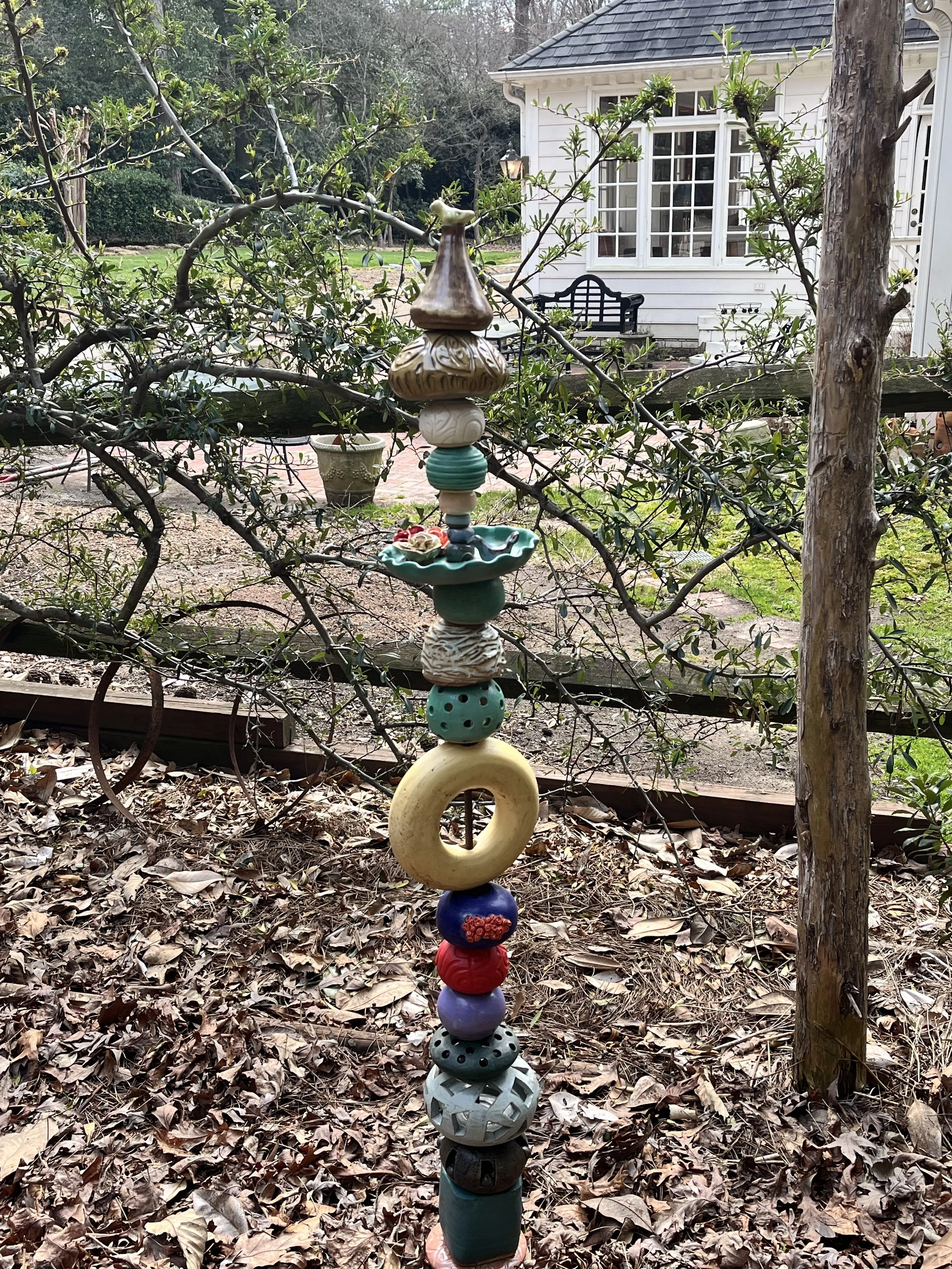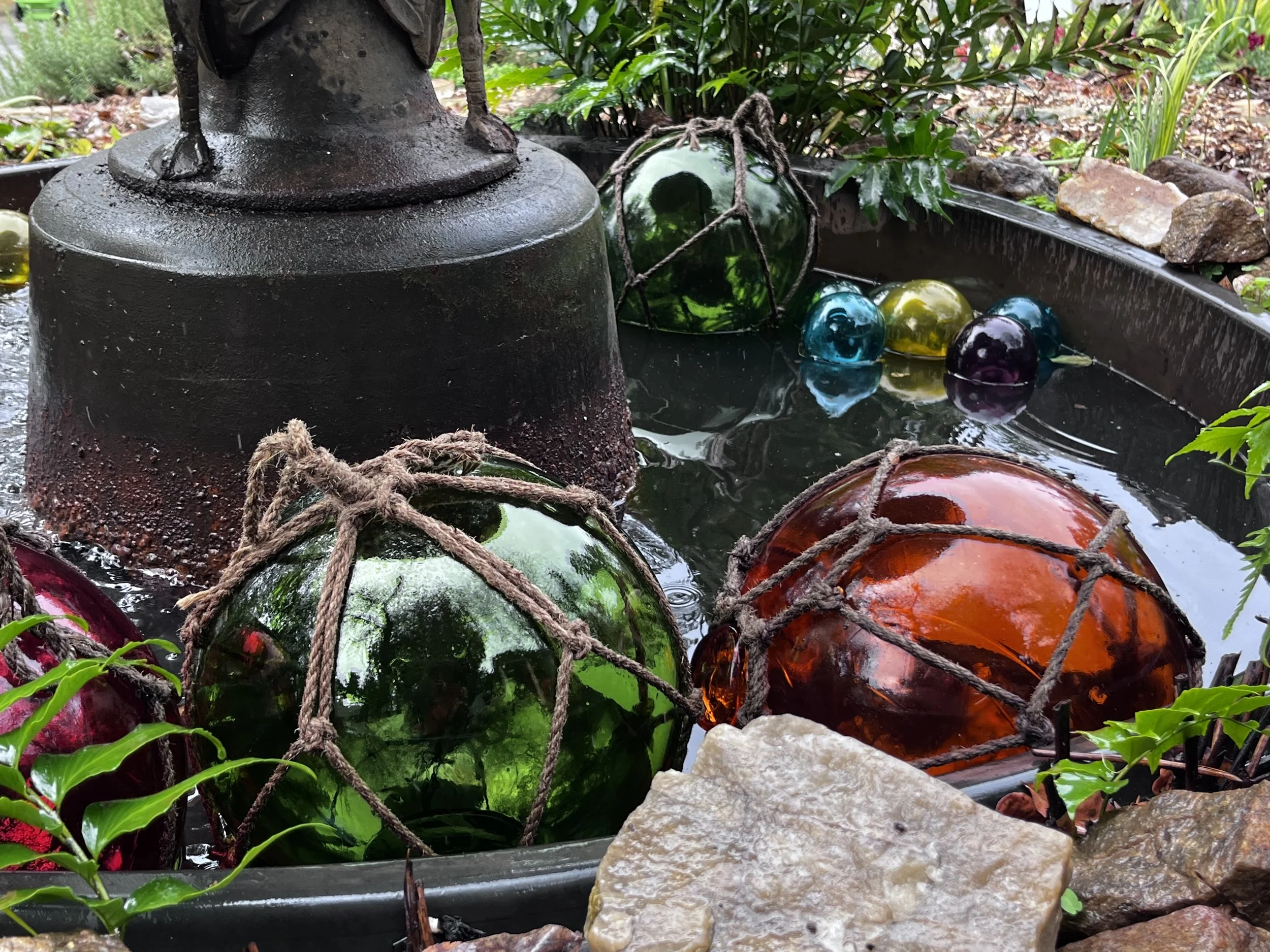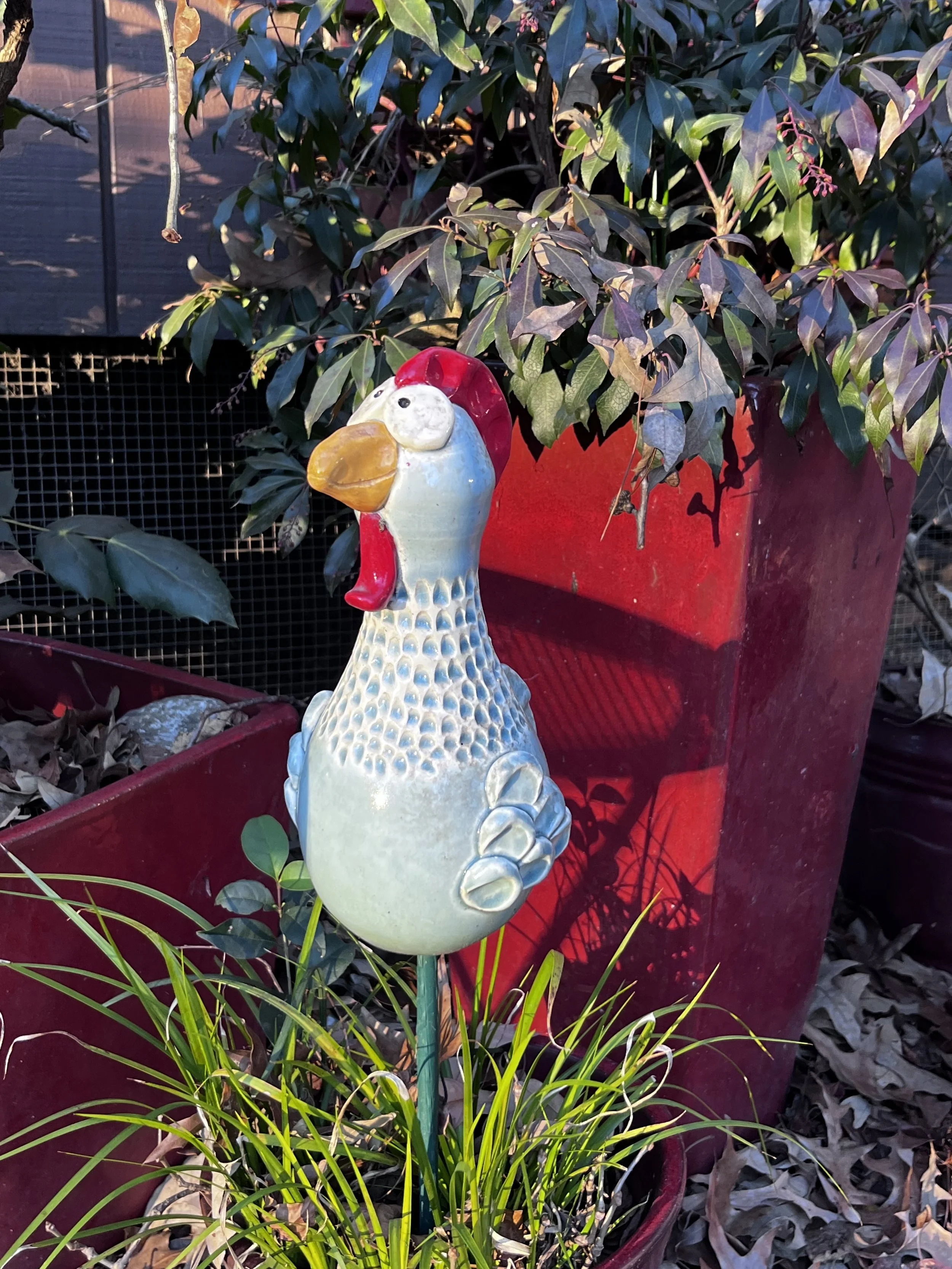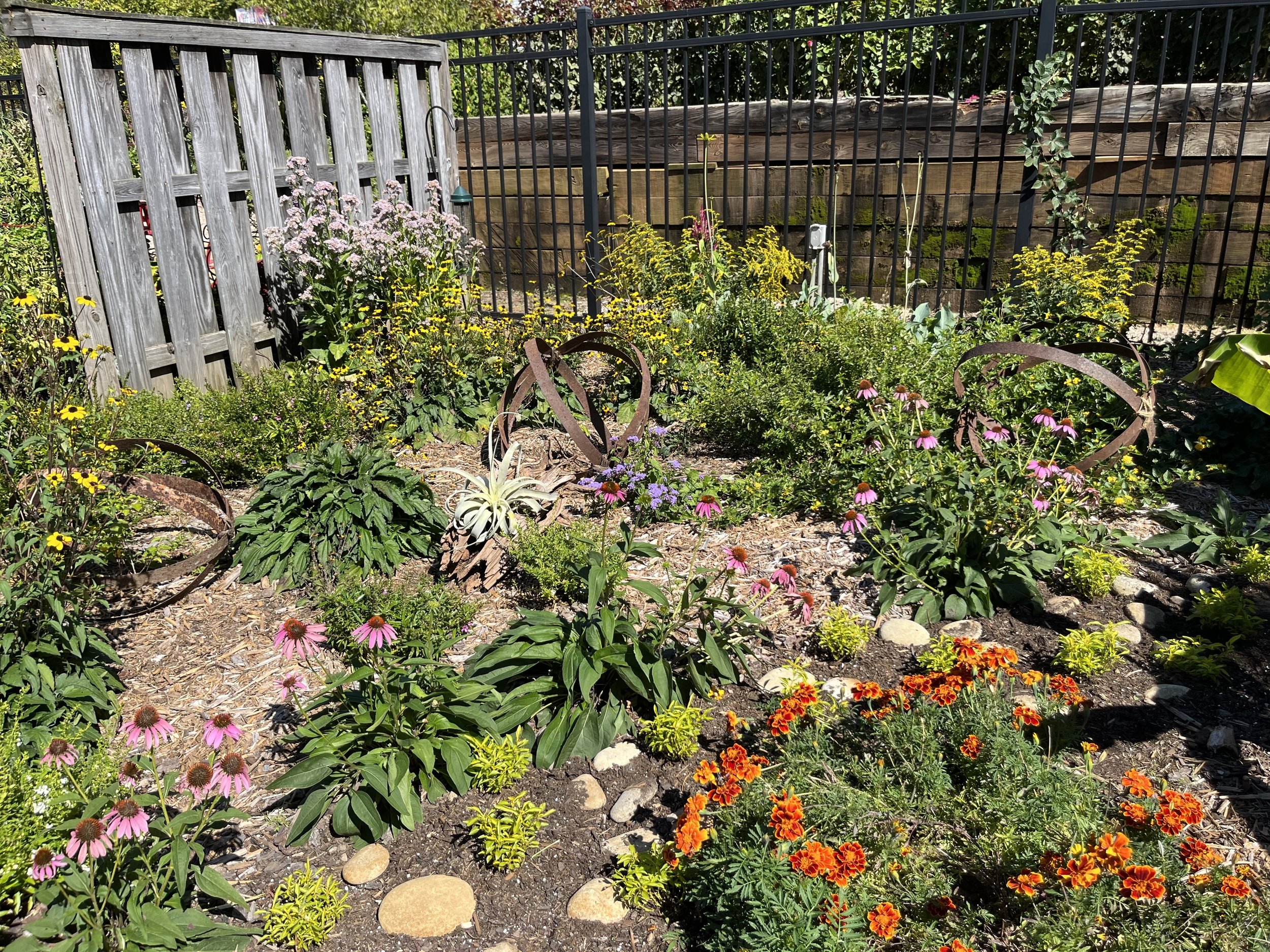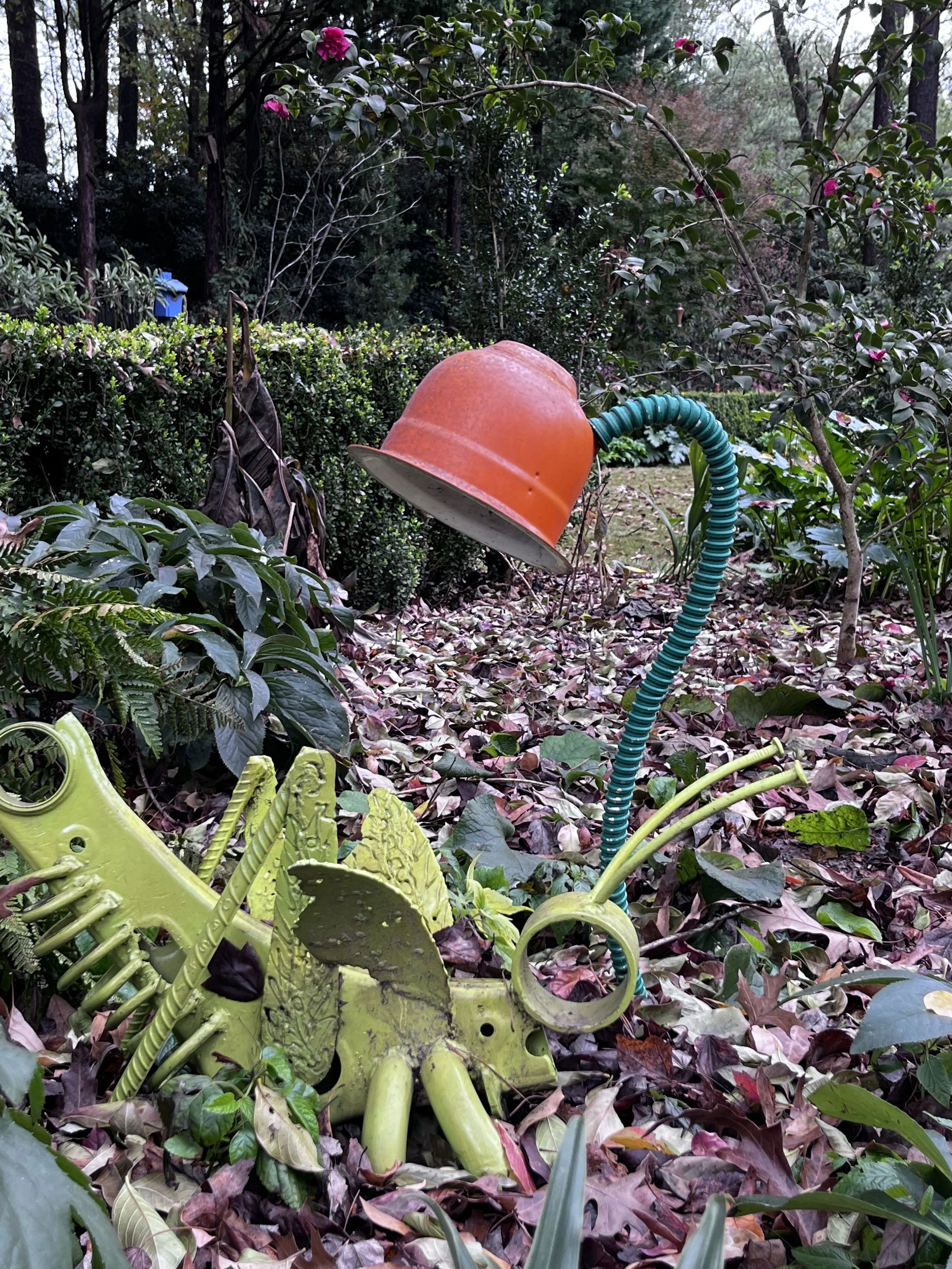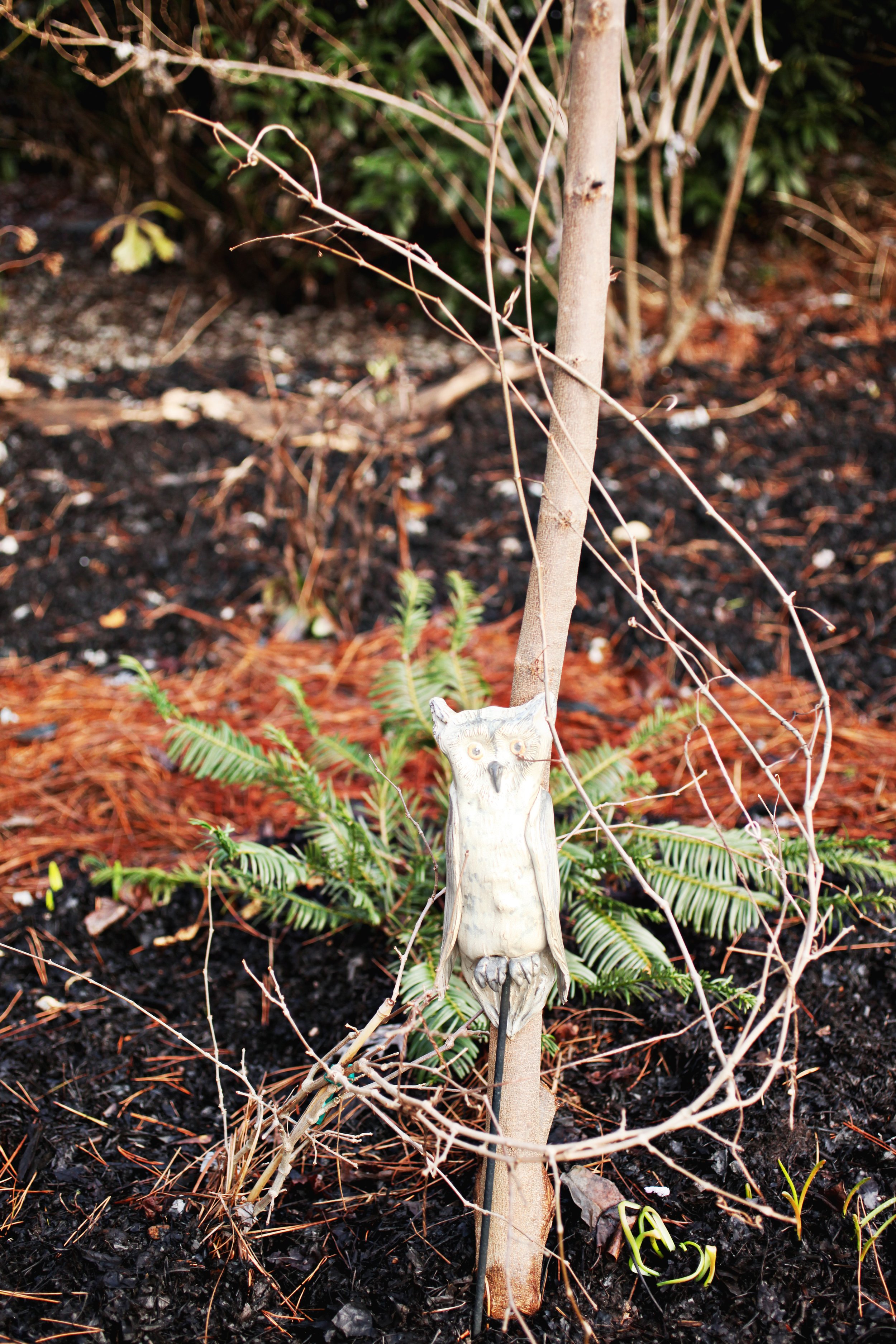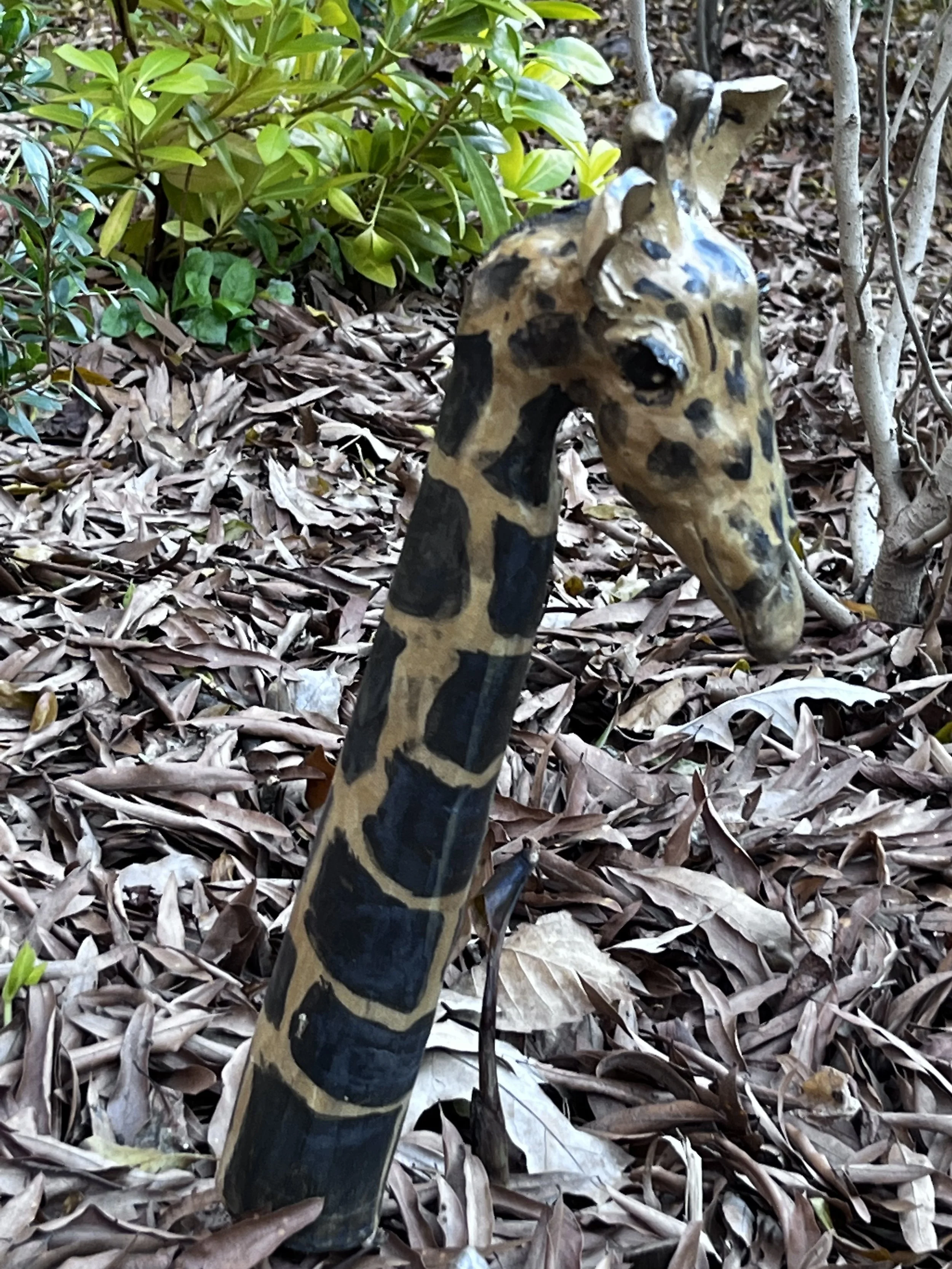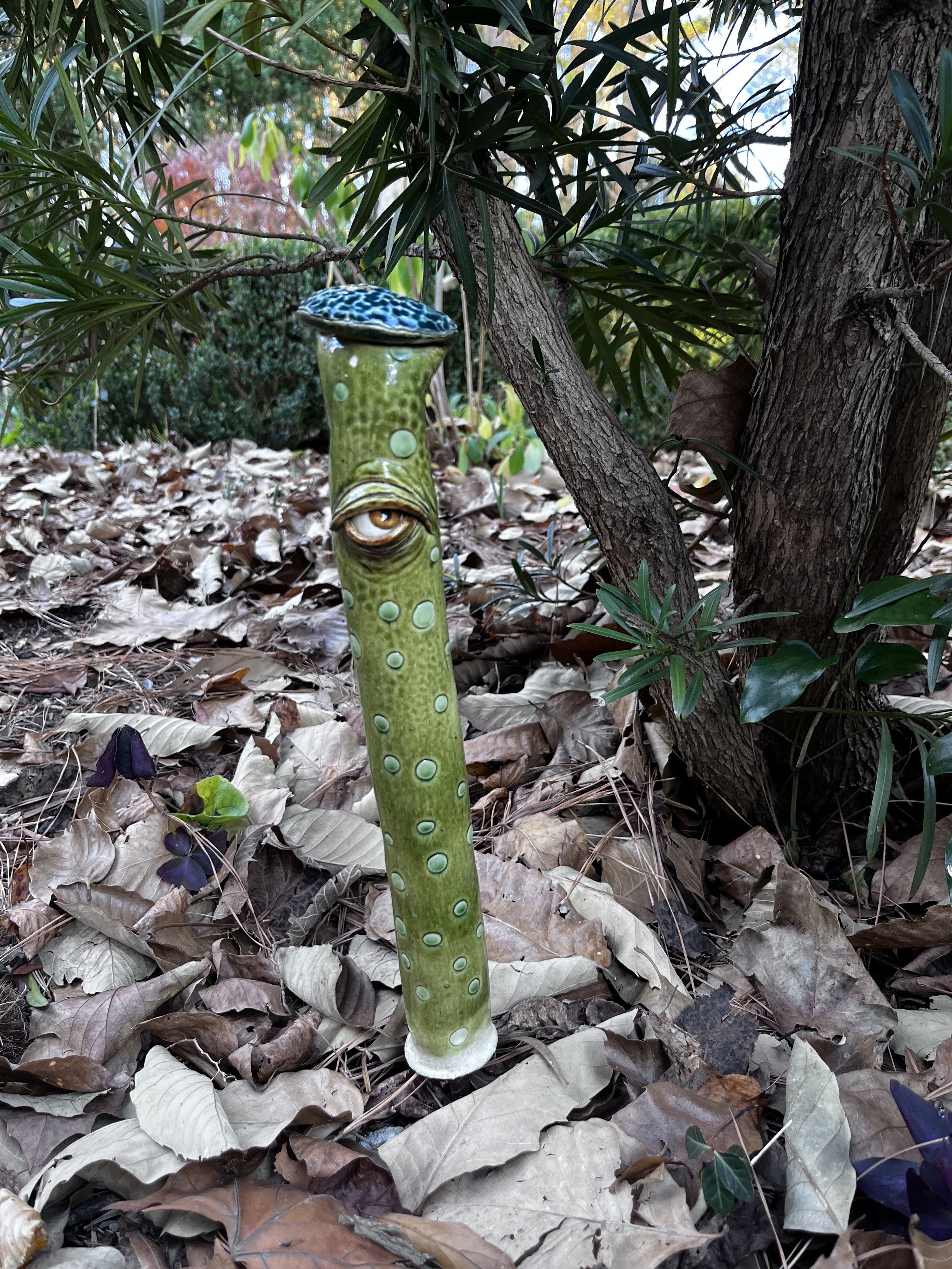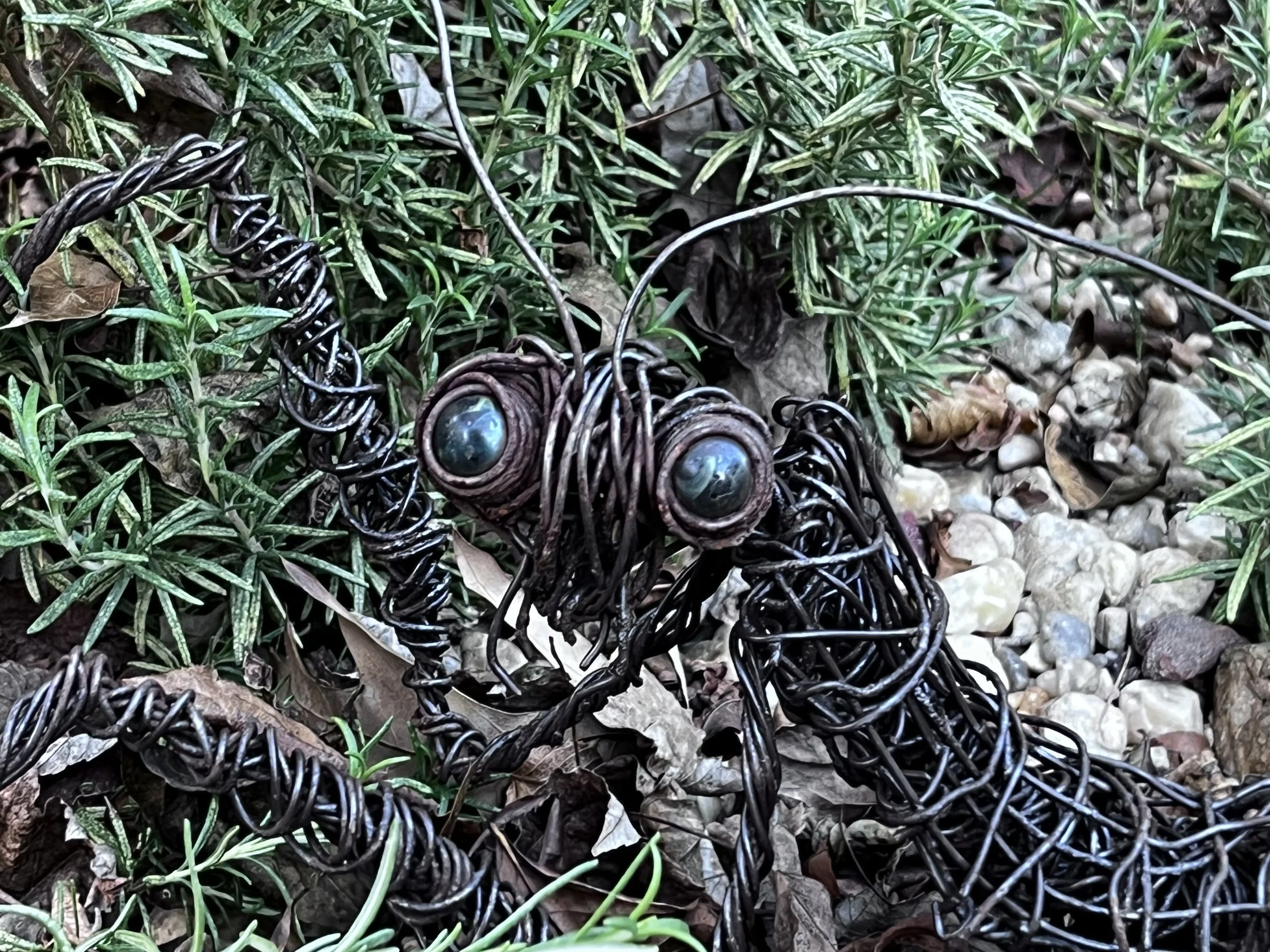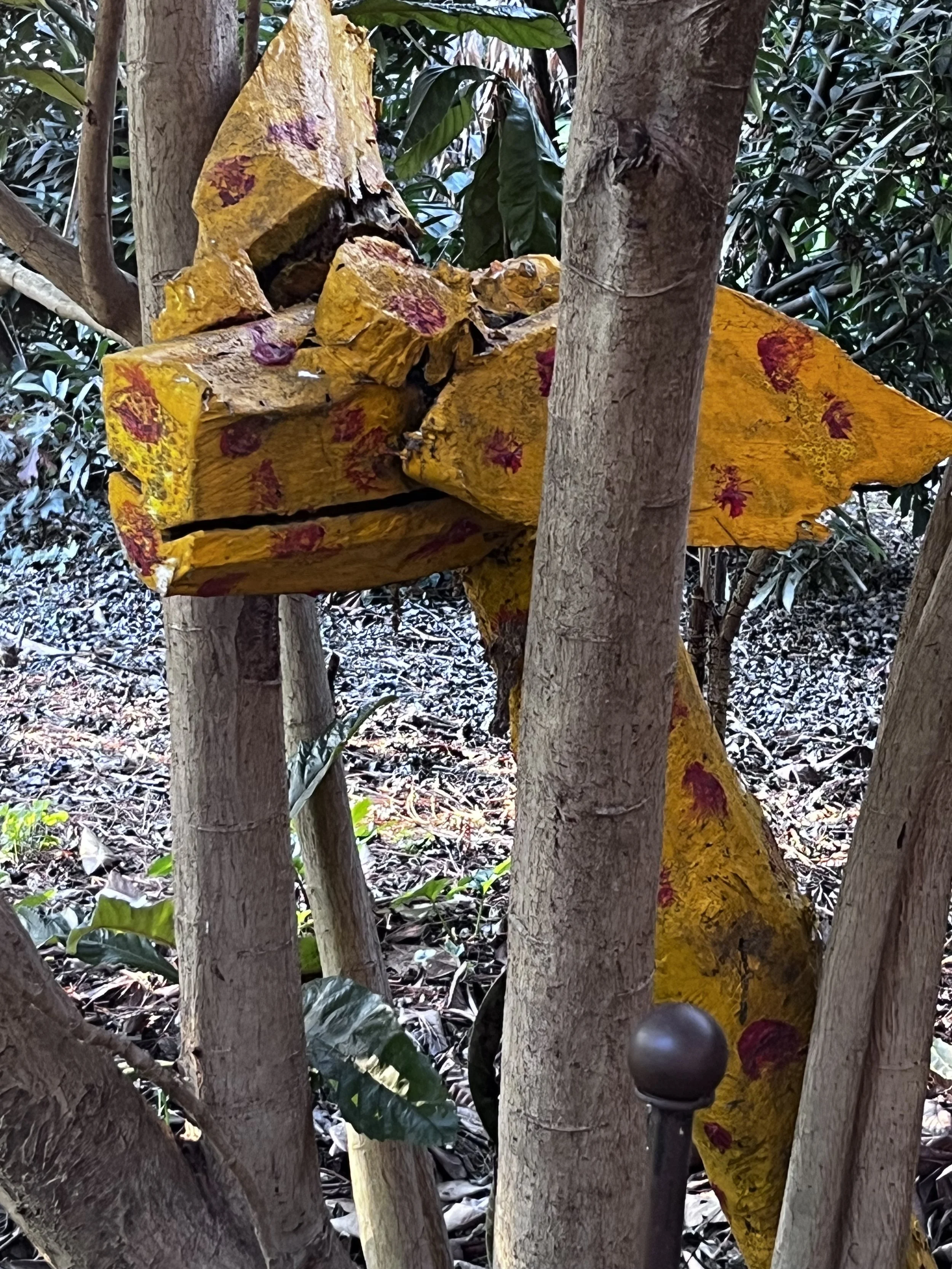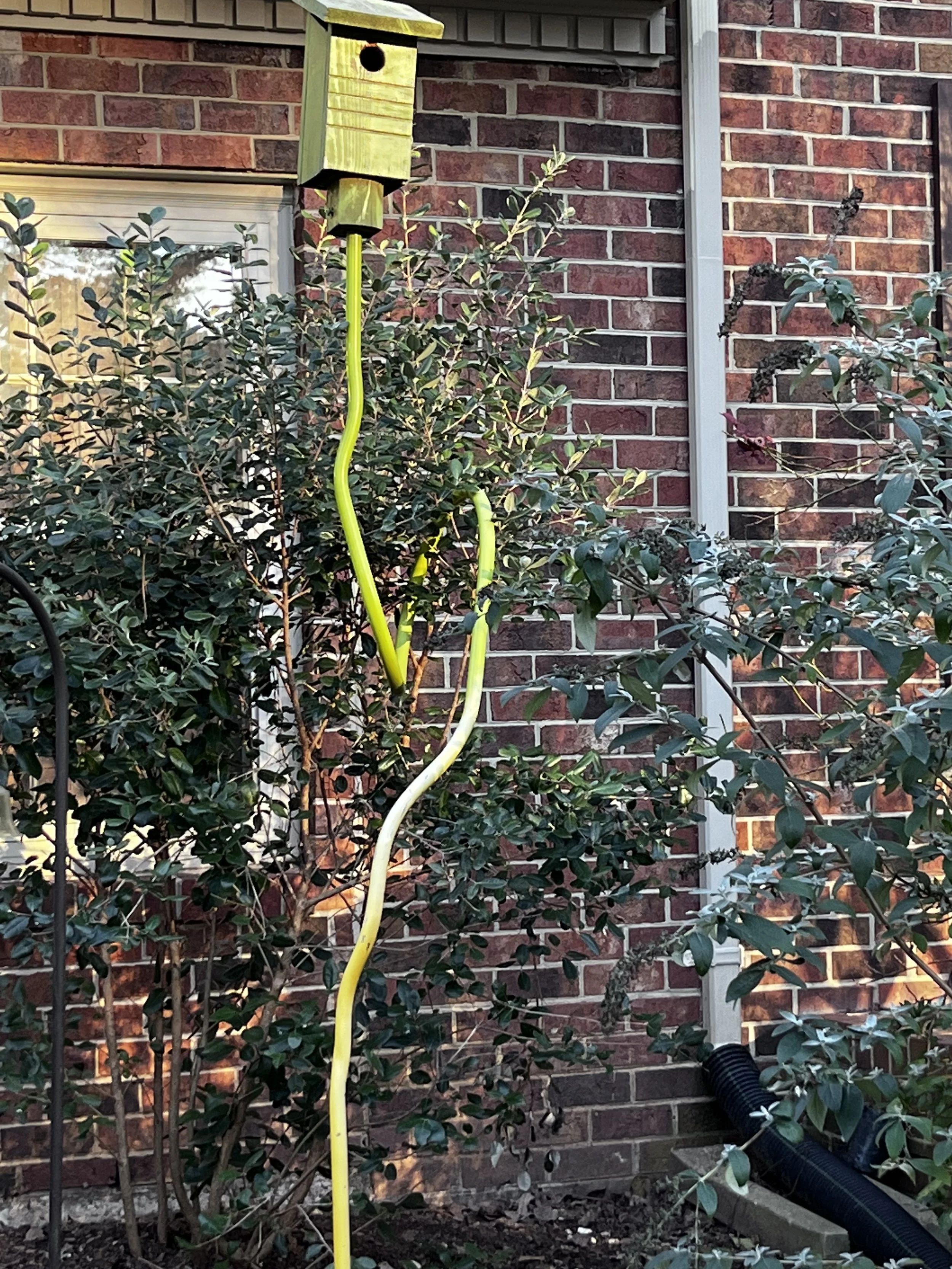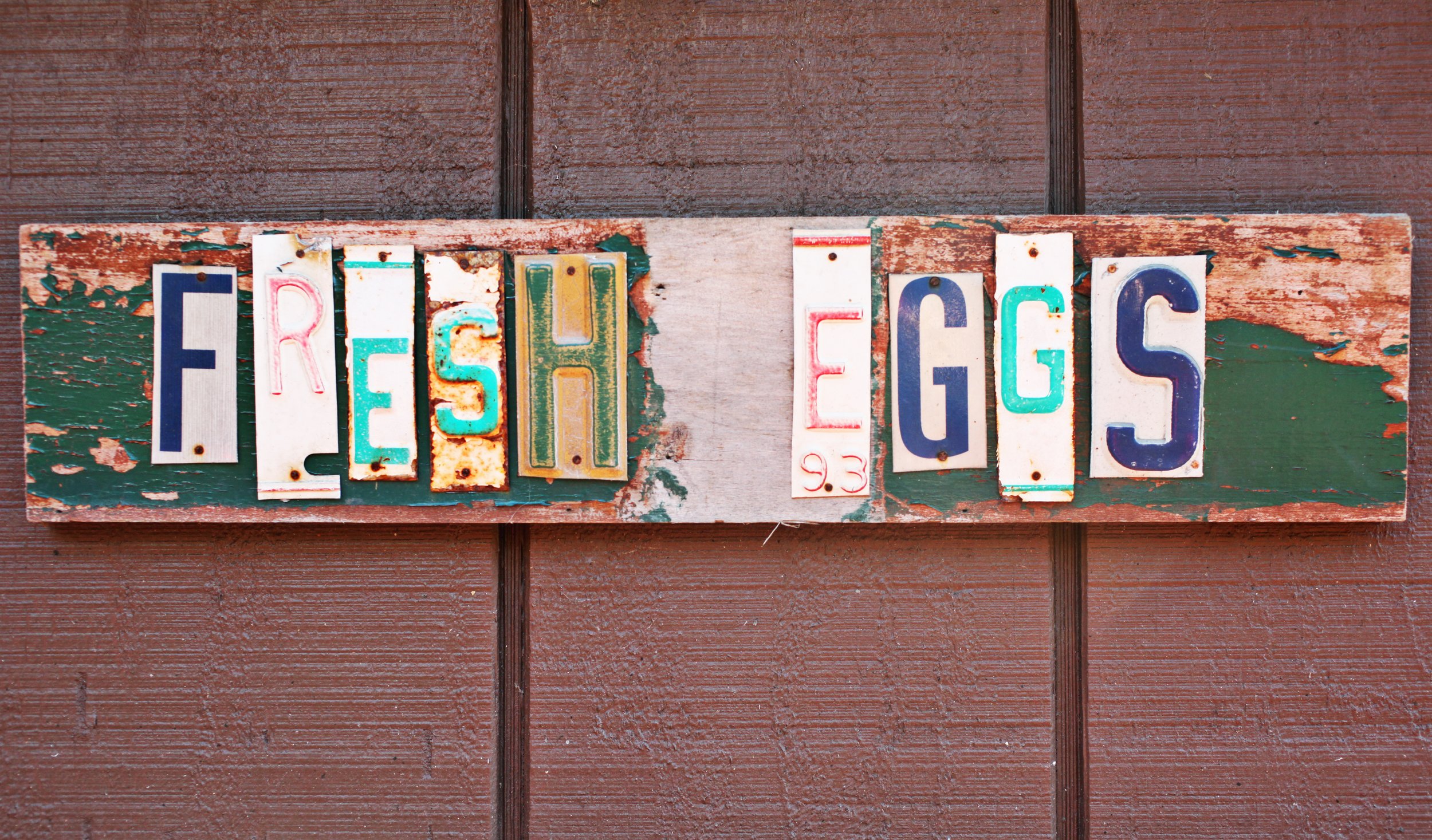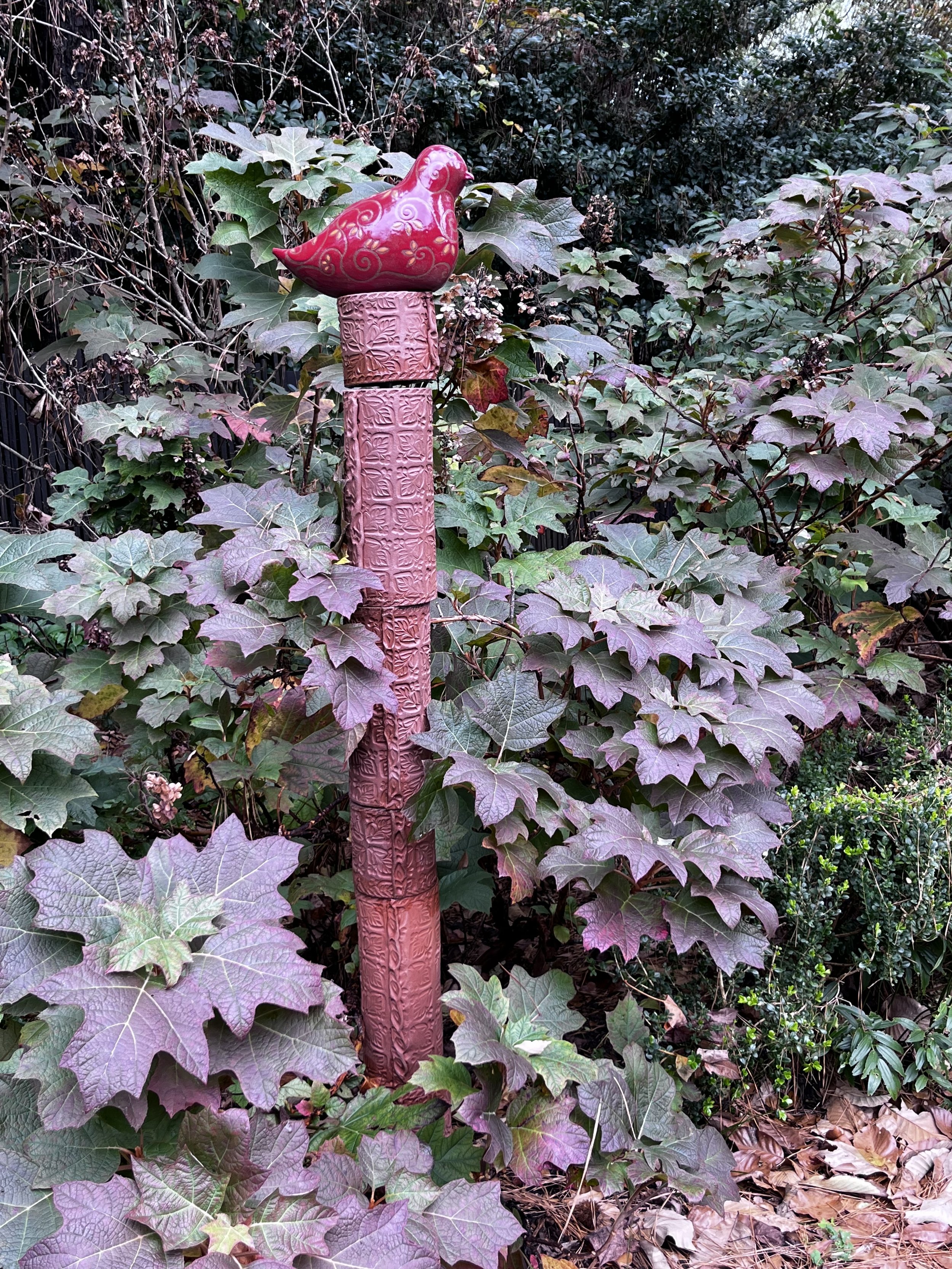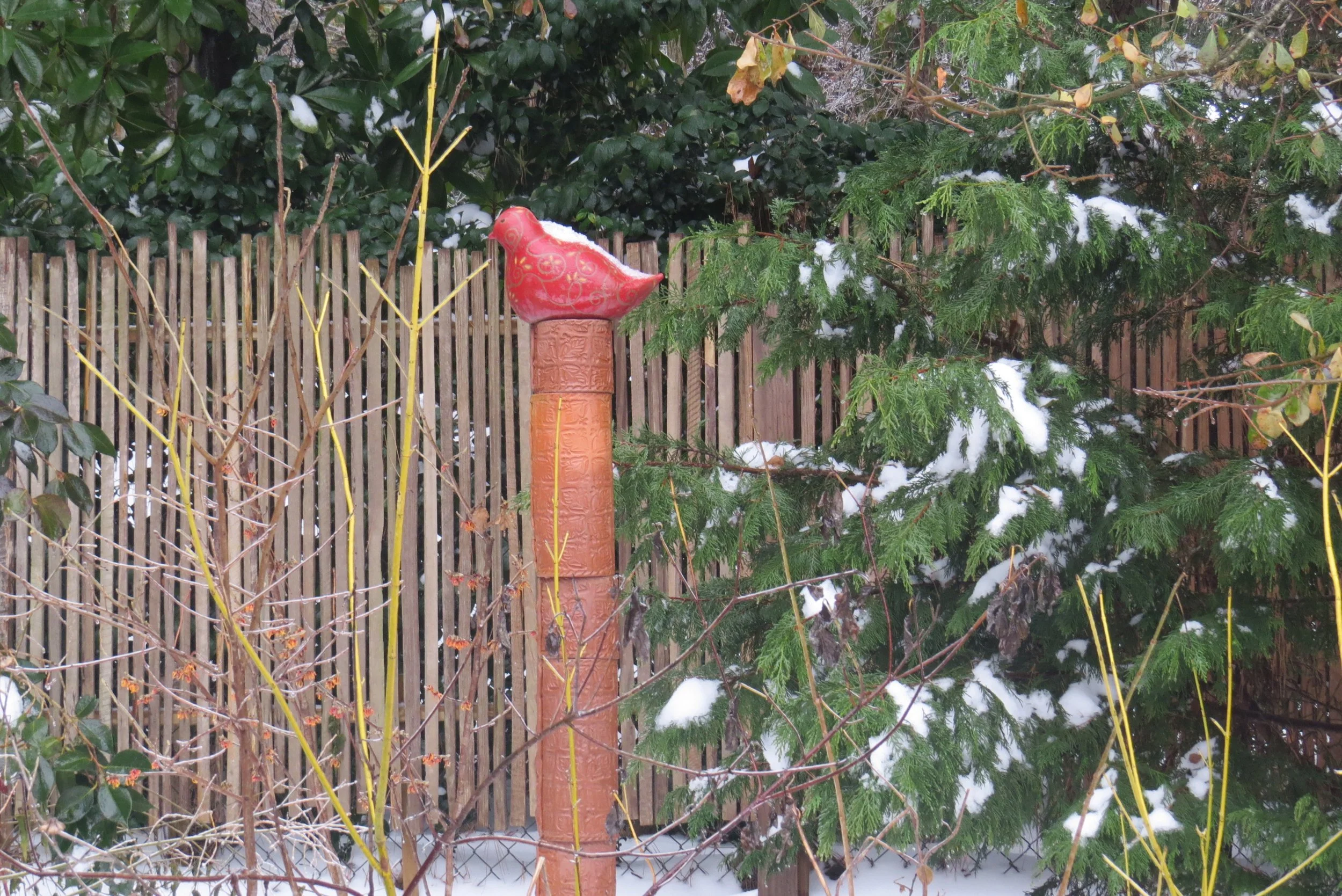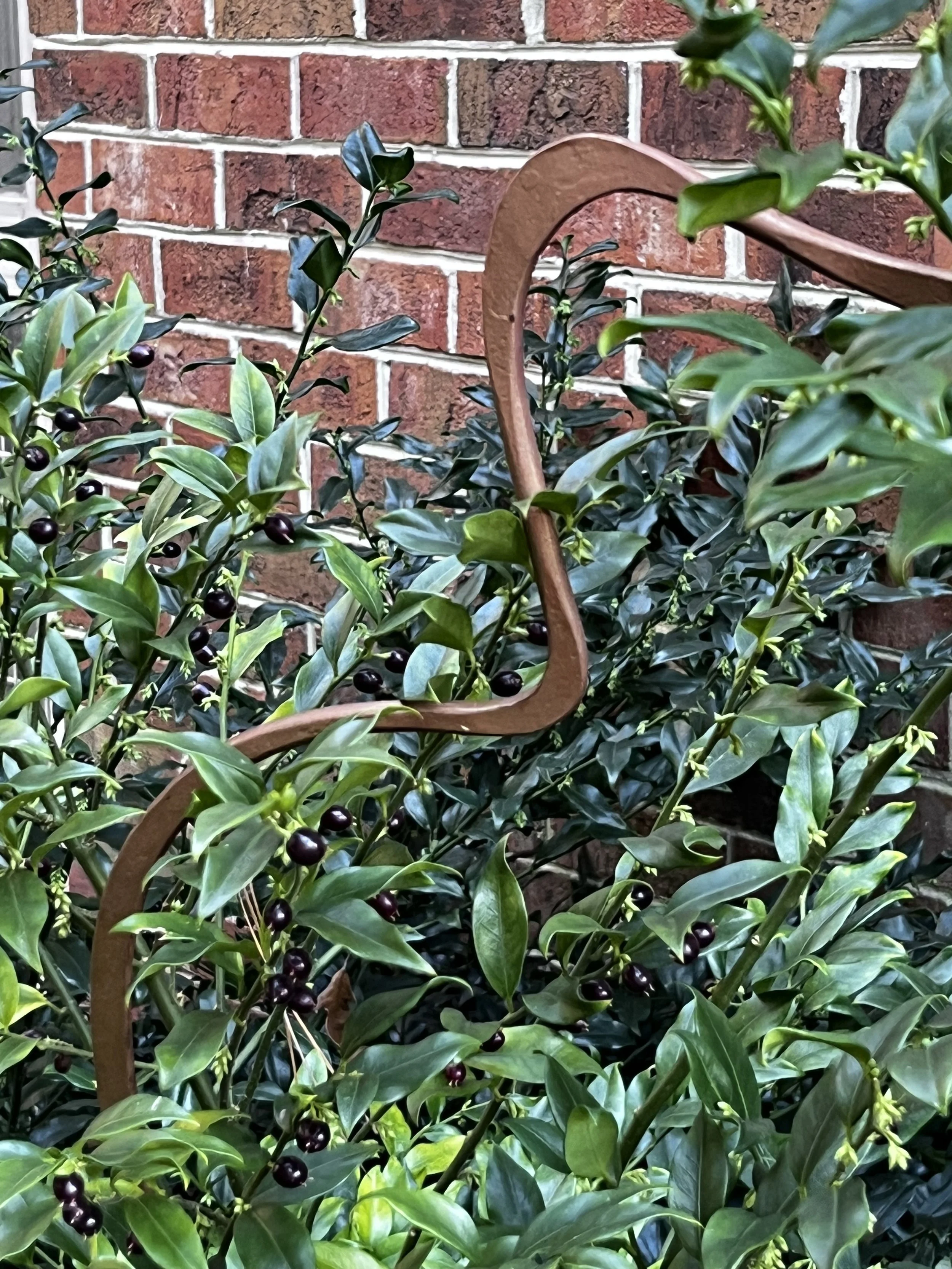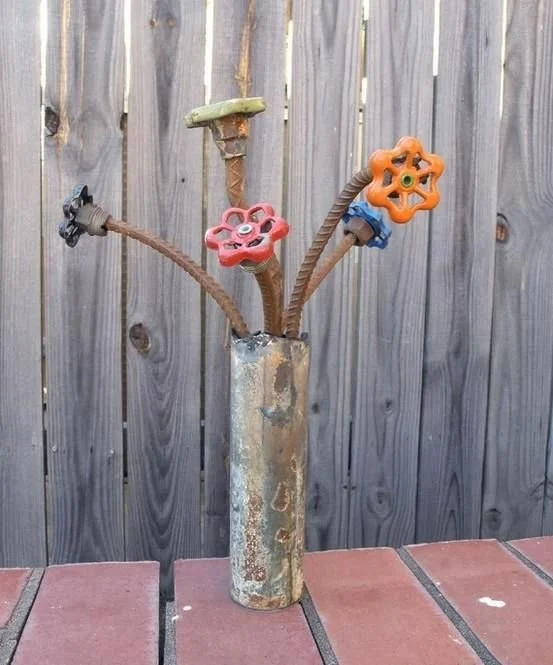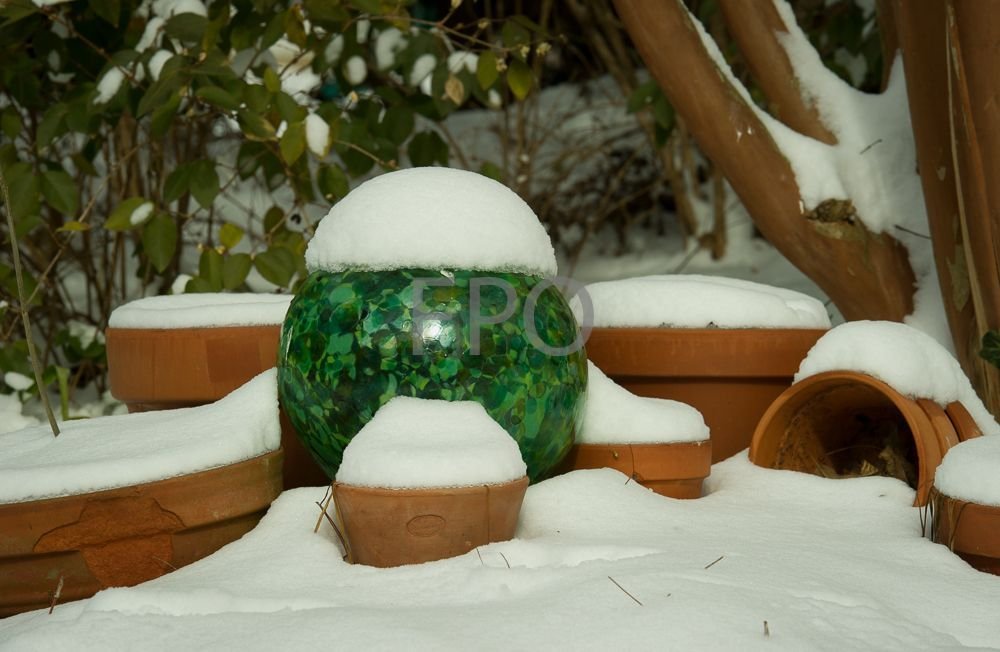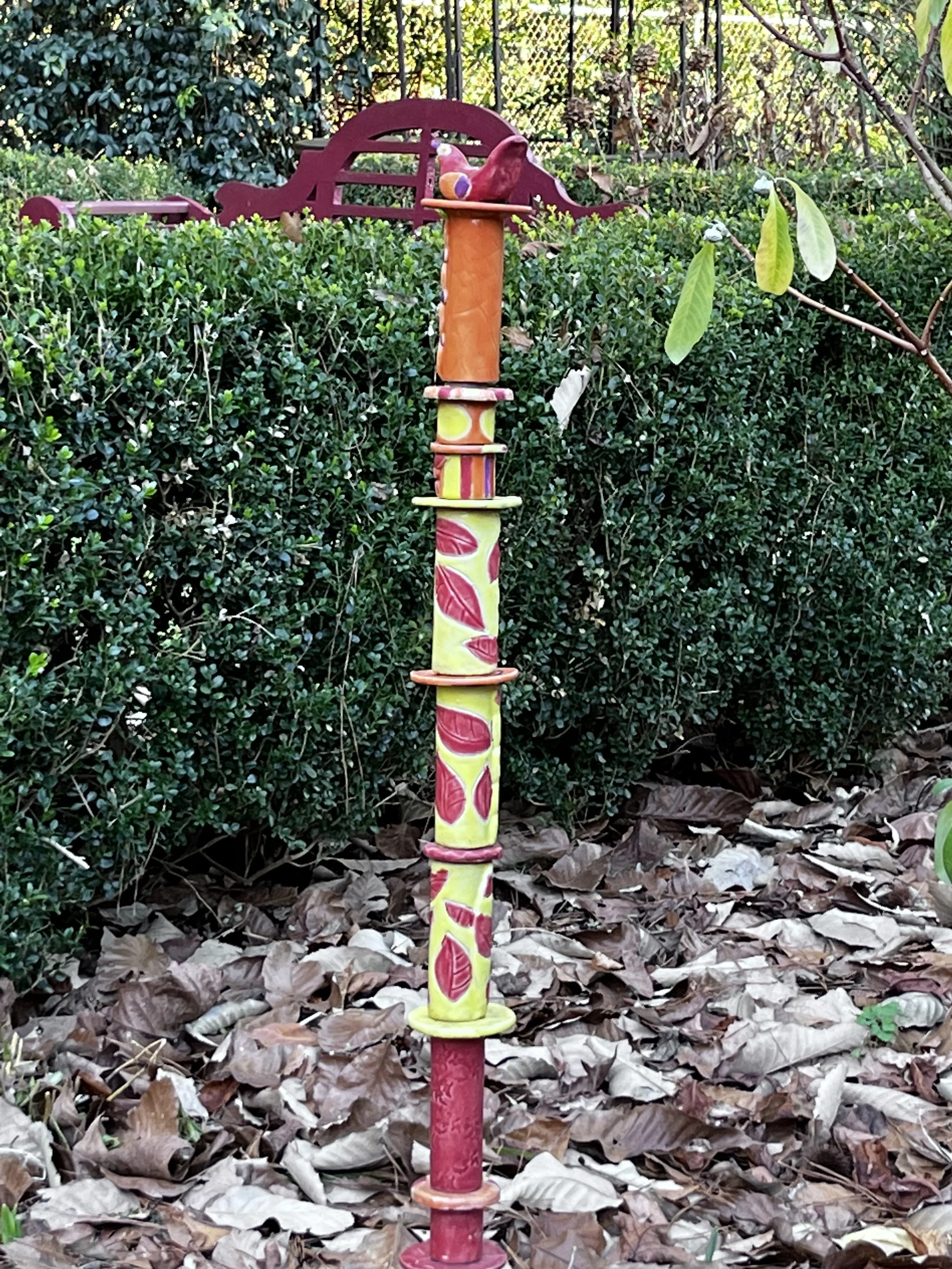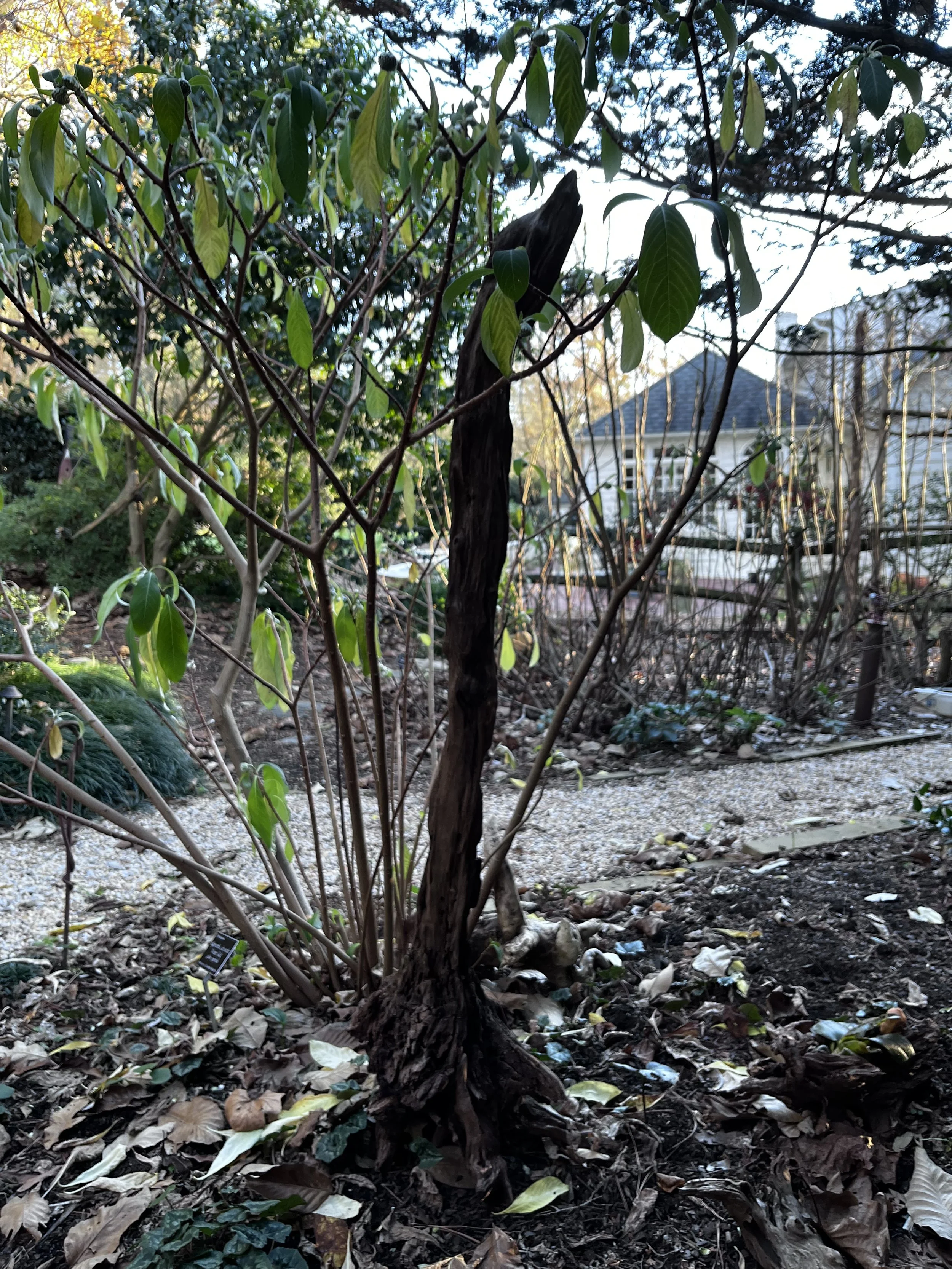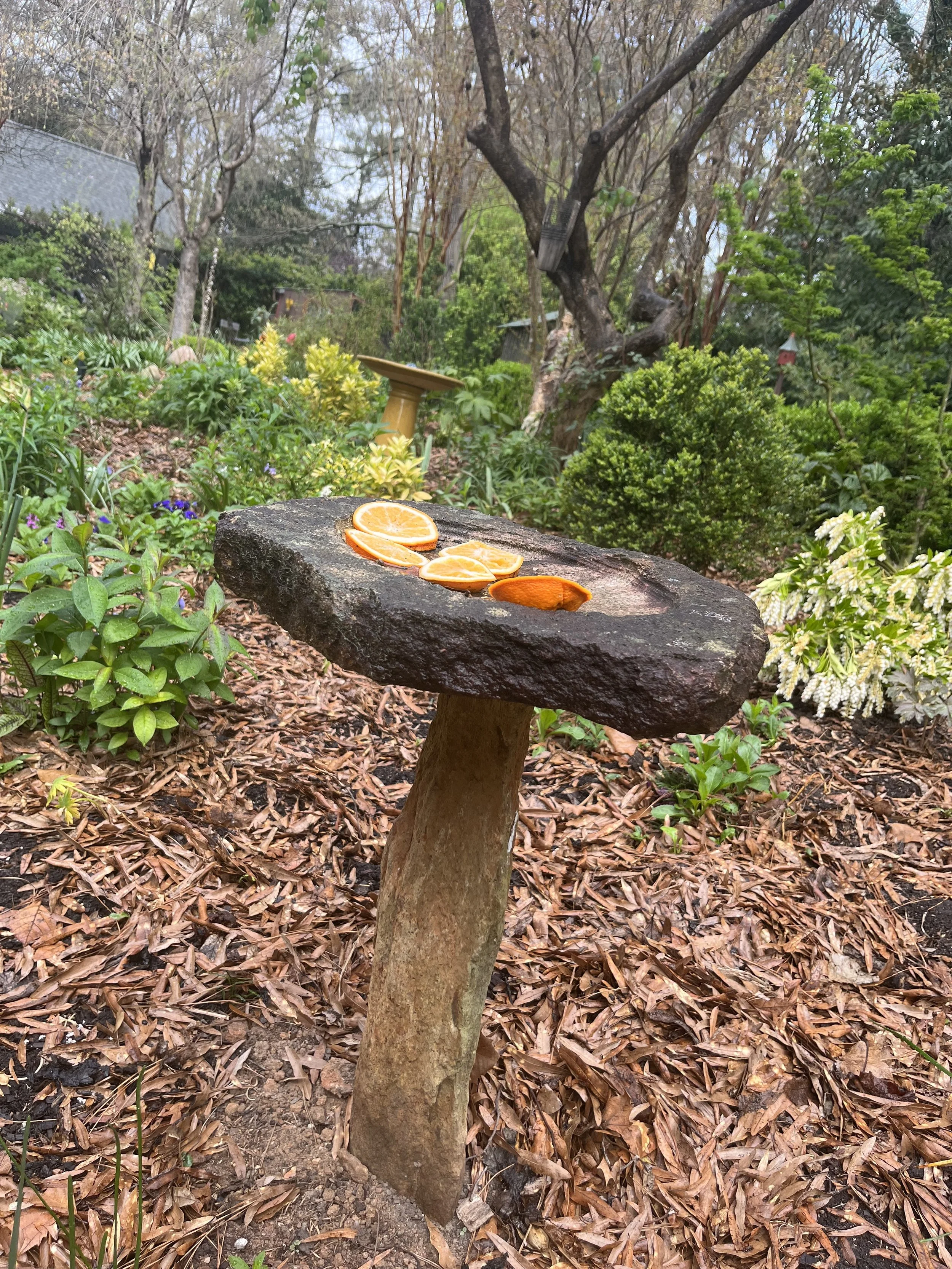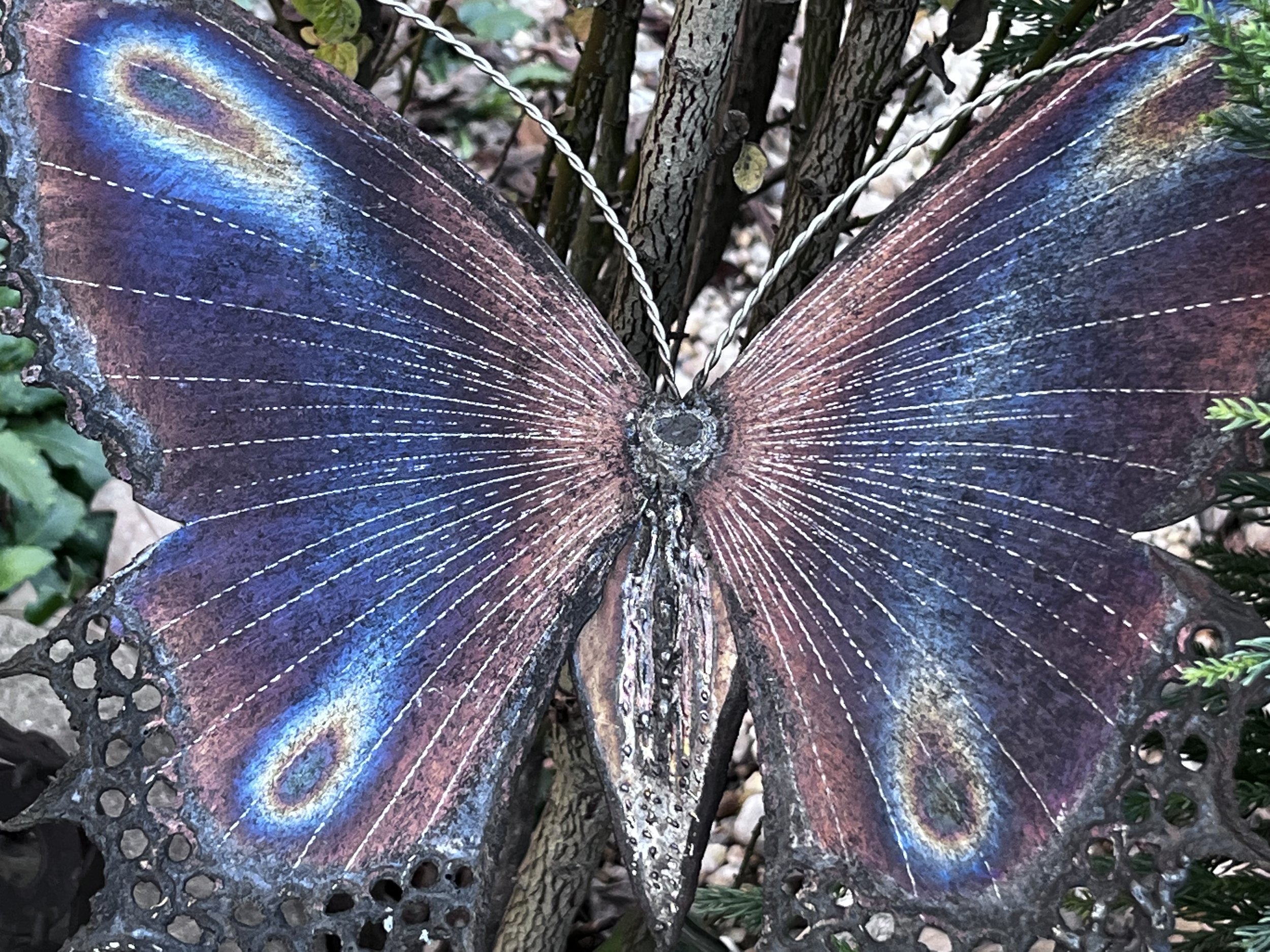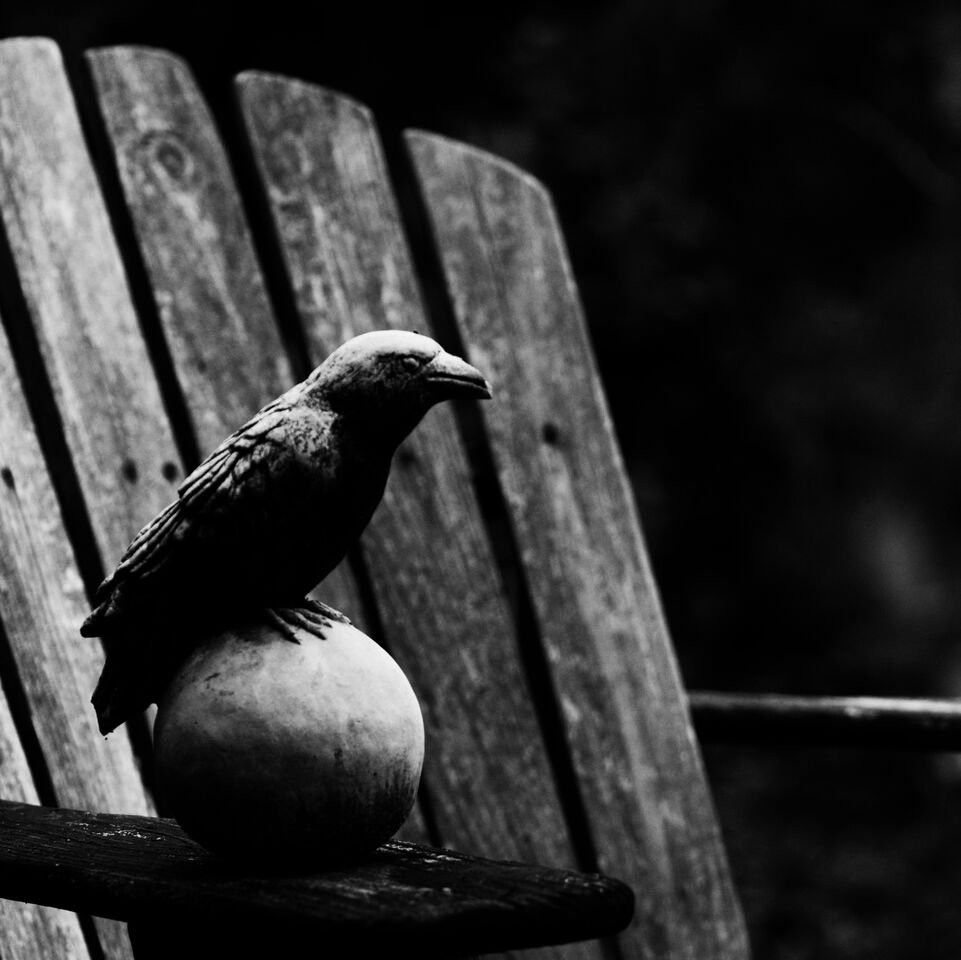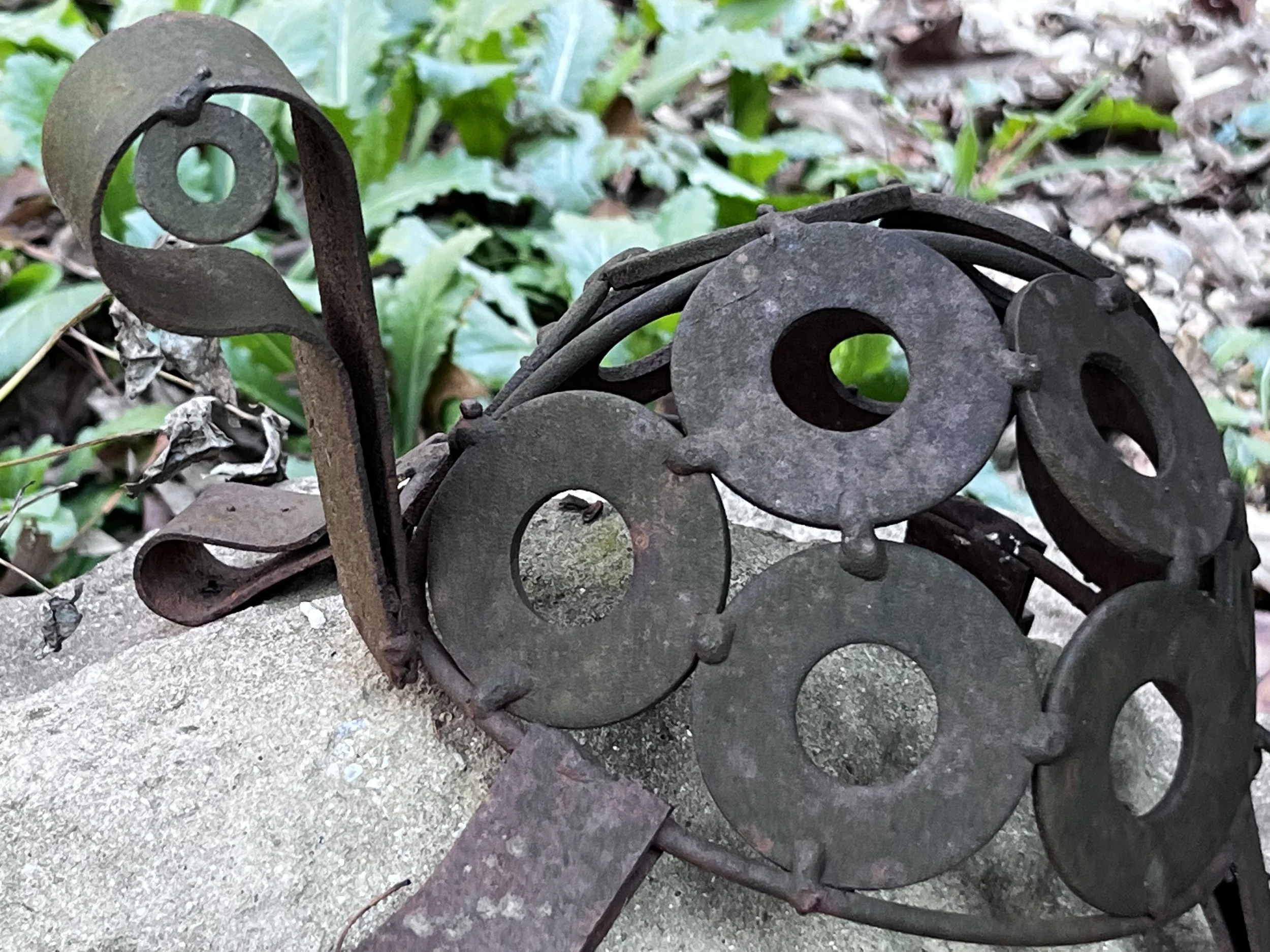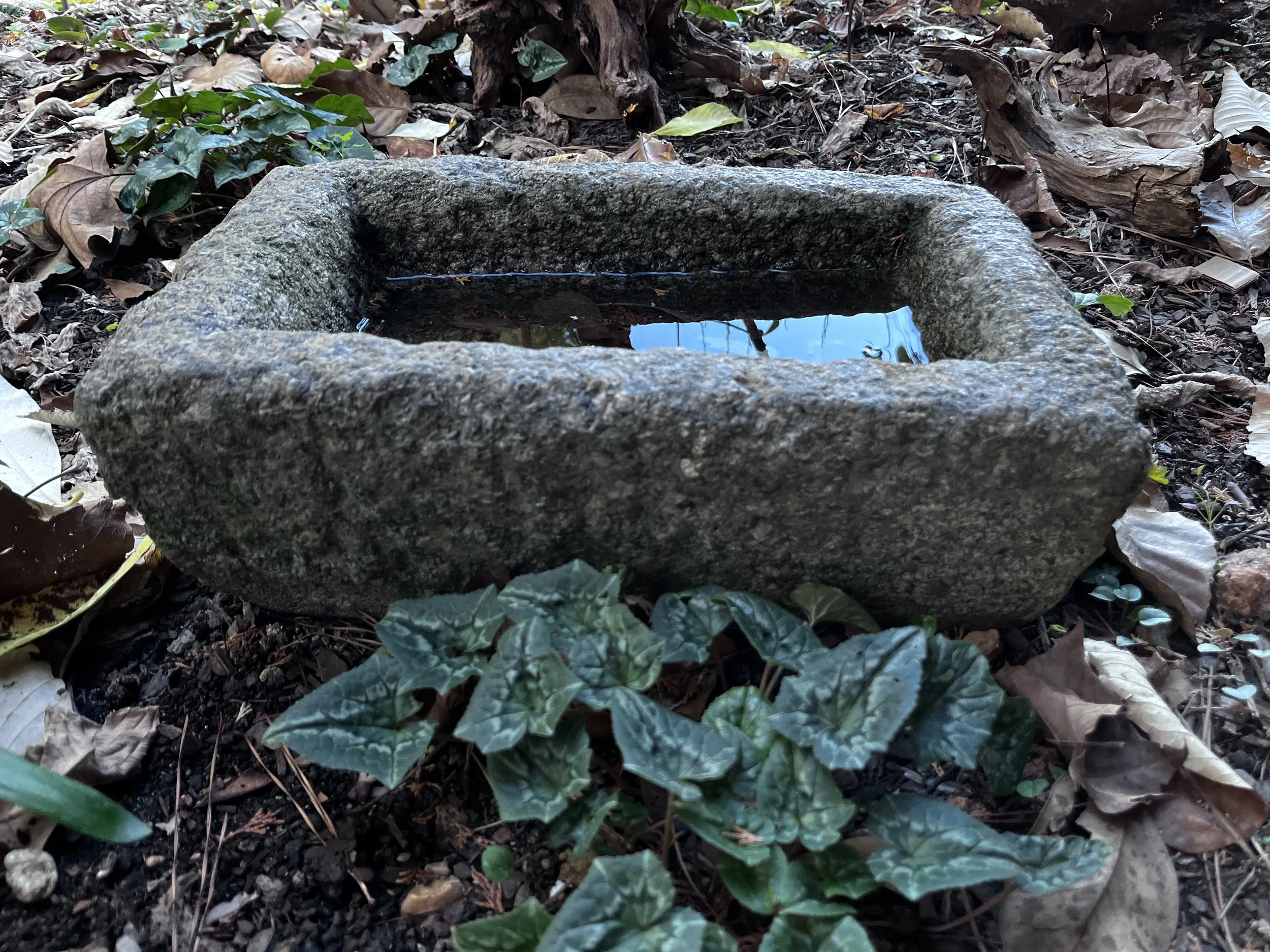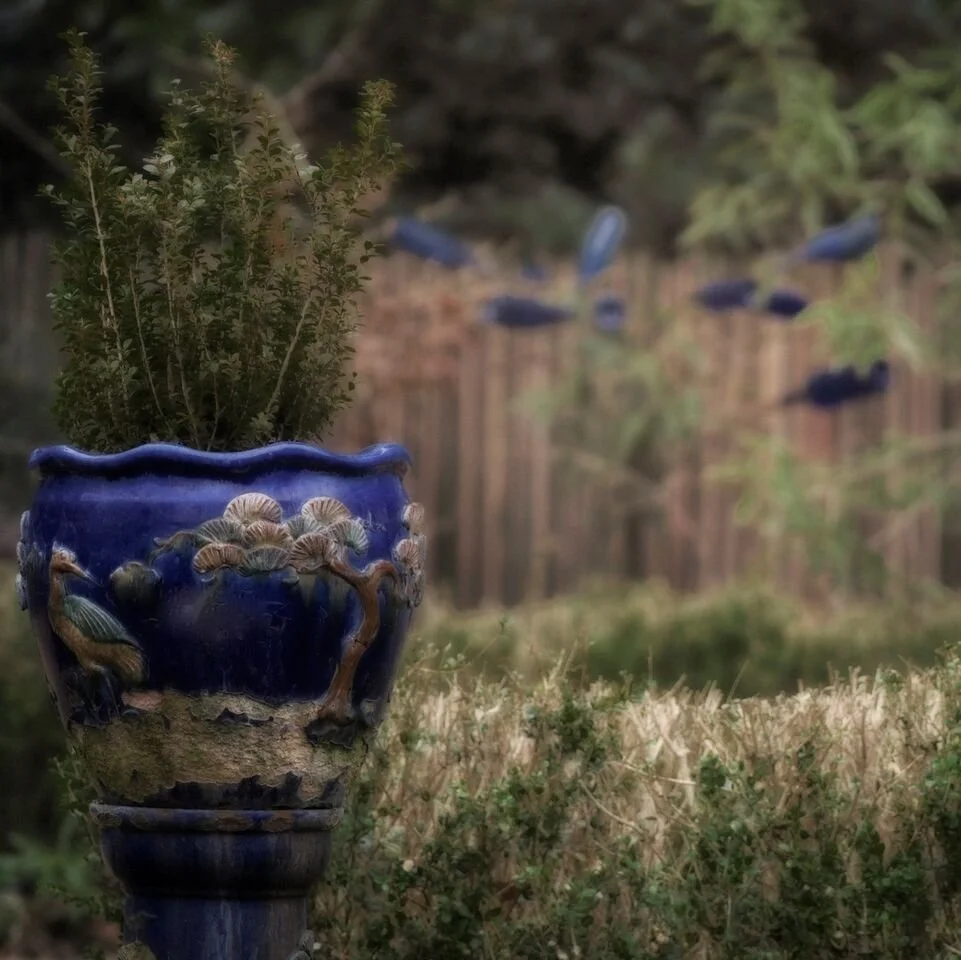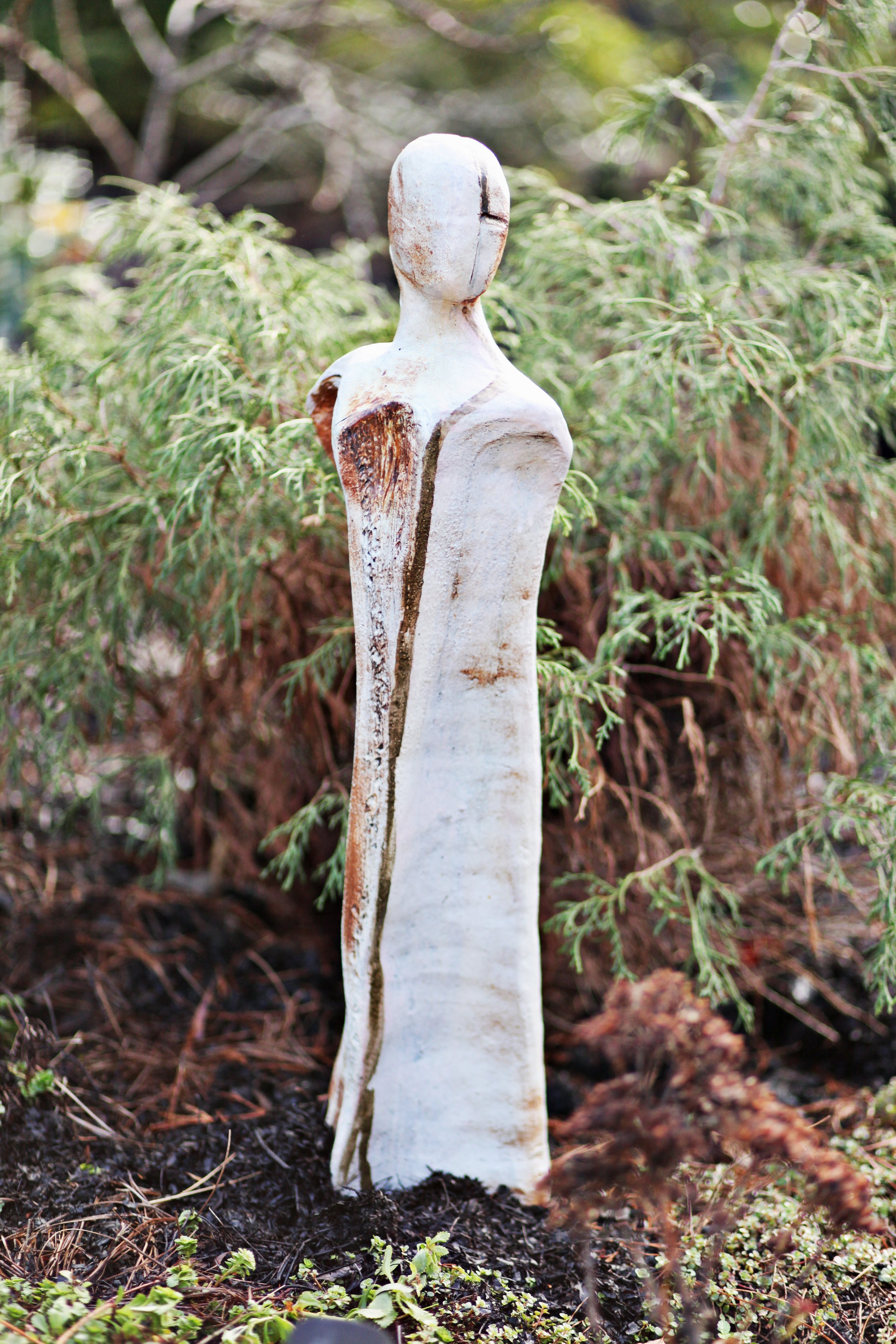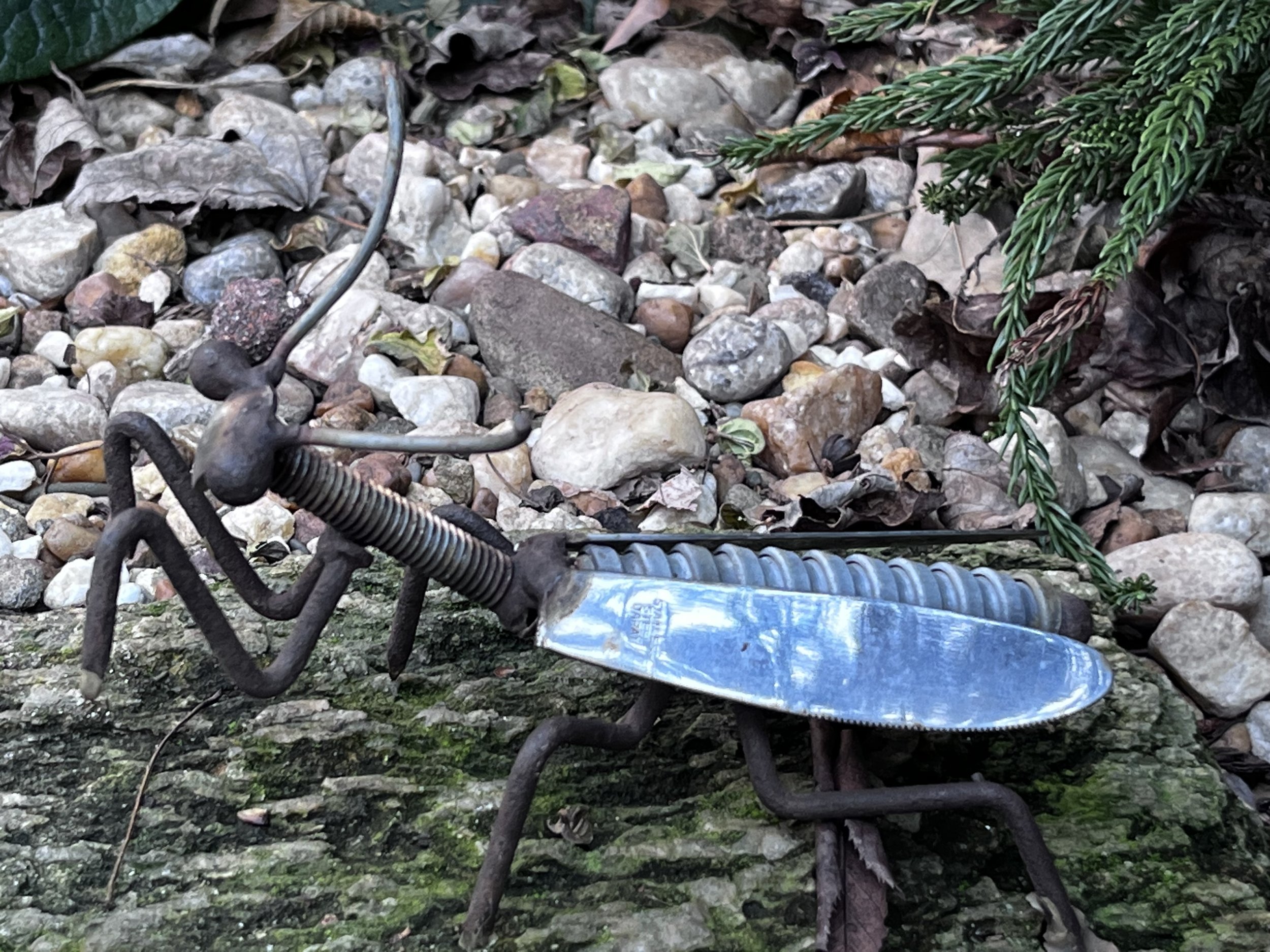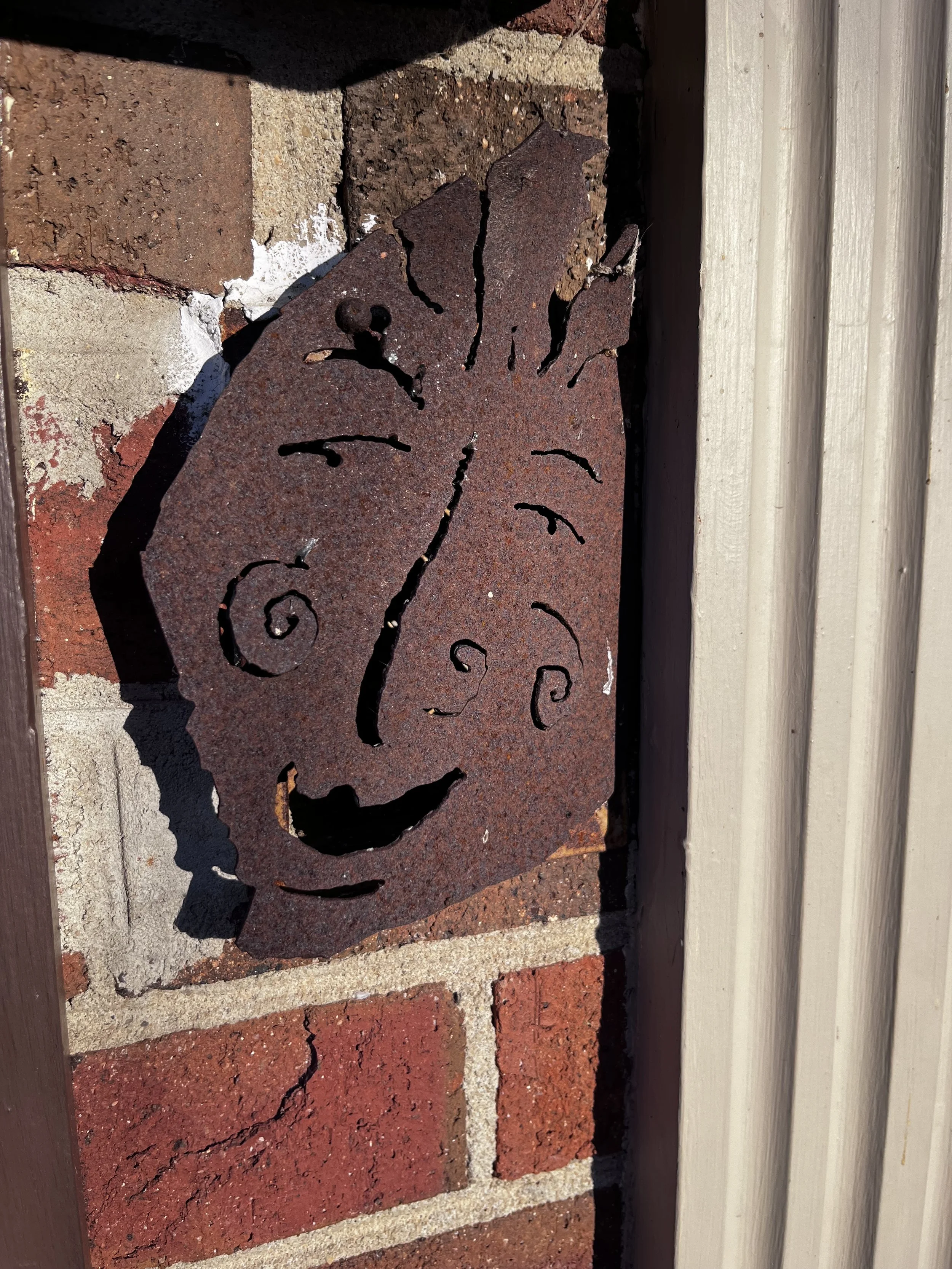The Mixed Border sign above is from the JCRA. I’m looking to get one for the Bee Better Naturally garden.
As gardeners move forward, we learn techniques to better our lives and our views. I have been transitioning my perennial border to the mixed border for the last five years. I don’t like to rush into these matters, and I didn’t want to fill my bed with just anything, so it took time to research and source the plants. I wanted style and year-round interest—this interest is what’s best for having a mixed border.
As time went by, the perennial border in the Bee Better Teaching Garden welcomed shrubs to fulfill the goal of transforming the herbaceous bed into a mixed border. I did this over five years, with perennials moving to other garden areas and adding low-growing shrubs each year.
A mixed border combines annuals, perennials, trees, and shrubs that skirt a wall, walkway, or fence. Here are suggested steps for creating this type of garden.
Mixed borders can take on many forms, from large-sized plantings like trees and tall grasses to small-sized ones, which is my approach. It’s all site-dependent. My design rule is that the further from the house the plants should and could be, the larger they should and could be. And I would be remiss if I didn’t mention that a mixed border can also be an island bed, with larger plantings in the center area and lower growing plants closer to the edge.
My mixed border is right off our back patio. There are trees in the beds (there is a long bed and a short bed, separated by rock steps through the area.) Once you reach the top of the steps, I call this area the upper garden. I didn’t want too many large plantings screening out the upper garden; plus, the scale of taller plantings wasn’t necessary since the border is viewed up close.
But more importantly, when I looked out the Kitchen window in the winter months, I wanted to see more than cold climate annuals and mulch.
Getting Started – Planning Your Border
A mixed border is simply a defined planting area, oftentimes with a backdrop of a hedge or fence, before the lawn begins. We chose to hedge ours with a row of boxwoods. Designing a mixed border allows you to create attractive planting displays, helps to add color, and gives the bed year-round interest.
You can begin from scratch or transform an existing garden, which can be done over time as resources become available.
If time allows, say you want to prepare the bed in the summer for fall planting. I recommend using landscapers’ paint to lay out the design you want to see. Add cardboard and cover this area with a good four inches of mulch. I prefer a composted leaf mulch. This way, not tilling is needed, destroying soil structure. The natural microbes and earthworms will do the work for you.
The concept of the right plant and right place can’t be emphasized enough and is often seen in my writings. With this concept, your plantings are more climate resilient and reduce costs through plant health problems dying and disappointment.
But remember, plants die, and it is not necessarily your fault.
Plant List in the Bee Better Naturally Teaching Garden—Morning sun, afternoon shade.
Abelia, Abelia × grandiflora ‘Frosty’
Acorus, Acorus gramineus ‘Ogon’
Adam’s Needle, Yucca filamentosa
Anemone,
Anise, Illicium parviflorum ‘Florida Sunshine’
Anise, Illicium floridanum ‘Woodland Ruby’
Arborvitae Fern, Selaginella braunii
Azalea, Rhododendron ‘Gibraltar’
Bear’s Breeches, Acanthus mollis
Beardtongue, Penstemon digitalis
Boxwood, Buxus sempervirens ‘Highlander’
Boxwood ‘Gordo’, Buxus x ‘Conrowe’
Camellia, Camellia sasanqua 'Cleopatra'
Canna, Canna glauca
Cast Iron, Aspidistra elatior
Celedine Poppy, Stylophorum diphyllum
Cherry, Prunus avium ‘Stella’
Christmas Ferns, Polystichum acrostichoides
Climbing Rose, Rosa spp.
Columbine, Aquilegia canadensis
Cone Flower, Echinacea purpurea
Coral Bells, Heuchera villosa
Crape Myrtle, Lagerstroemia indica ‘Zuni’
Crinkle-root, not this!?!? What is it
Crocus, Crocus tommasinianus
Daphne, Daphne odora, variegated
Distylium, Distylium ‘Swing Low'
Dwarf Fothergilla, Fothergilla gardenii 'Mount Airy'
Dwarf Mondo, Ophiopogon japonicus
Edgeworthia, Edgeworthia chrysantha
Evergreen Solomon’s Seal, Disporopsis pernyi
Foxglove, Digitalis purpurea
Fennel, Foeniculum vulgare
Flowering Apricot, Prunus mume ‘Bridal Veil’
Green and Gold, Chrysogonum australe 'Eco Lacquered Spider'
Germander, Teucrium chamaedrys
Gingers, Asarum spp.
Joe-Pye Weed, Eupatorium dubium ‘Little Joe’
Ivy-leaved Cyclamen, Cyclamen hederifolium
Japanese Aralia, Fatsia japonica
Japanese Maple, Acre shirasawanum ‘Autumn Moon’
Japanese Maple, Acer palmatum 'Shishigashira'
Japanese Roof Iris, Iris tectorum
Celandine, ????
Little Brown Jug, Hexastylis arifolia
Lilac, Syringa × ‘Boomerang’
Lily, Lilium formosanum
Meadow Sage, Salvia pratensis
Meadow Sage, Salvia pratensis
Needle, Yucca filamentosa
Oakleaf Hydrangea, Hydrangea quercifolia ’Ruby Slippers’
Pomegranate, Punica granatum
Rohdea variegated, Rohdea japonica, variegated.
Shasta Daisy, Leucanthemum maximum
St. Joh’s Wort, Hypericum patvlum
Strawberry, Fragaria × ananassa
Sweet Box, Sarcococca confusa
Tall Asters, Aster tataricus
Tree peony, Paeonia suffruticos
Pomegranate, Punica granatum
Rohdea variegated, Rohdea japonica, variegated.
Viburnum, Viburnum davidii × tinus ‘Moonlit Lace’
Viburnum, Viburnum obovatum ‘Raulston Hardy’
Viburnum ???
Virginia Sweetspire, Itea virginica
Which hazel, Hamamelis virginiana
White Wood Aster, Eurybia divaricata
Wintergreen, Gaultheria procumbens
Yew, Taxus spp.
